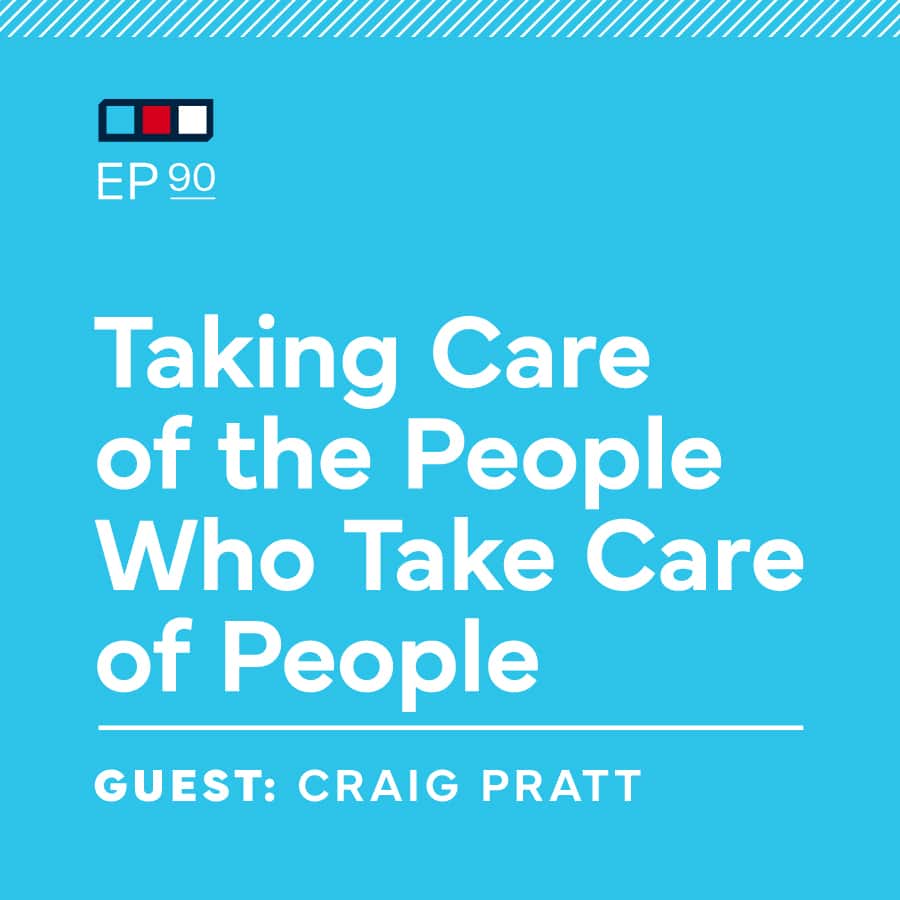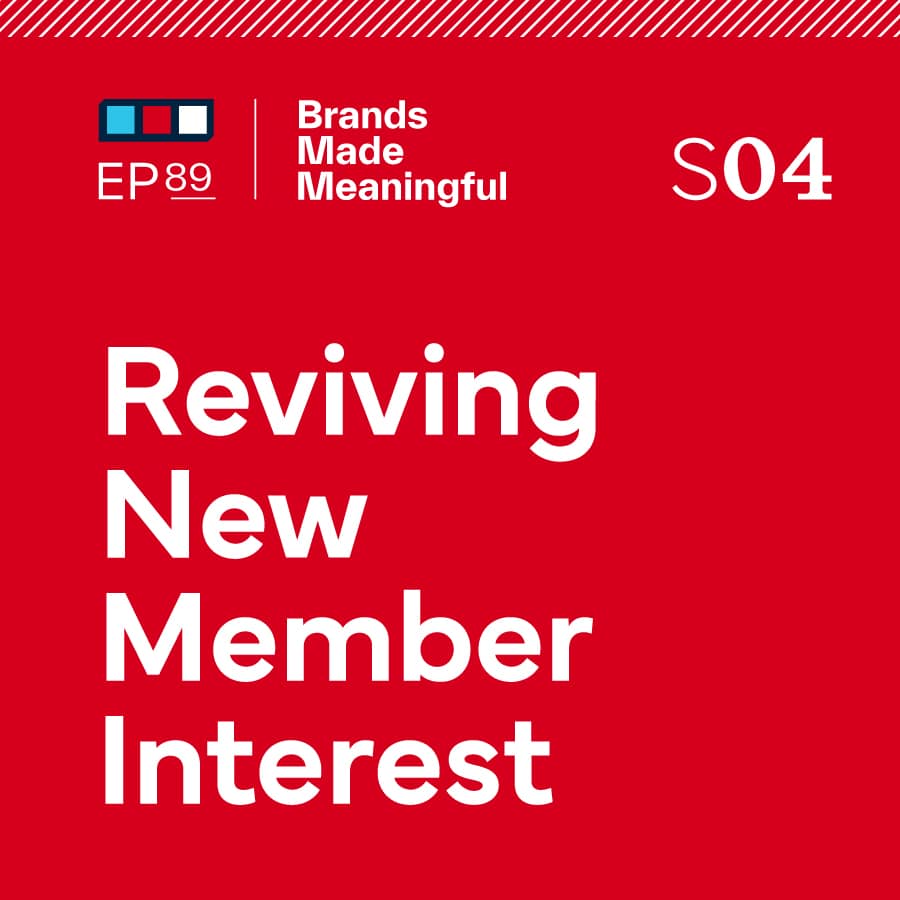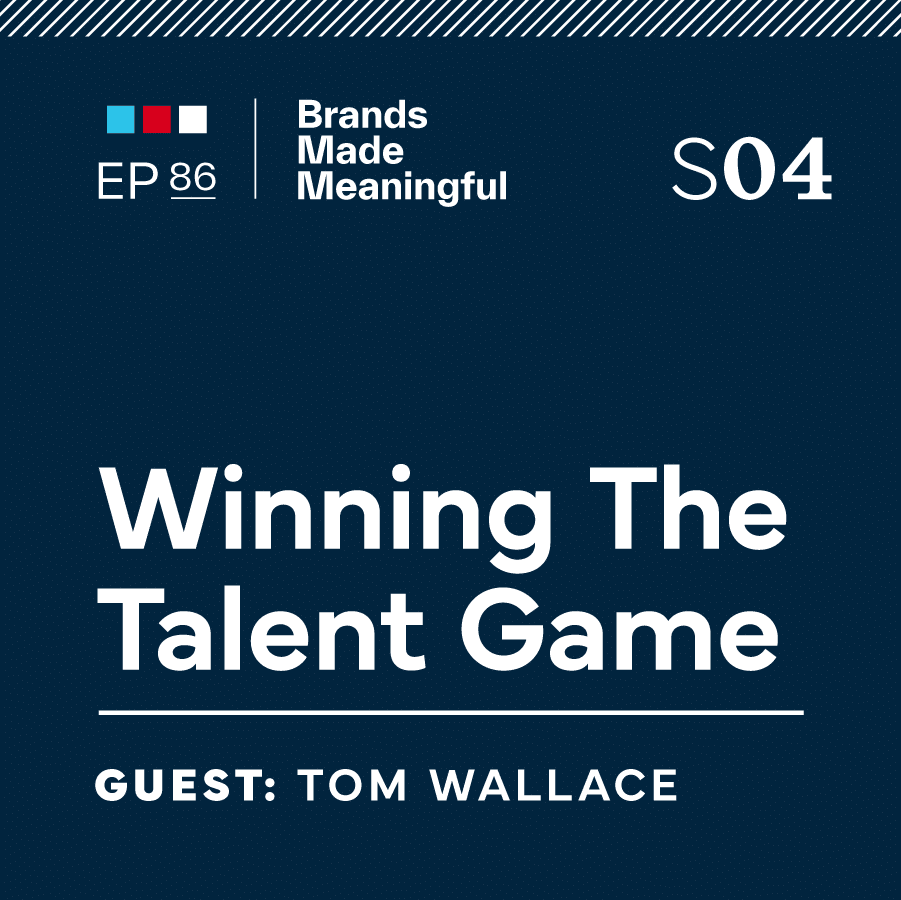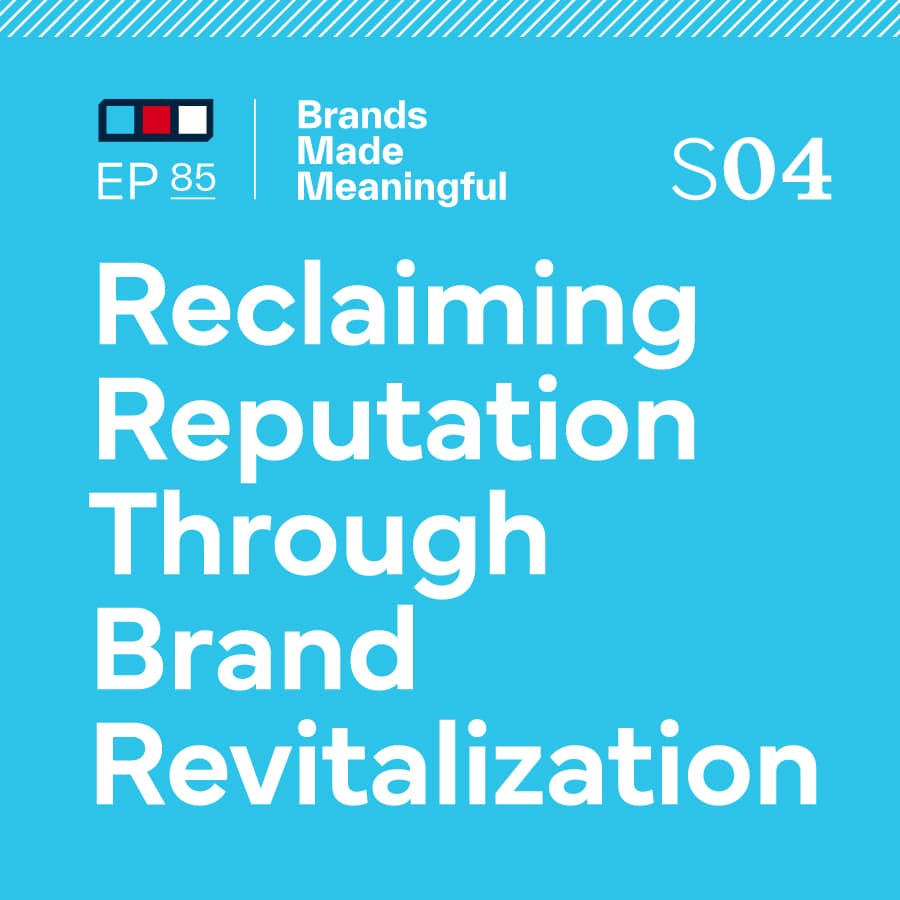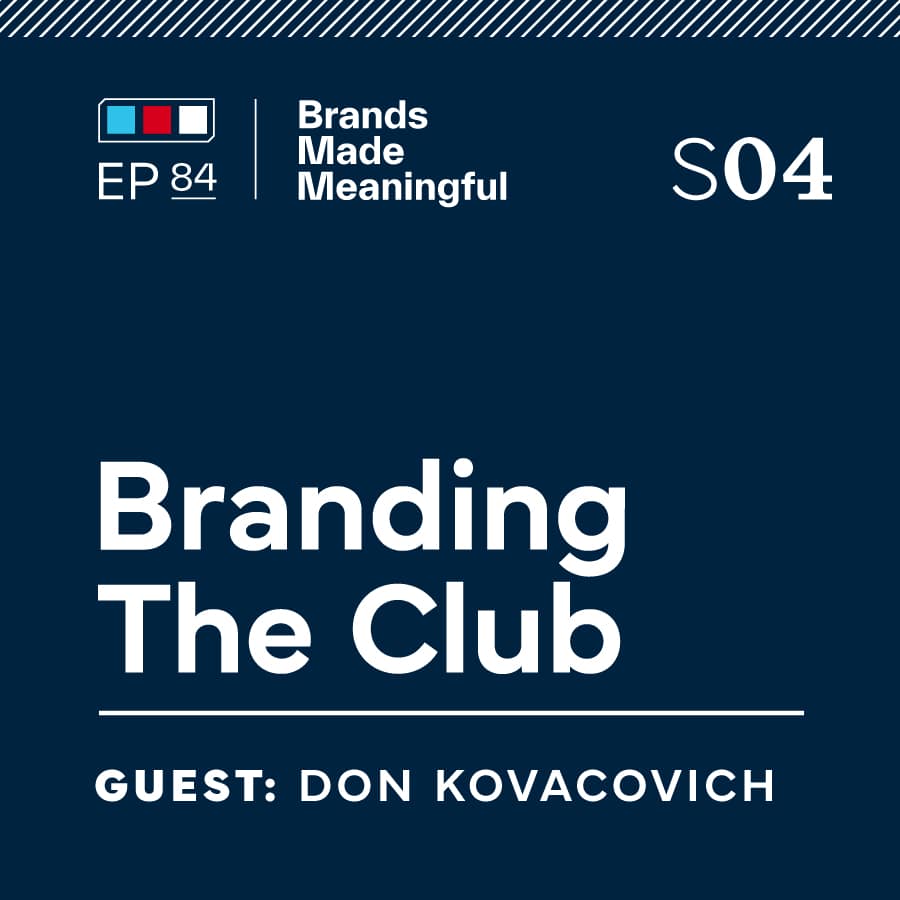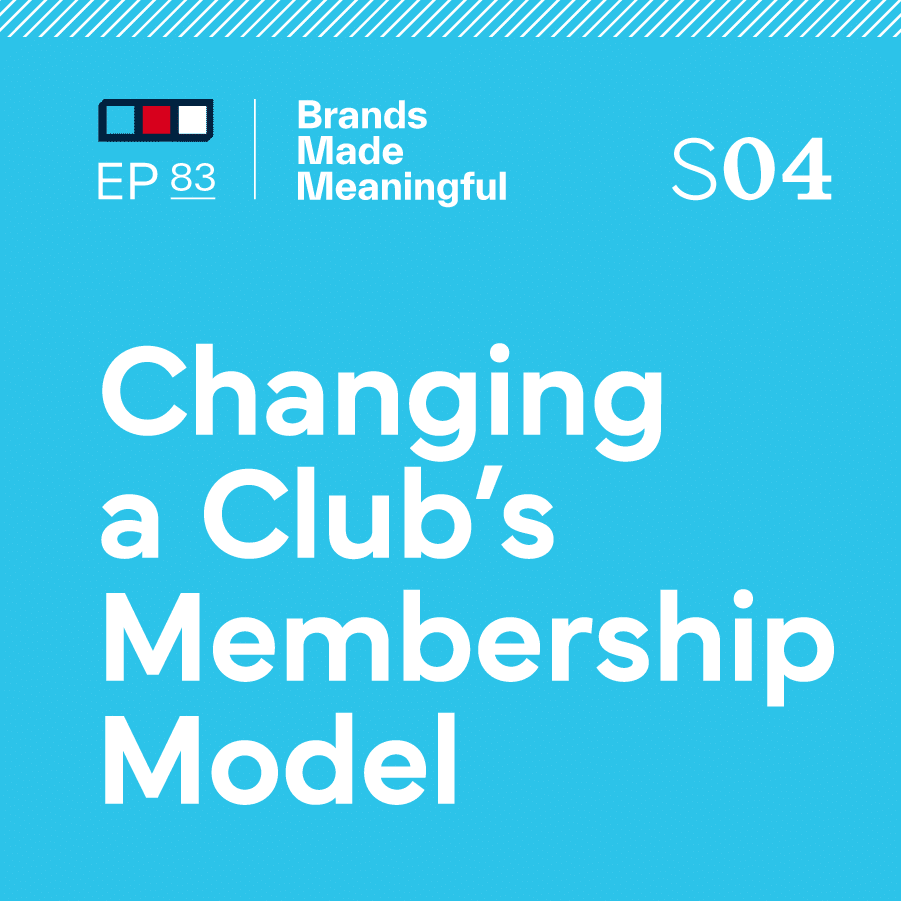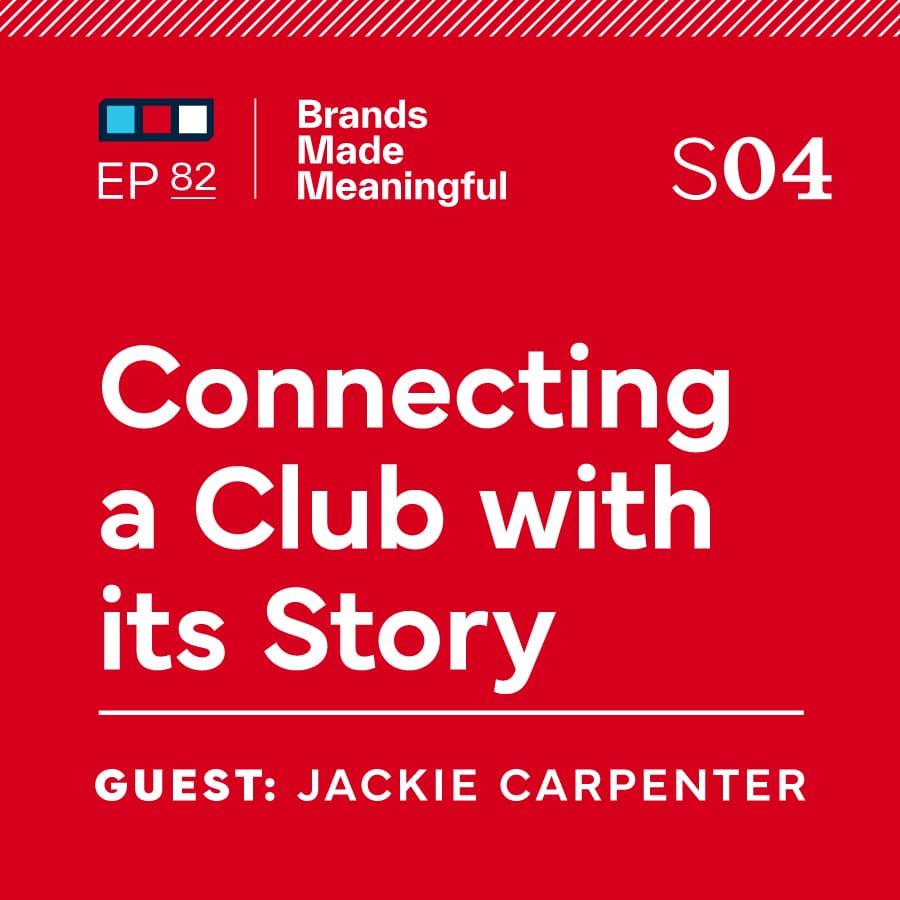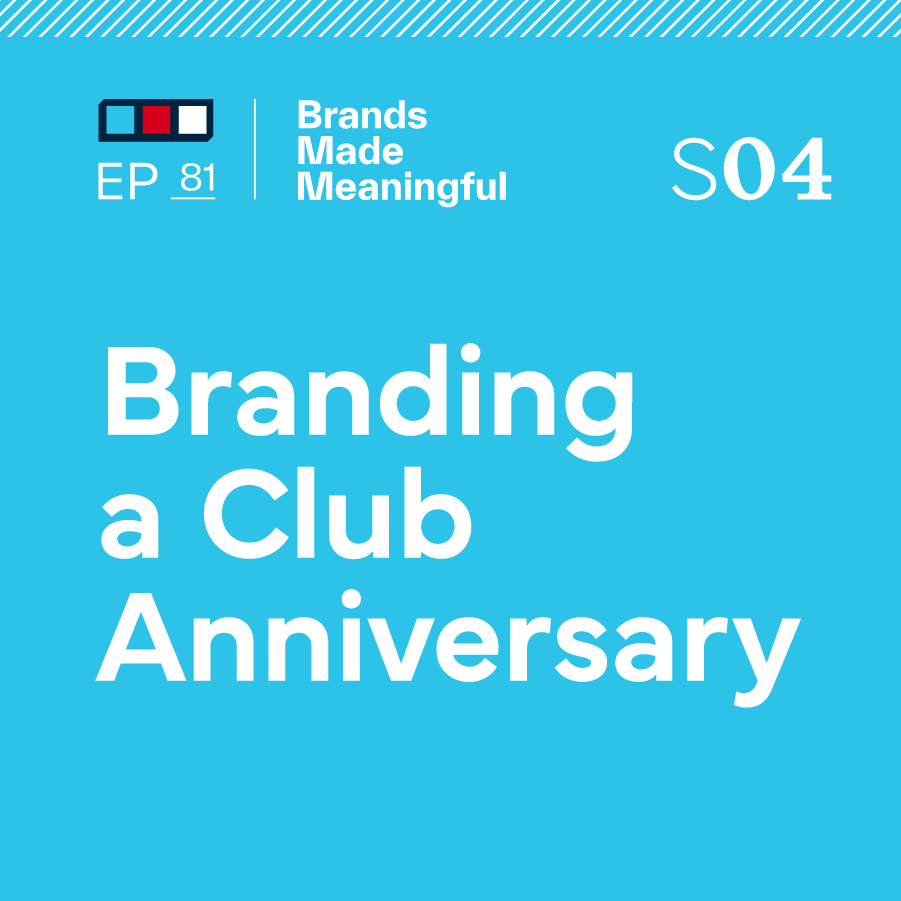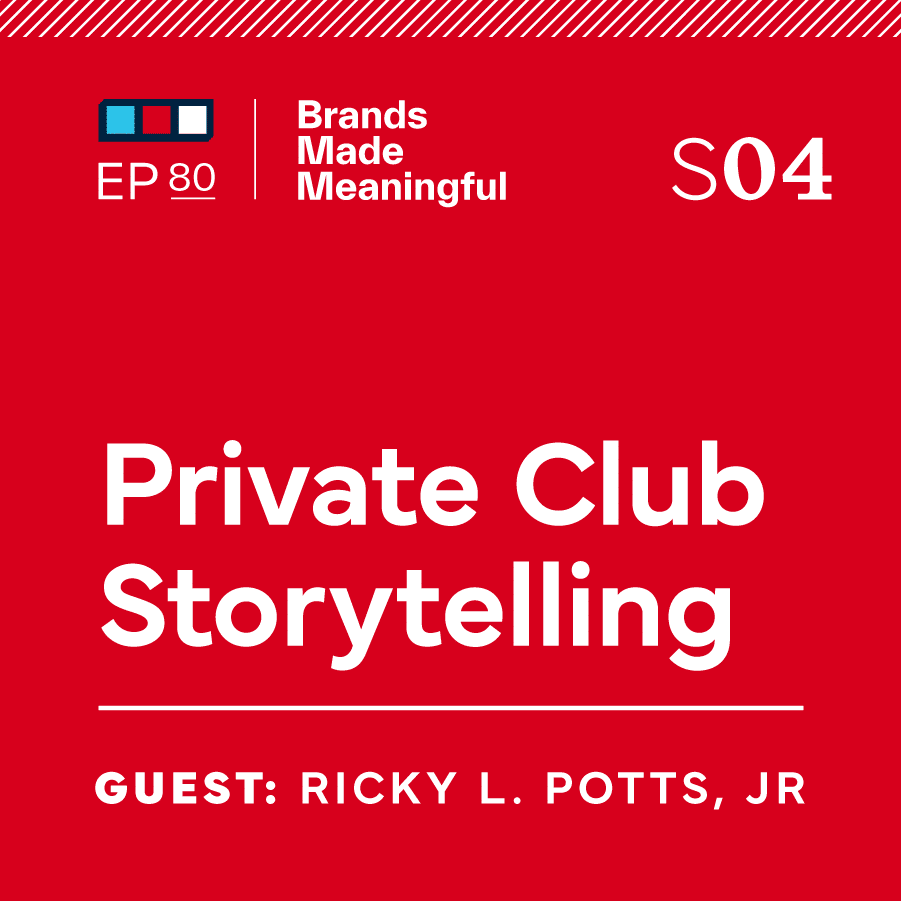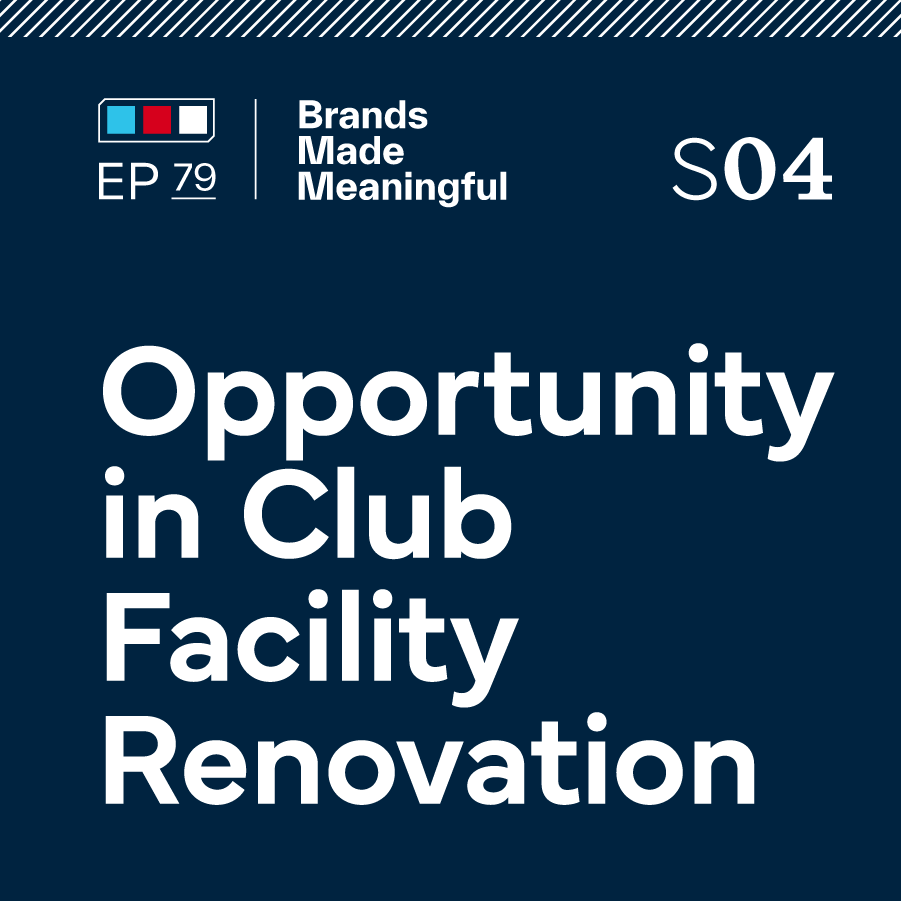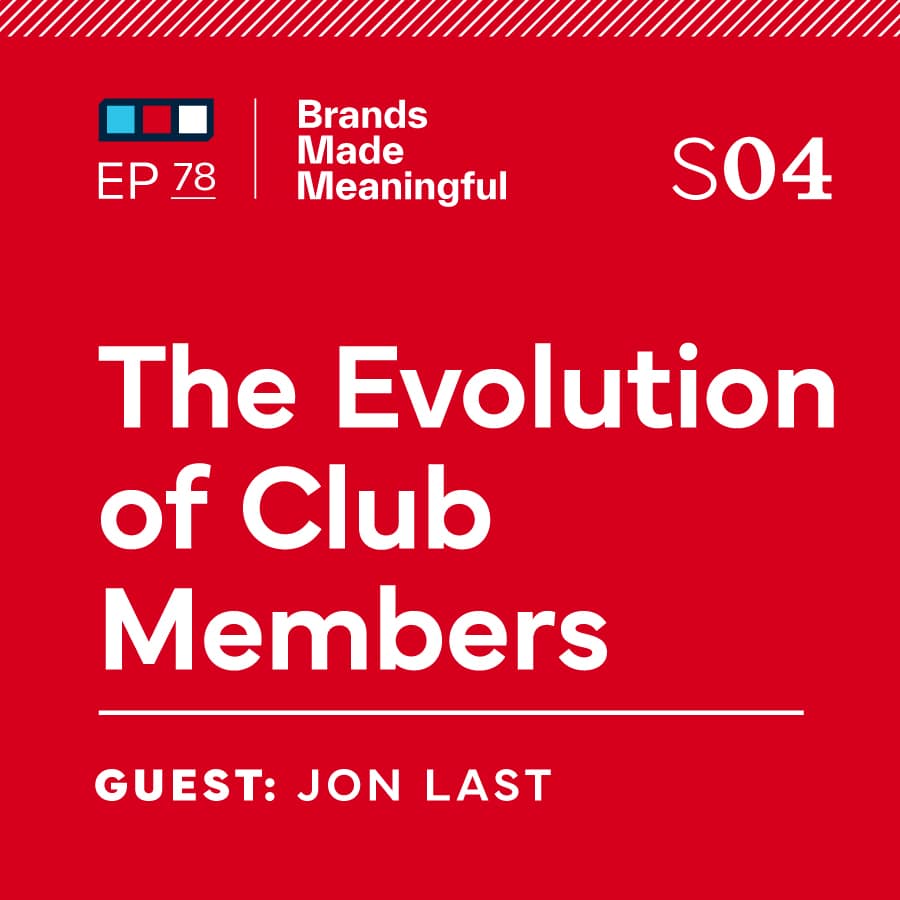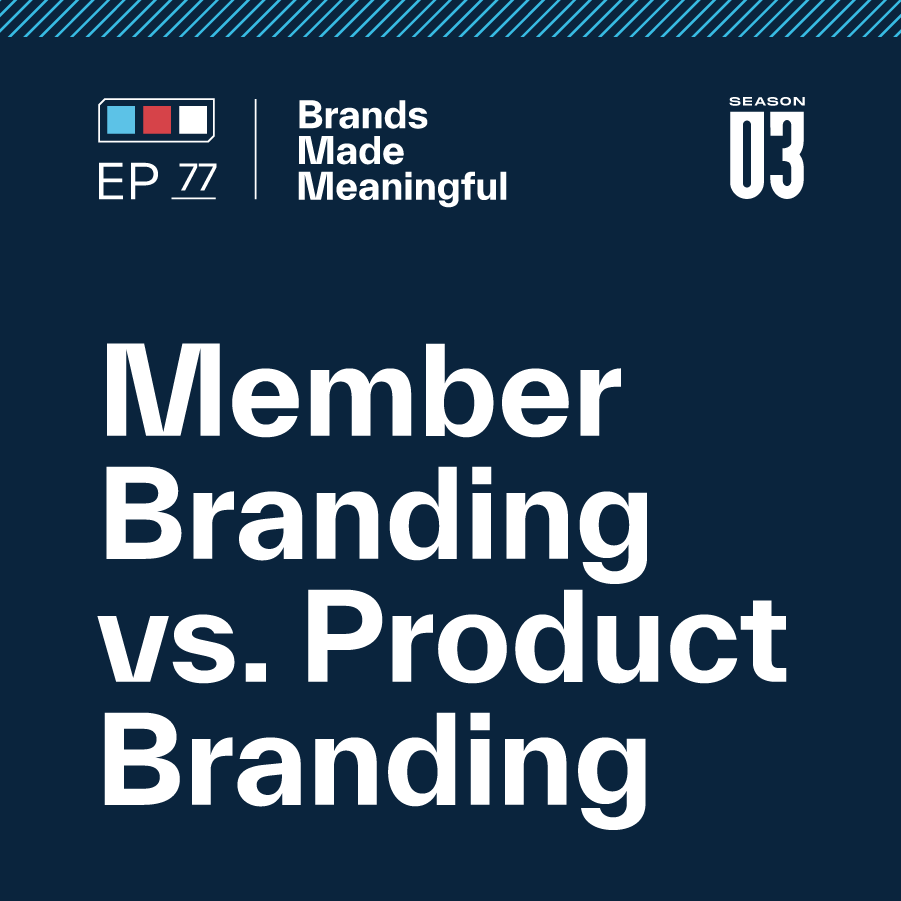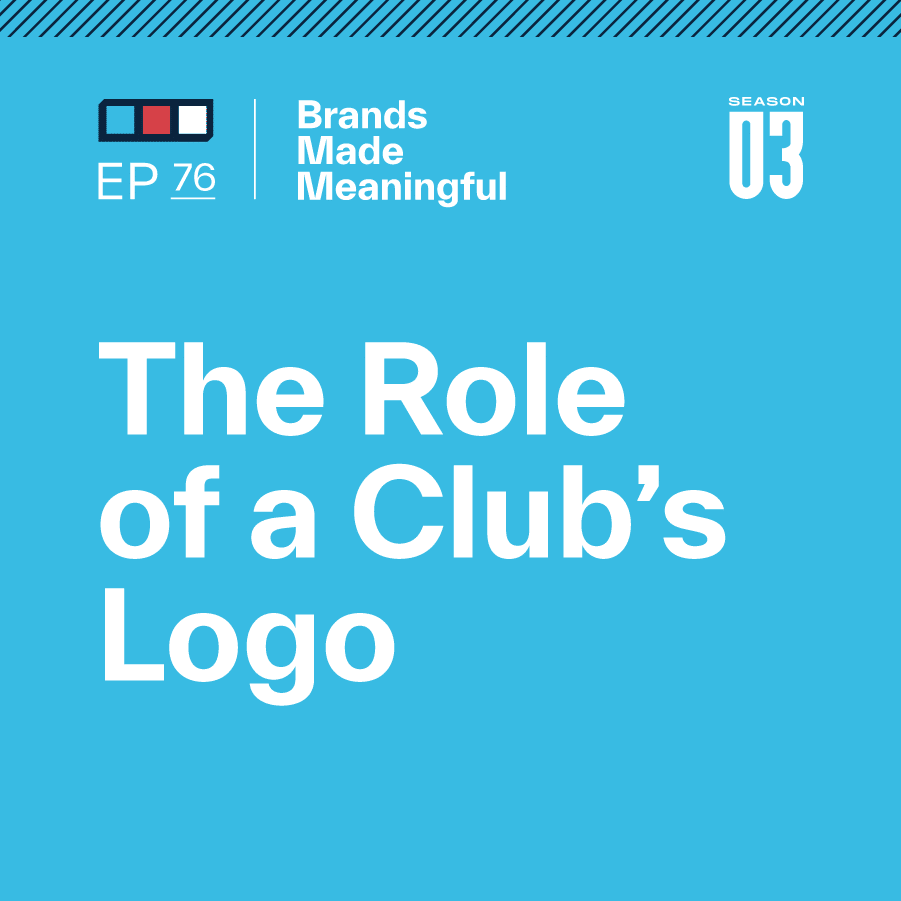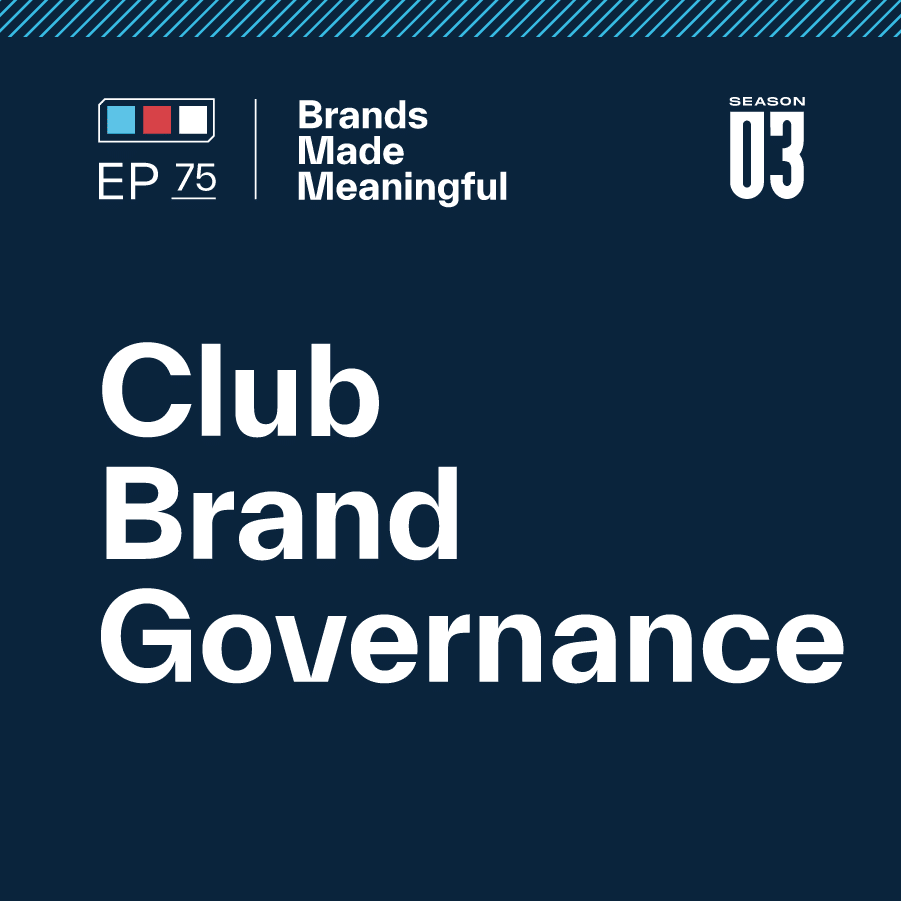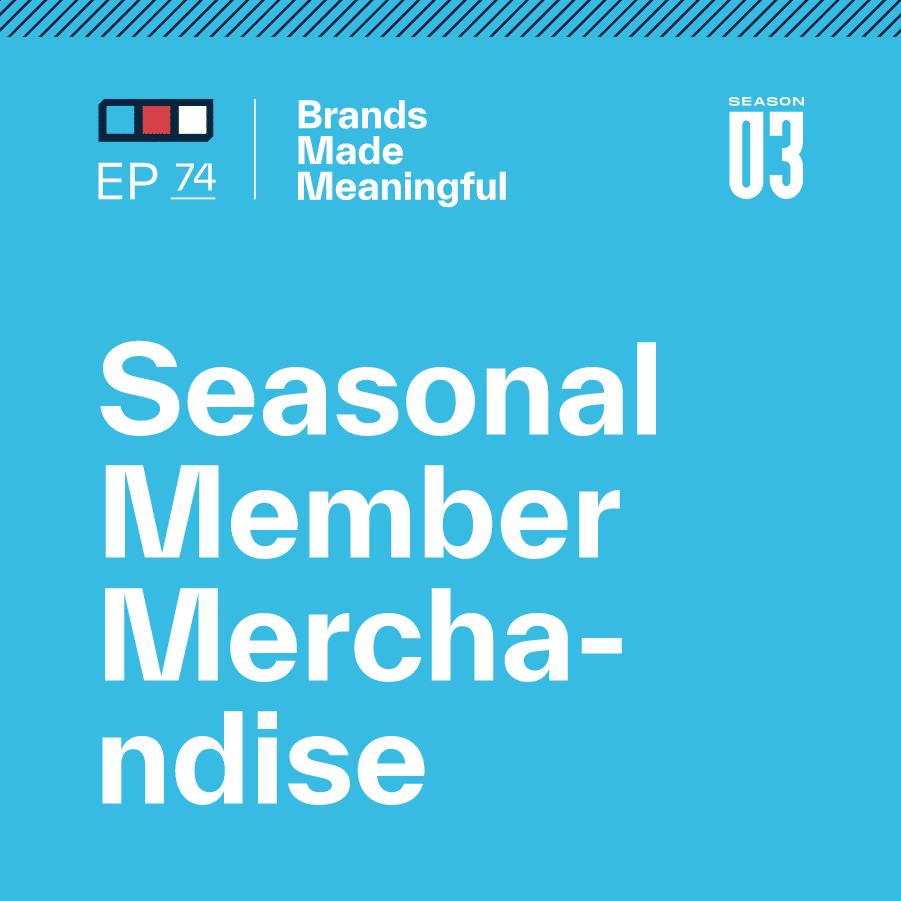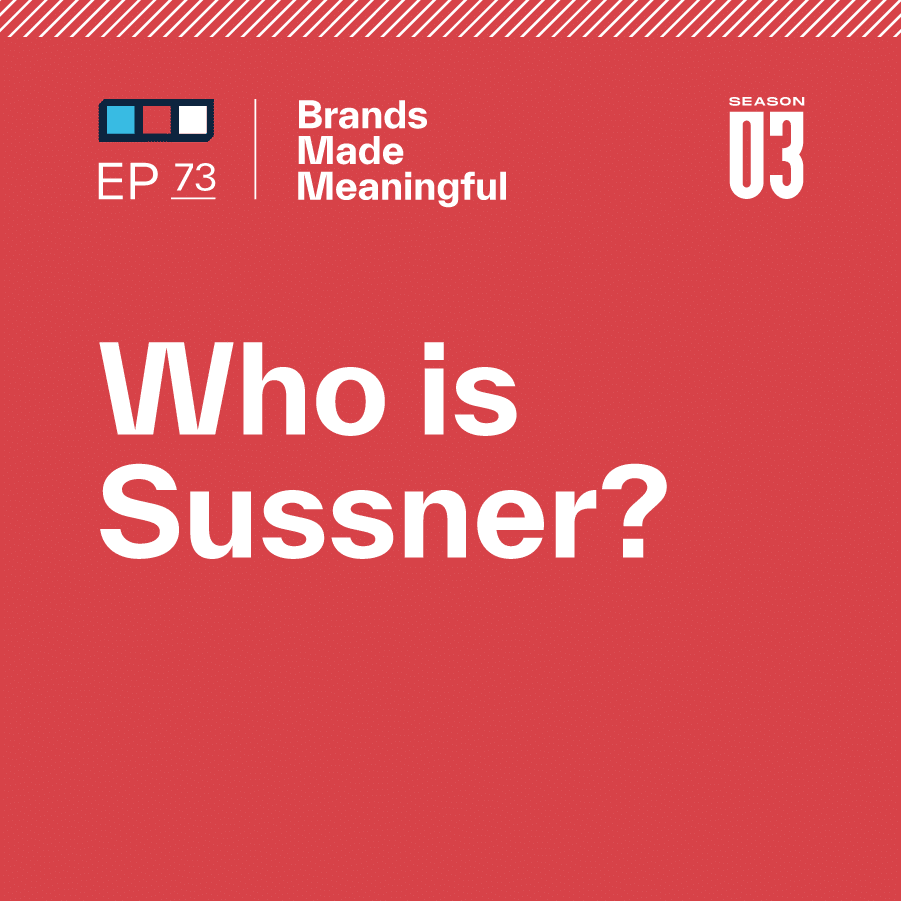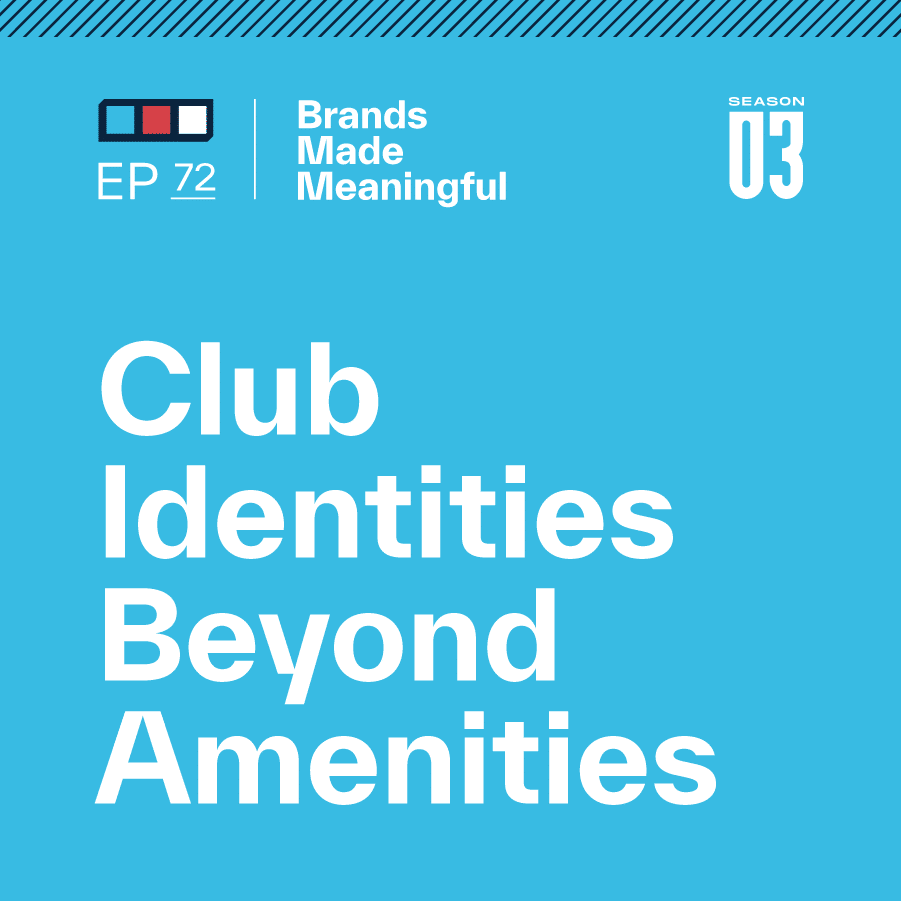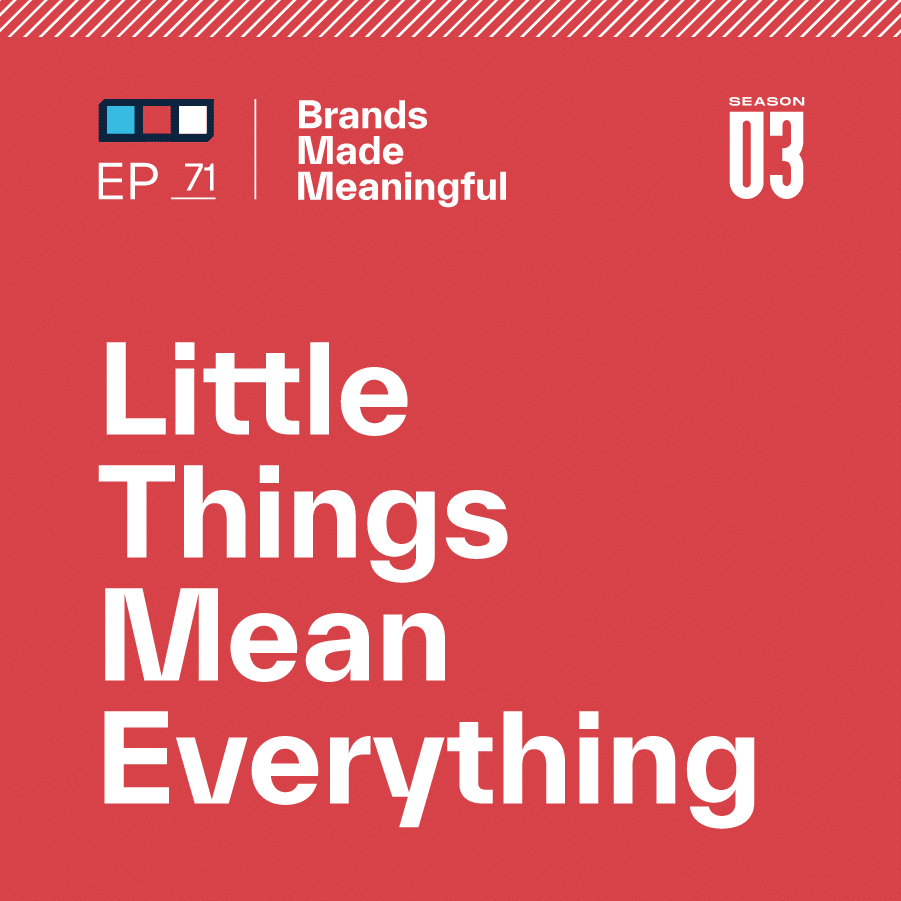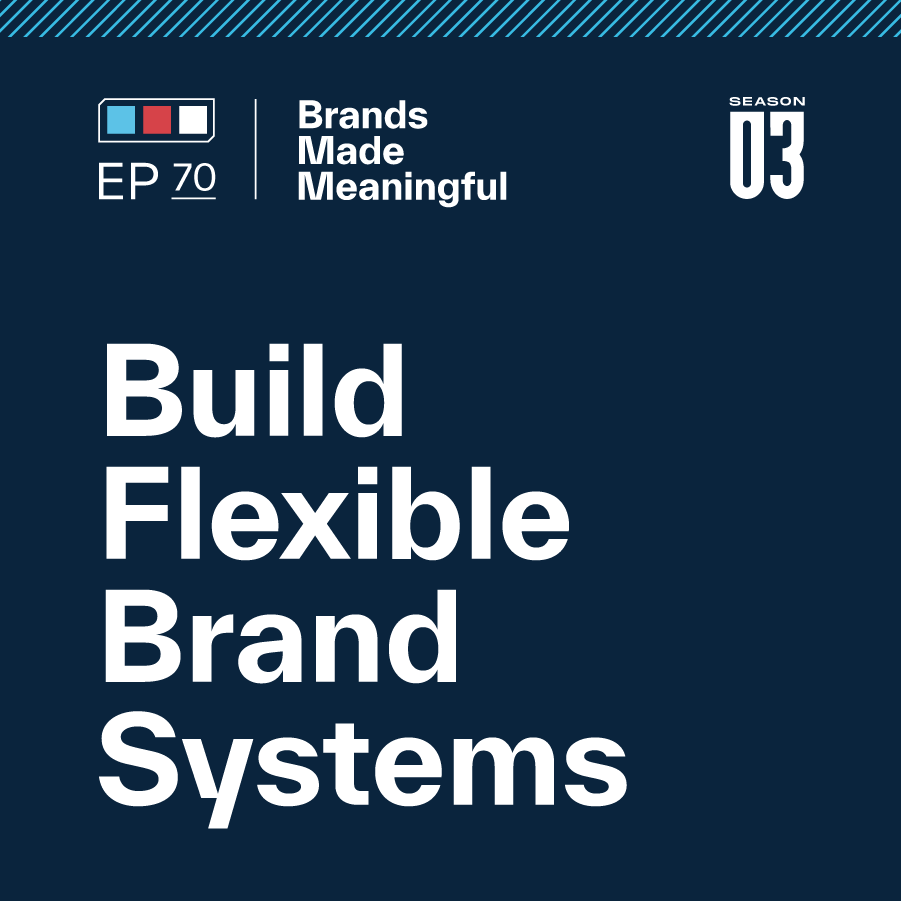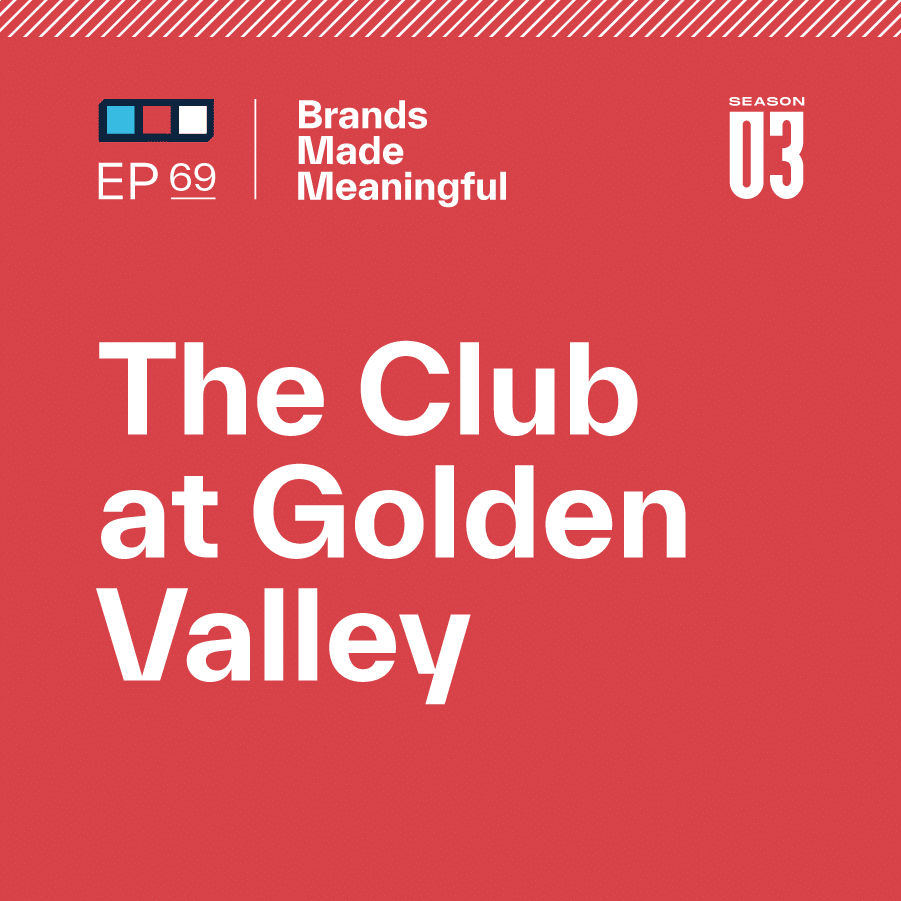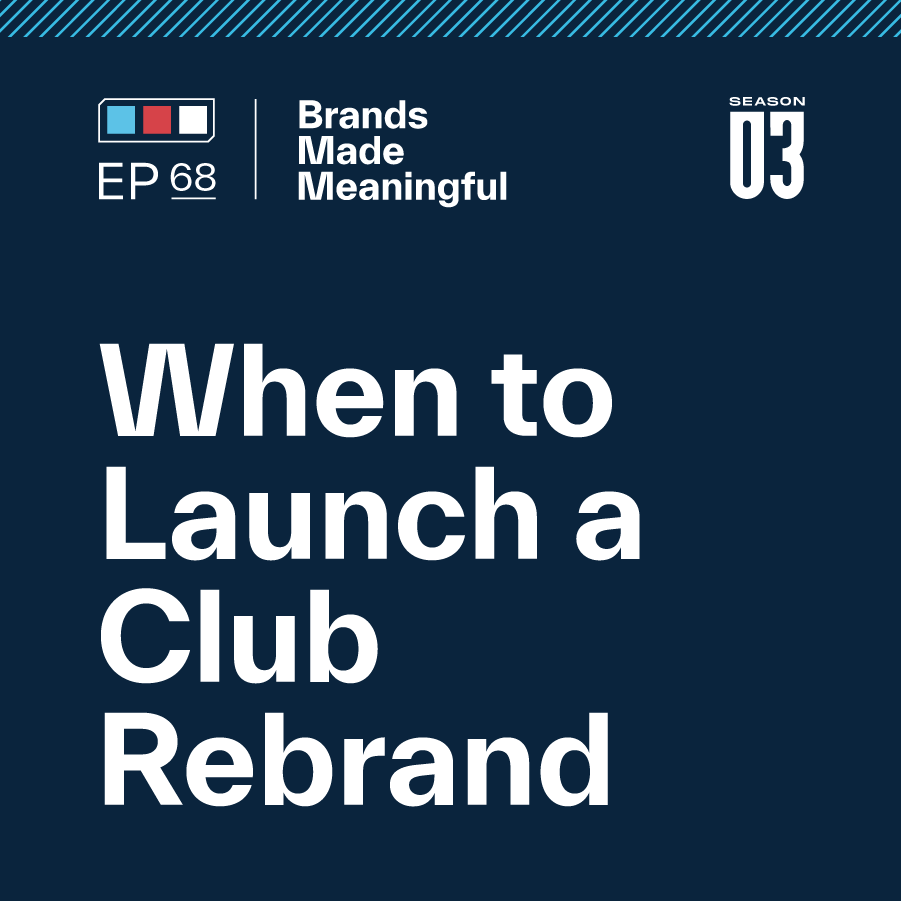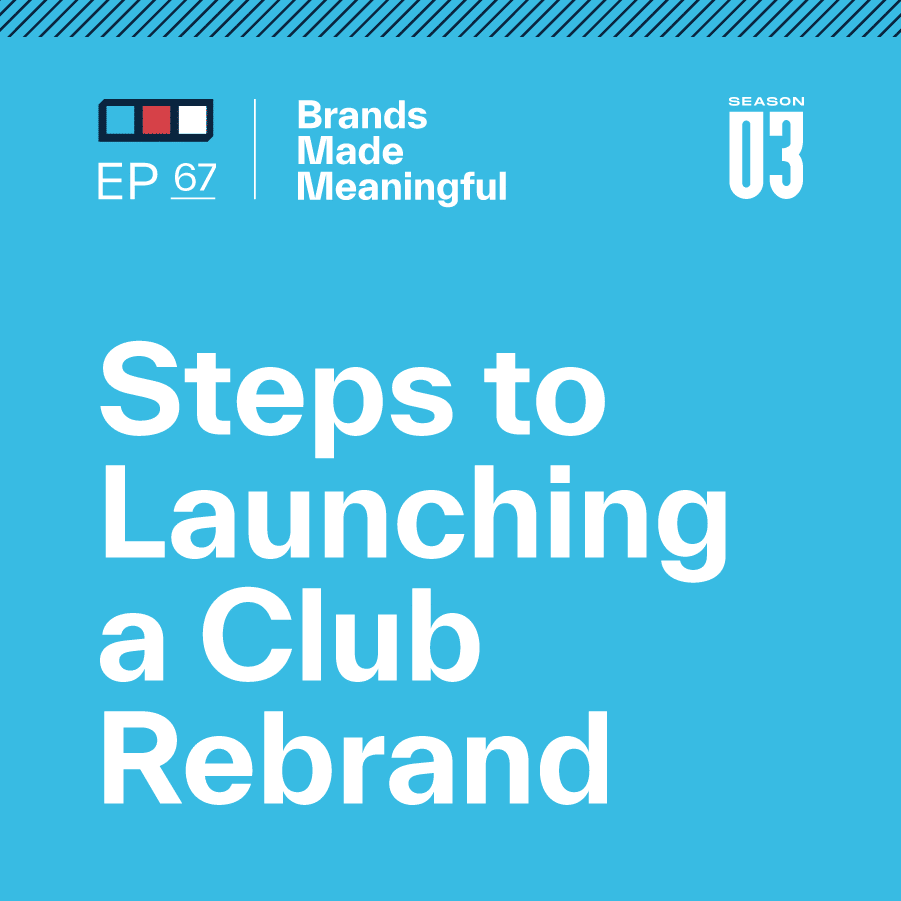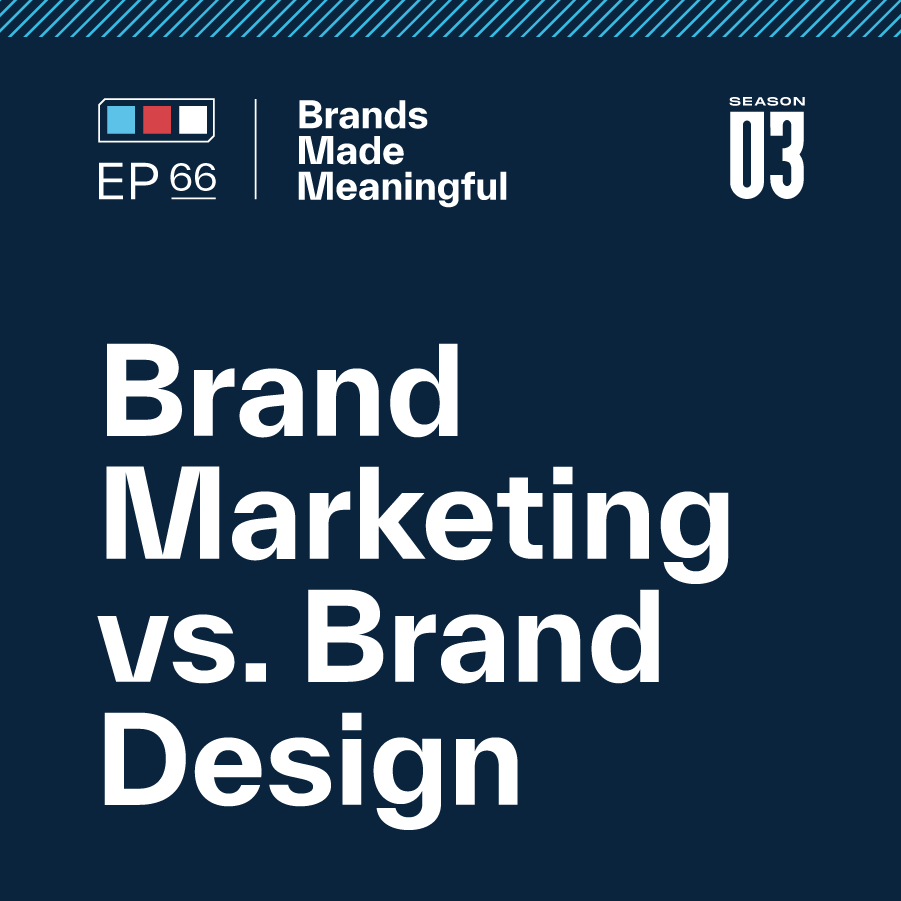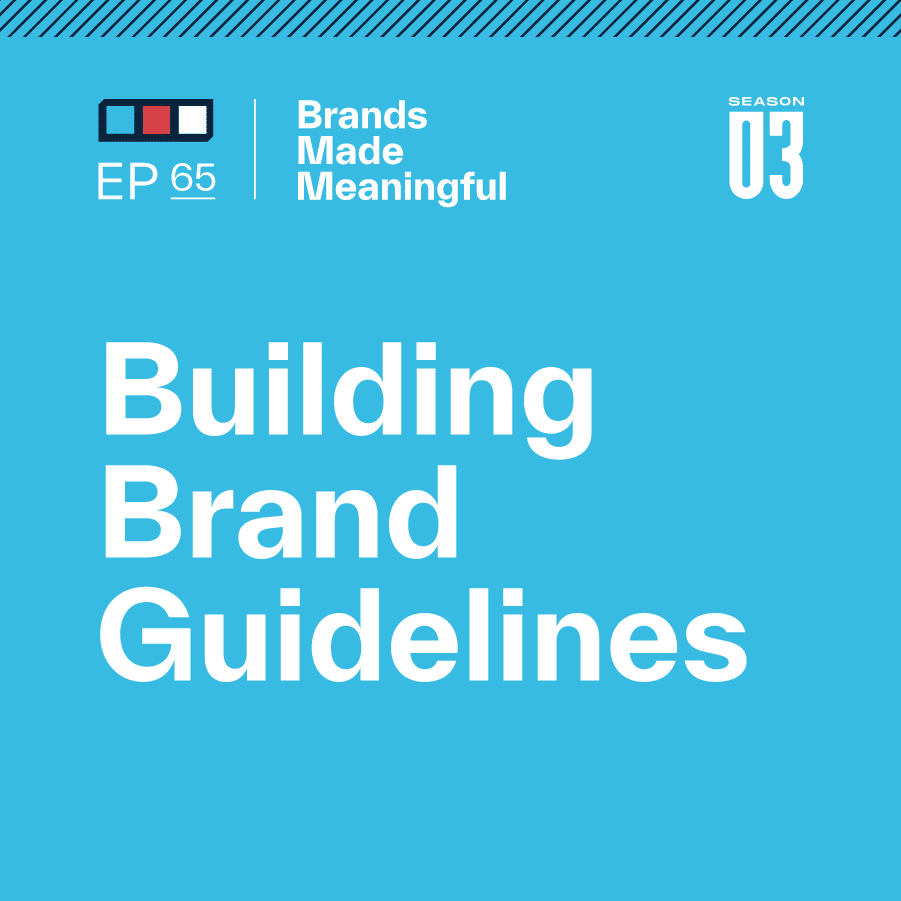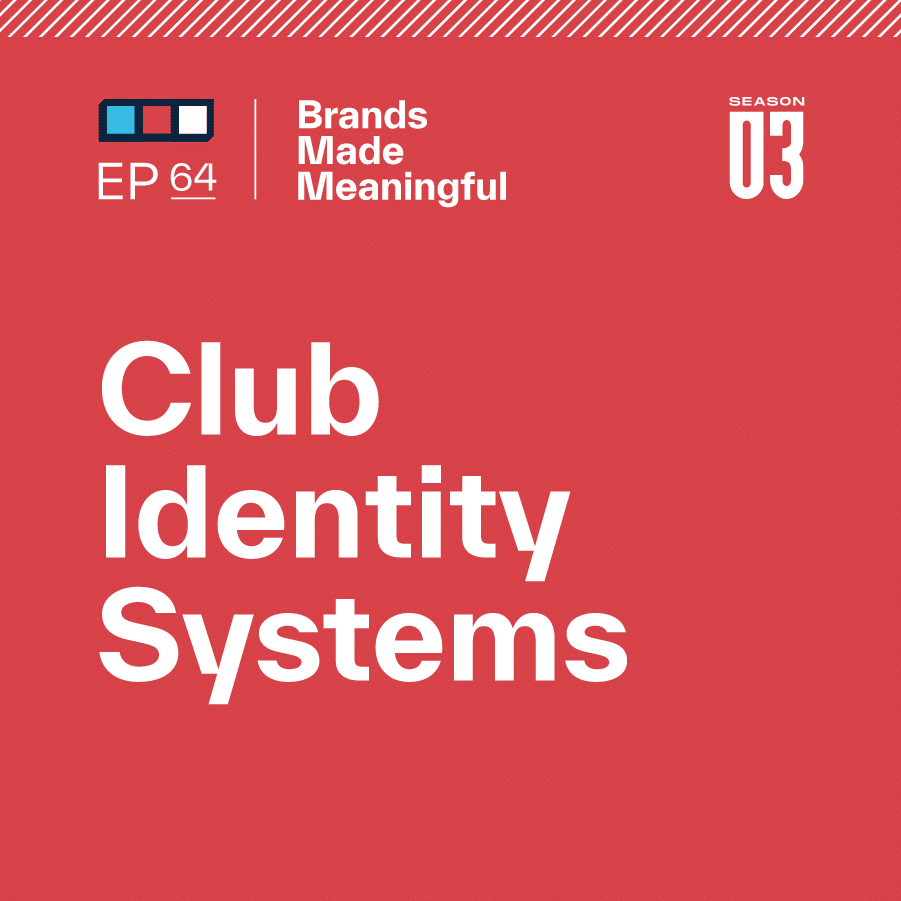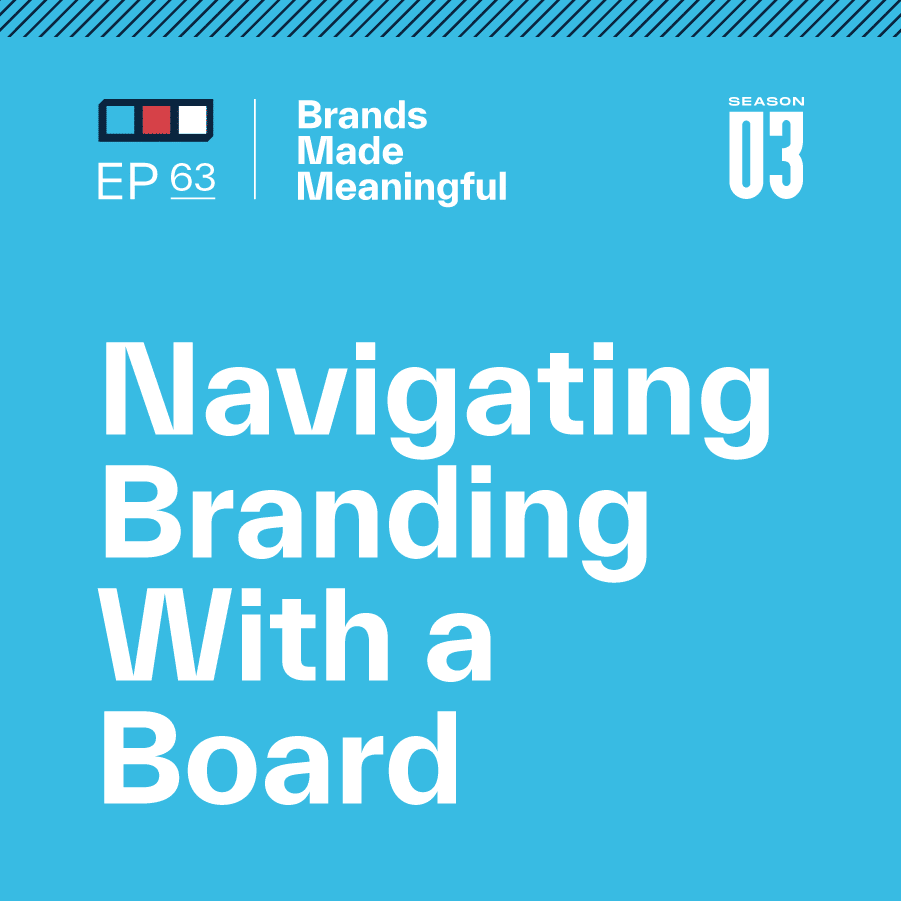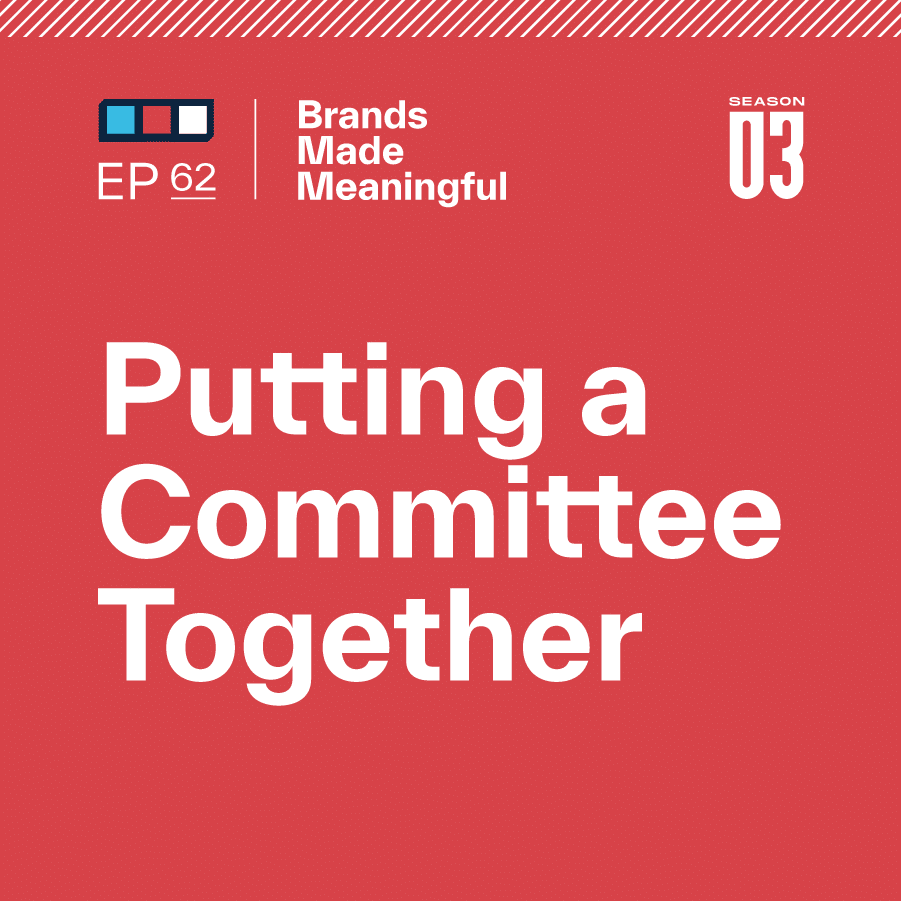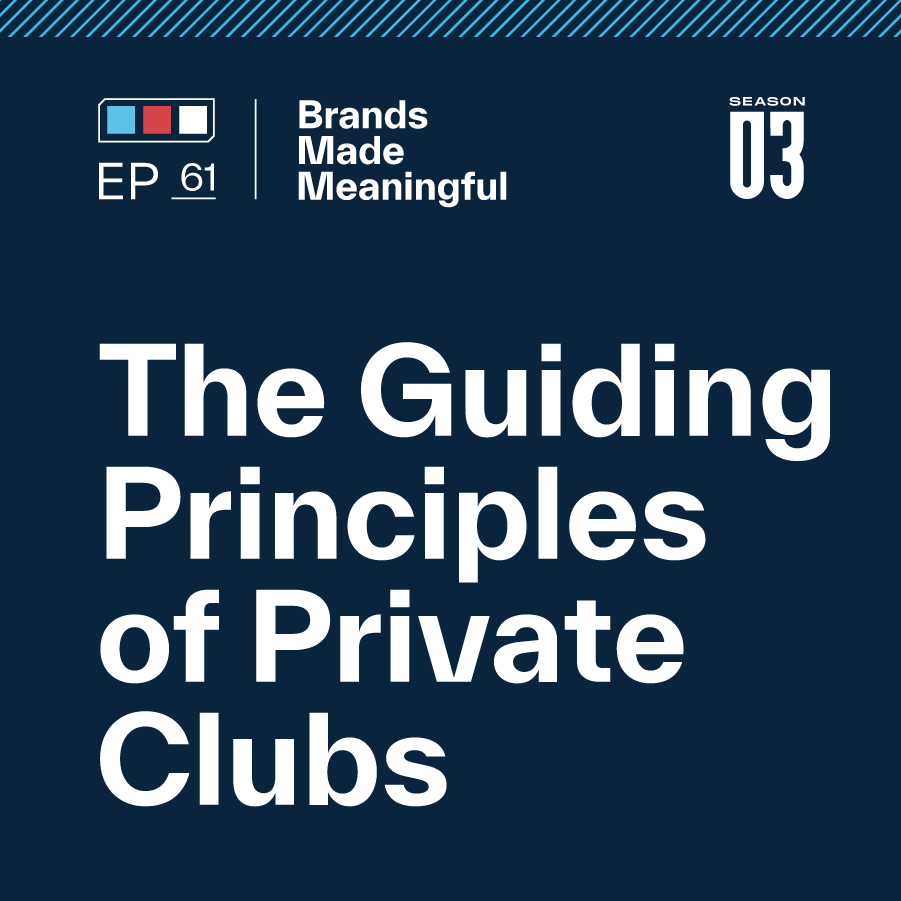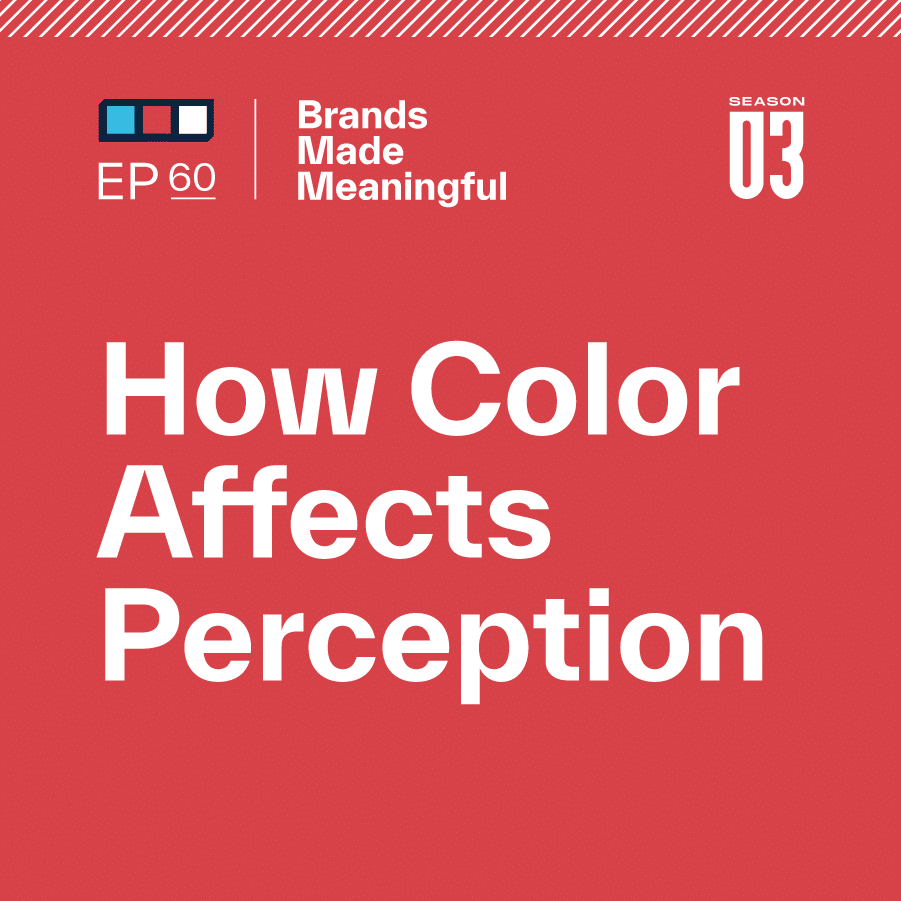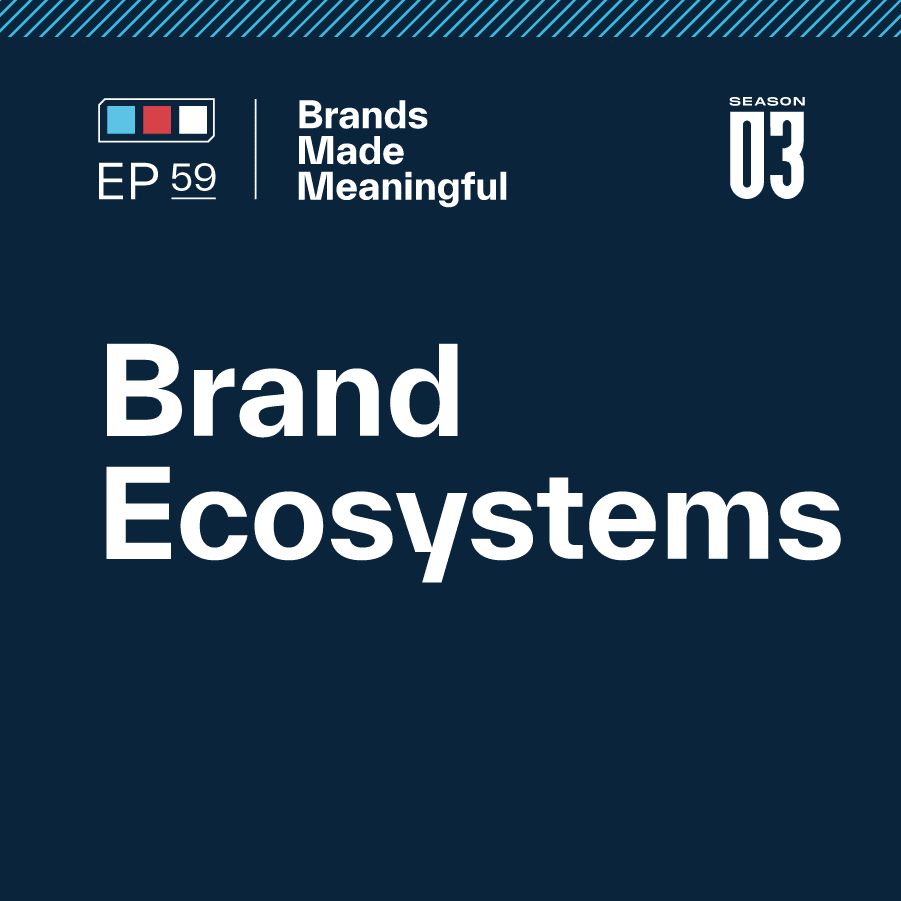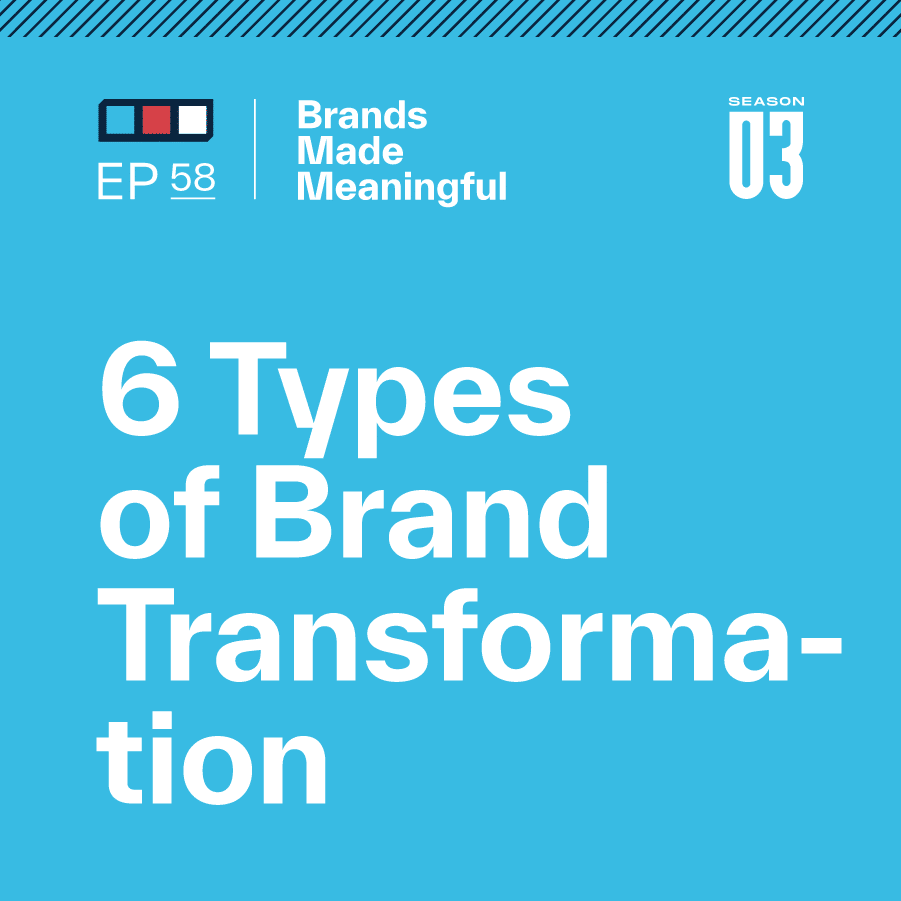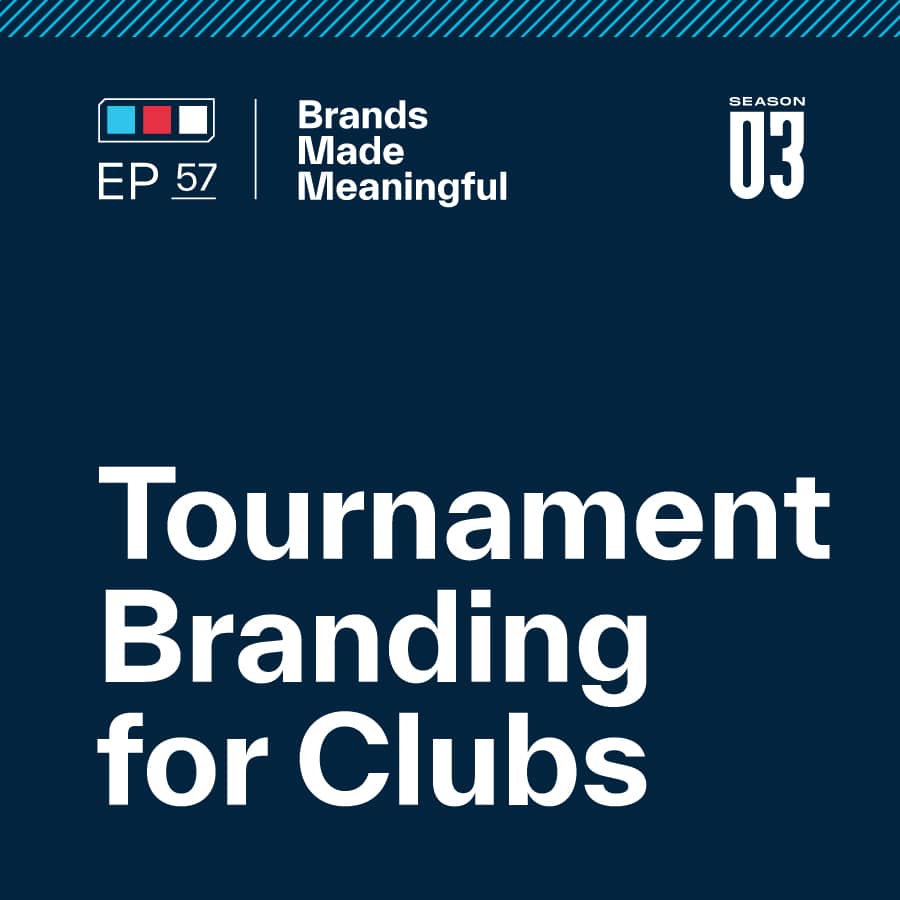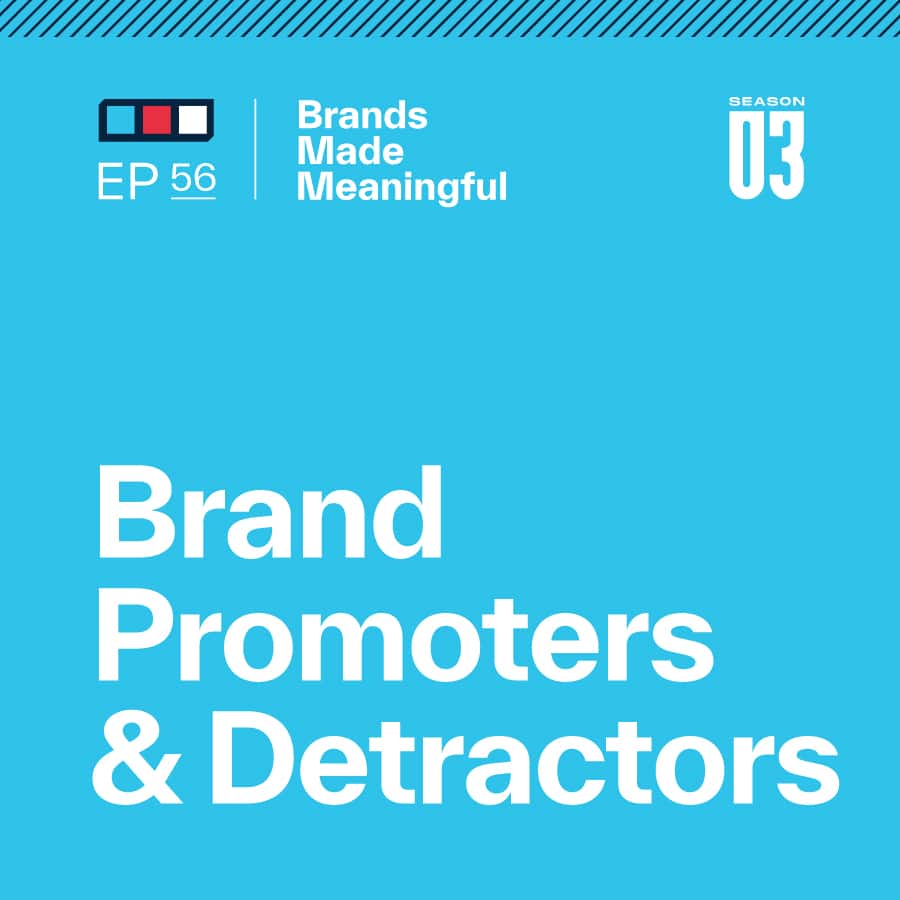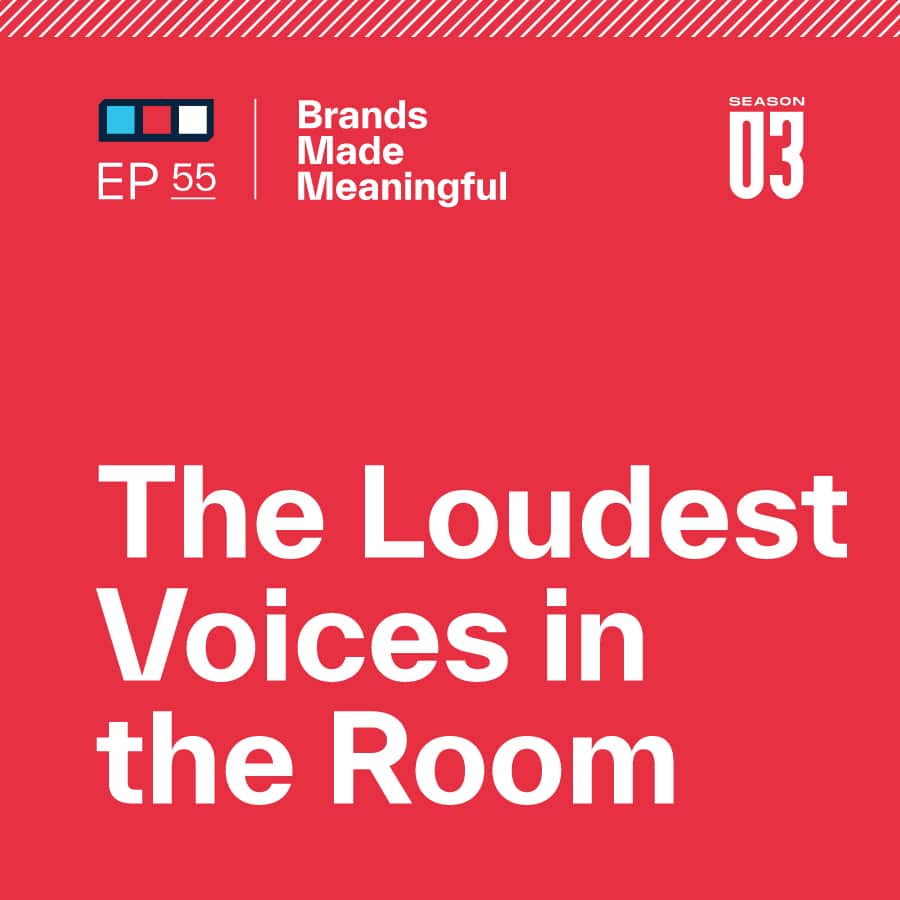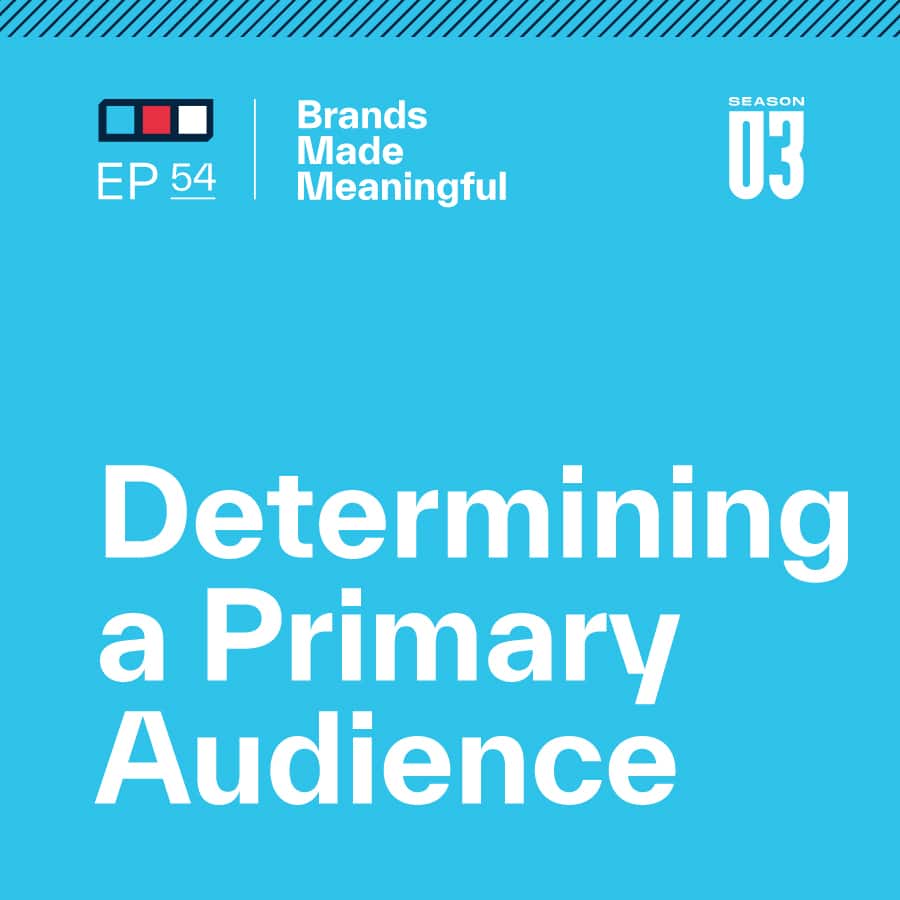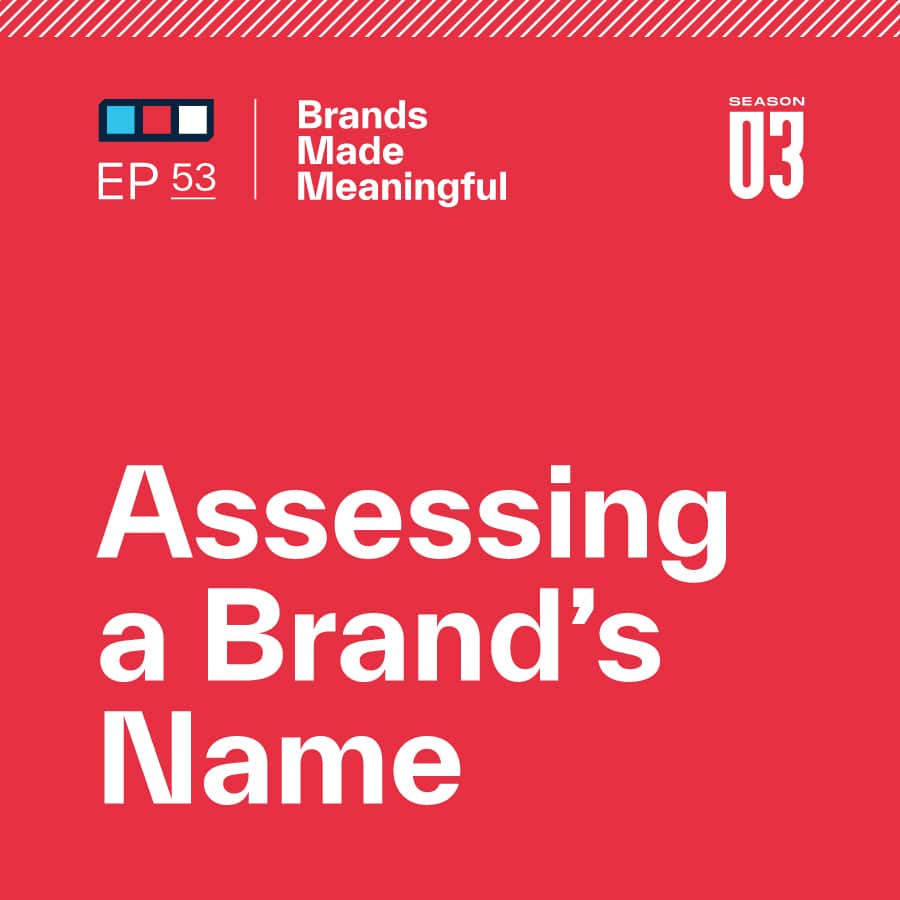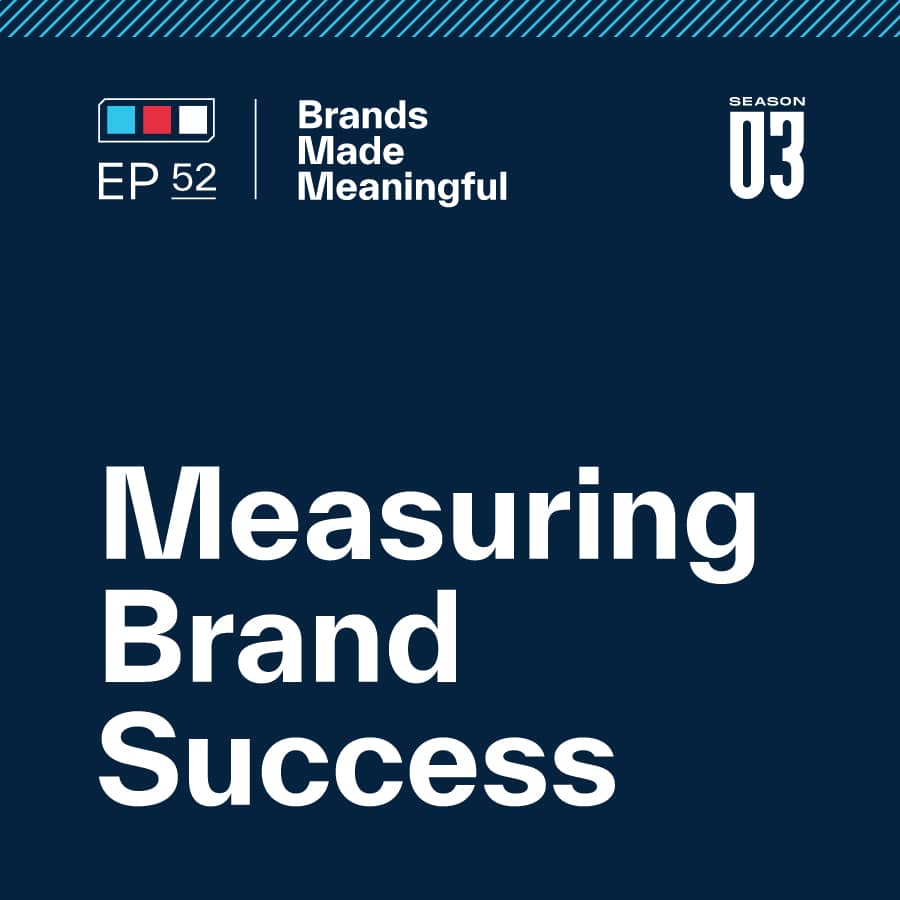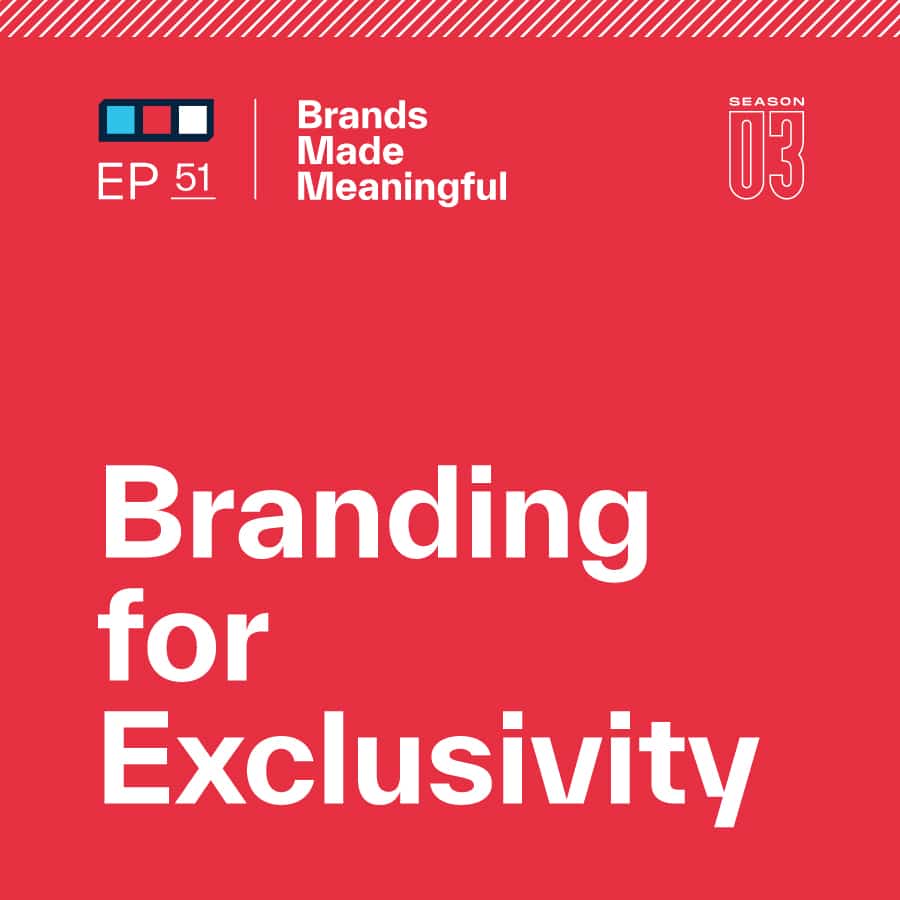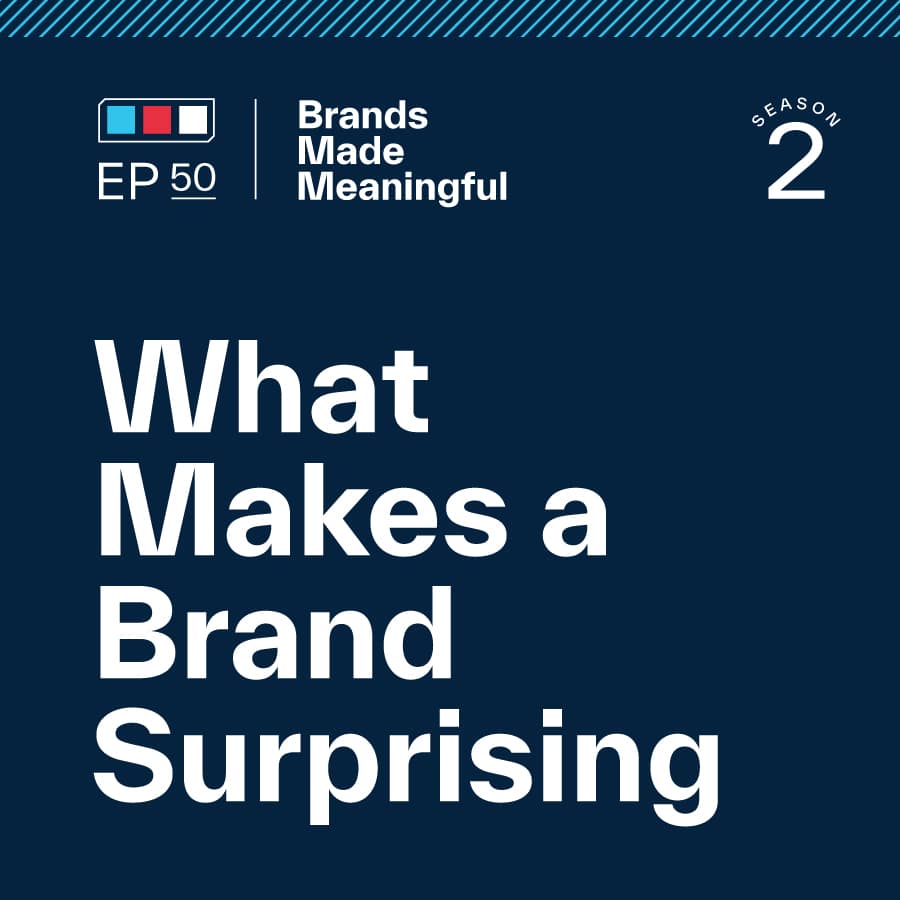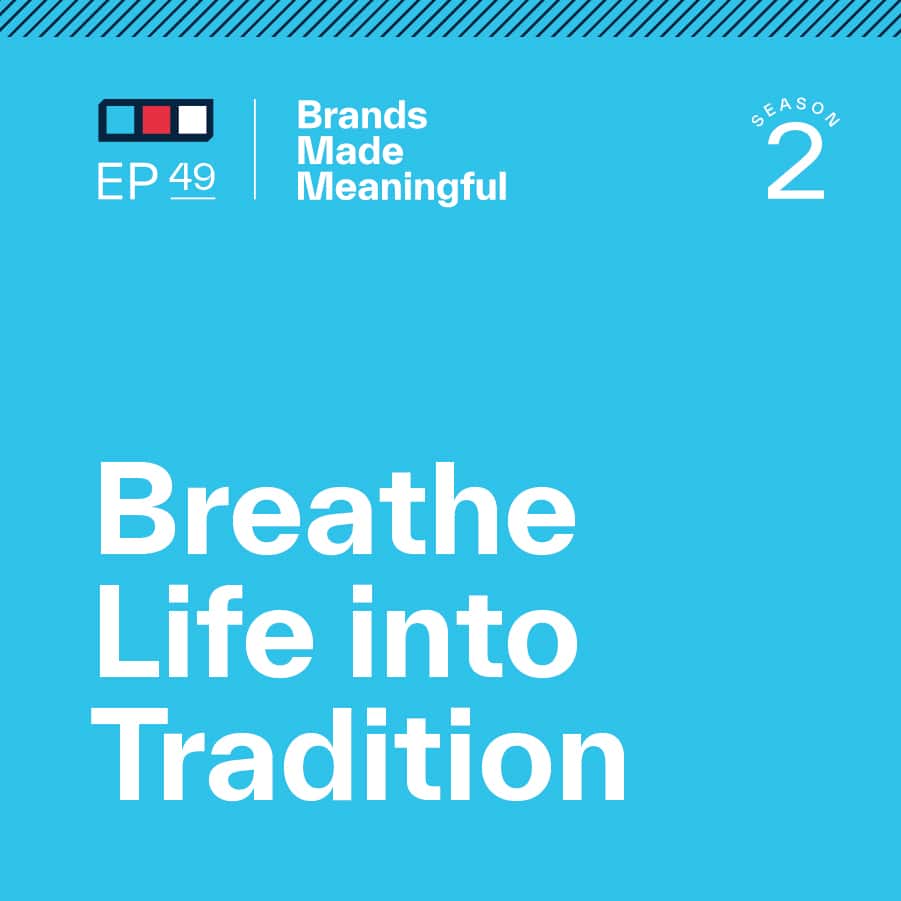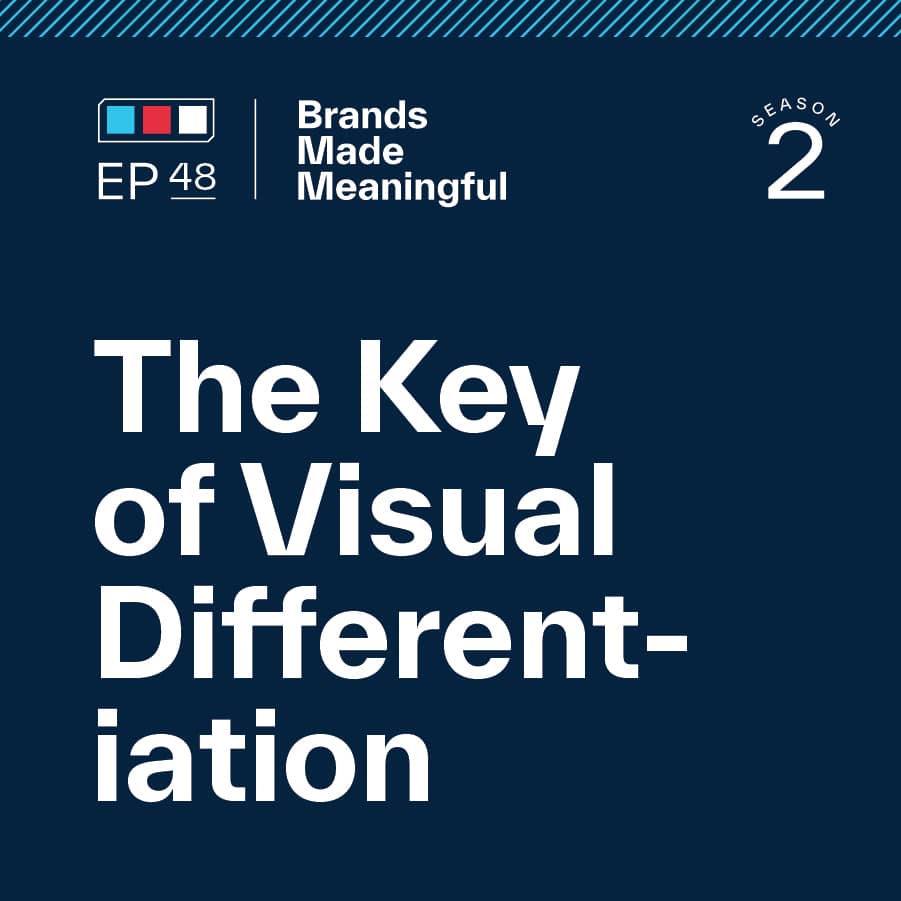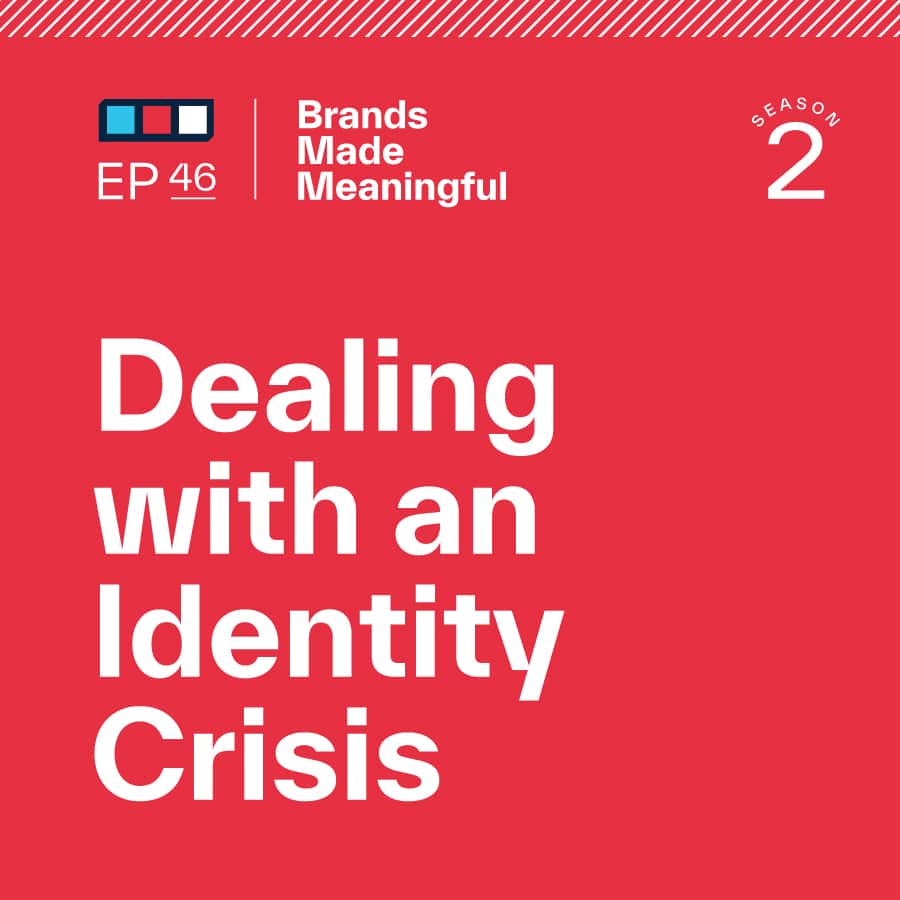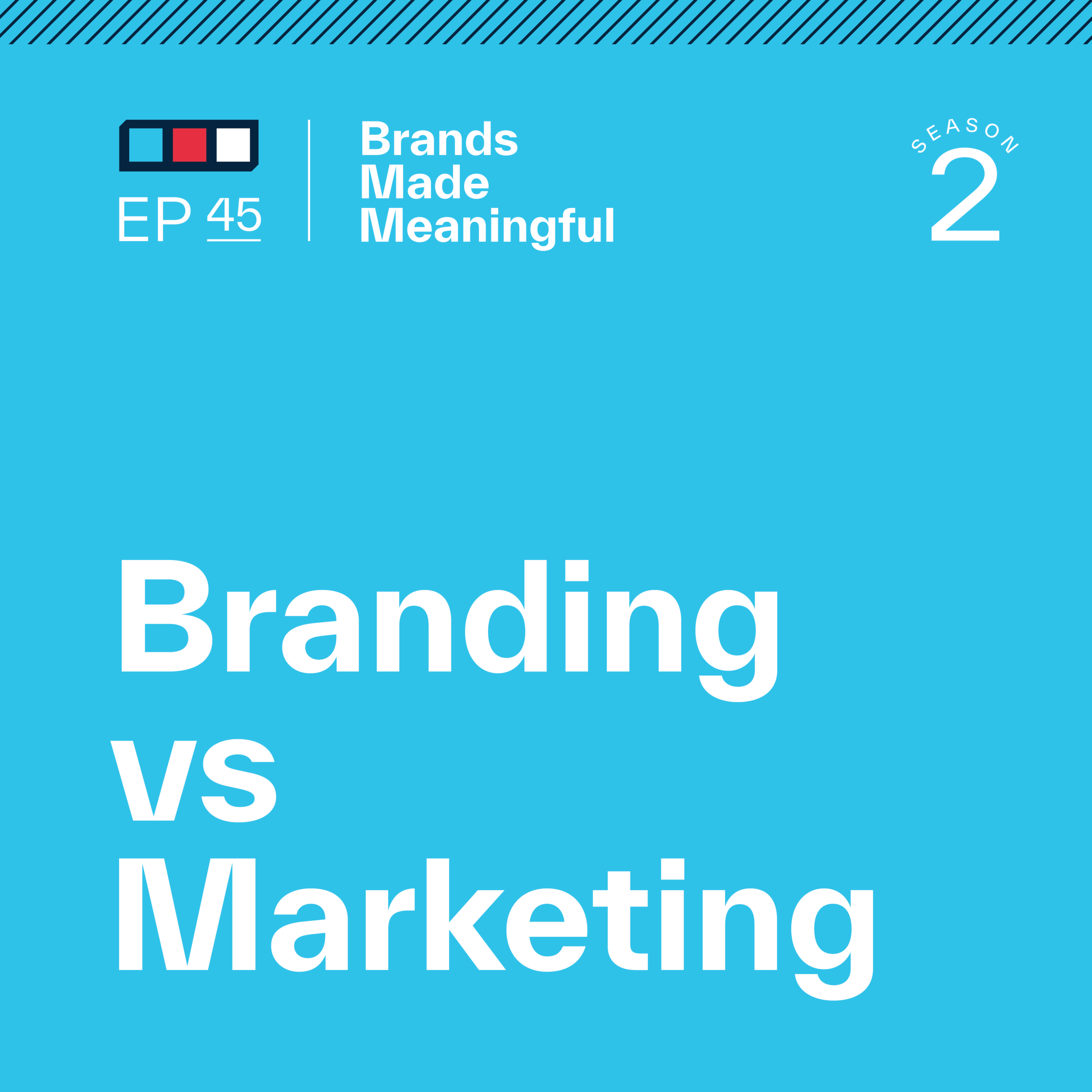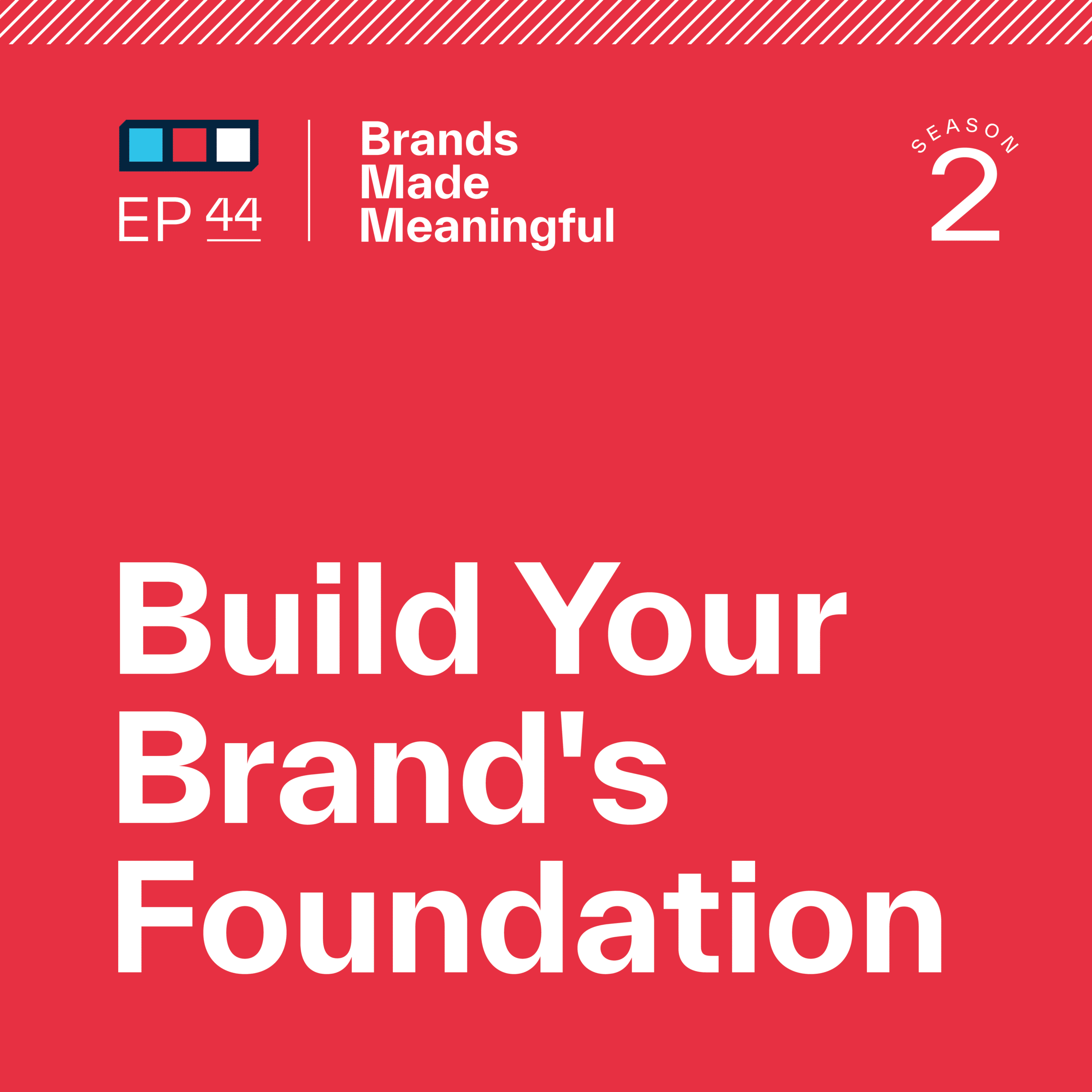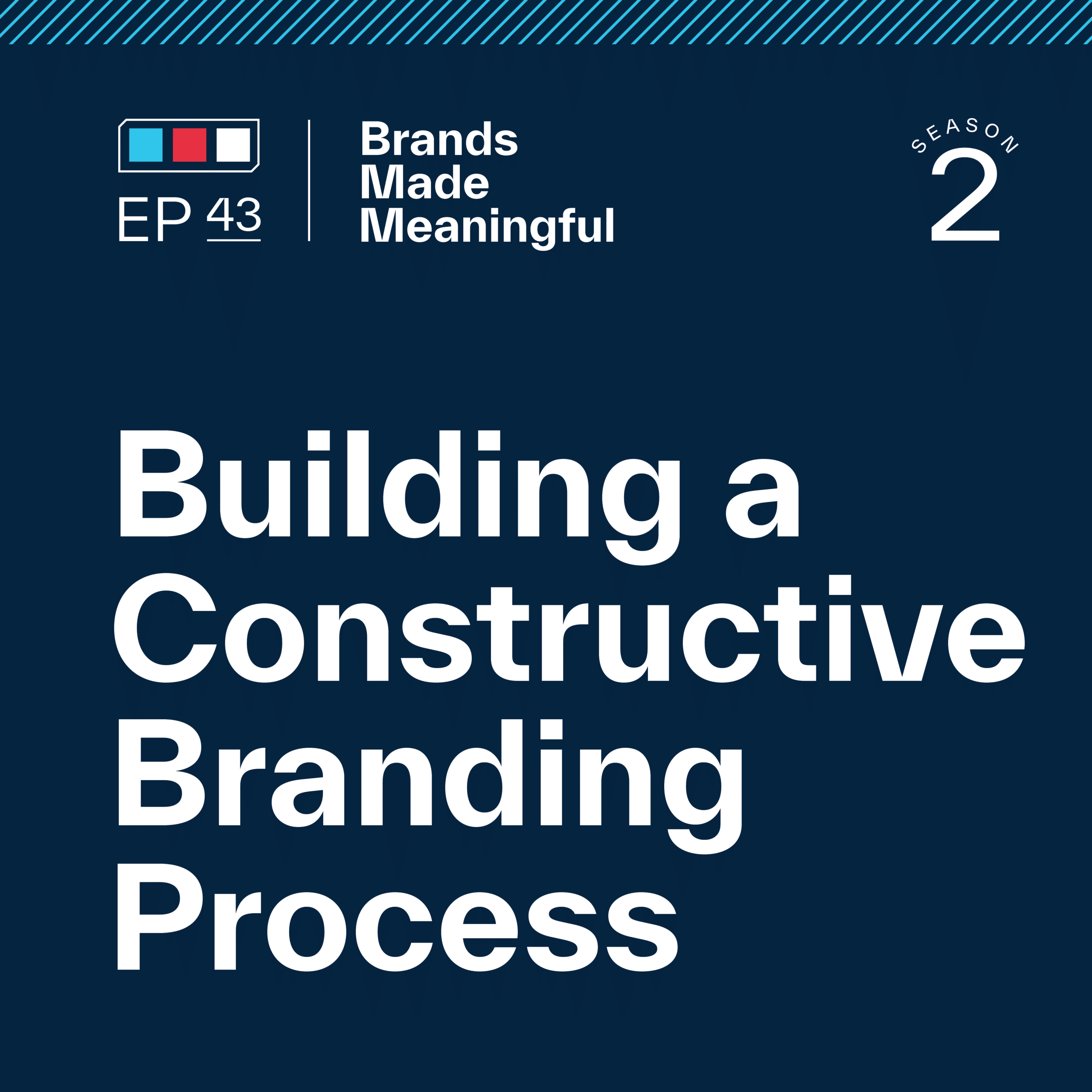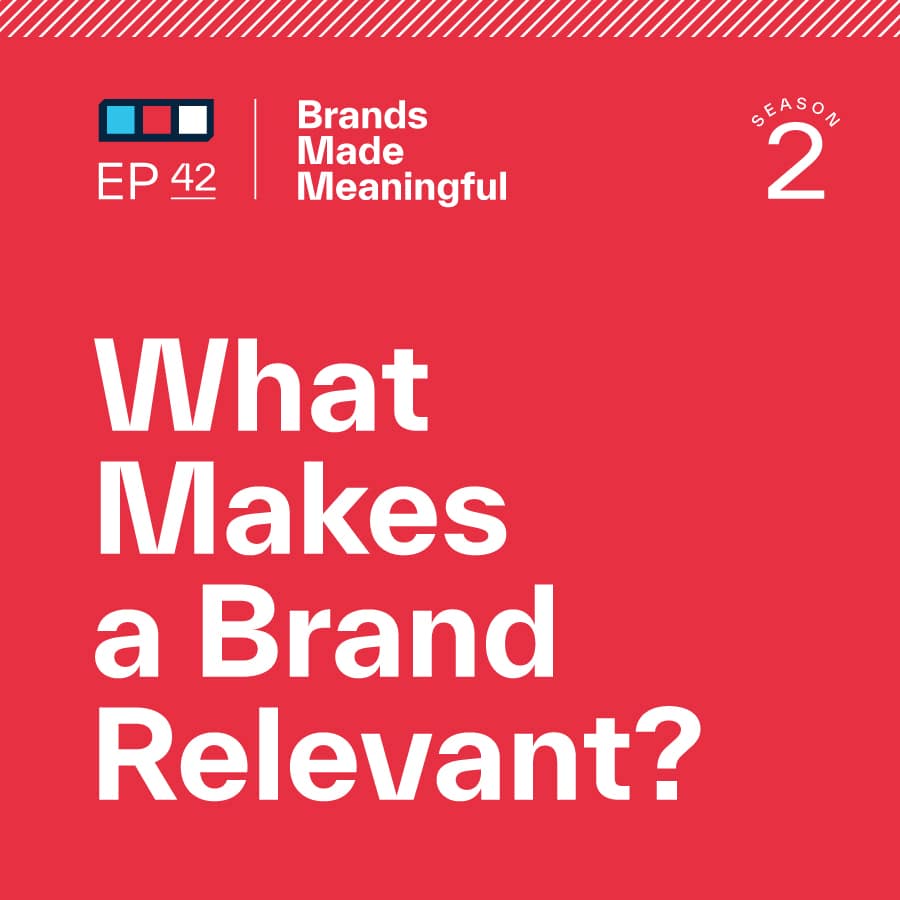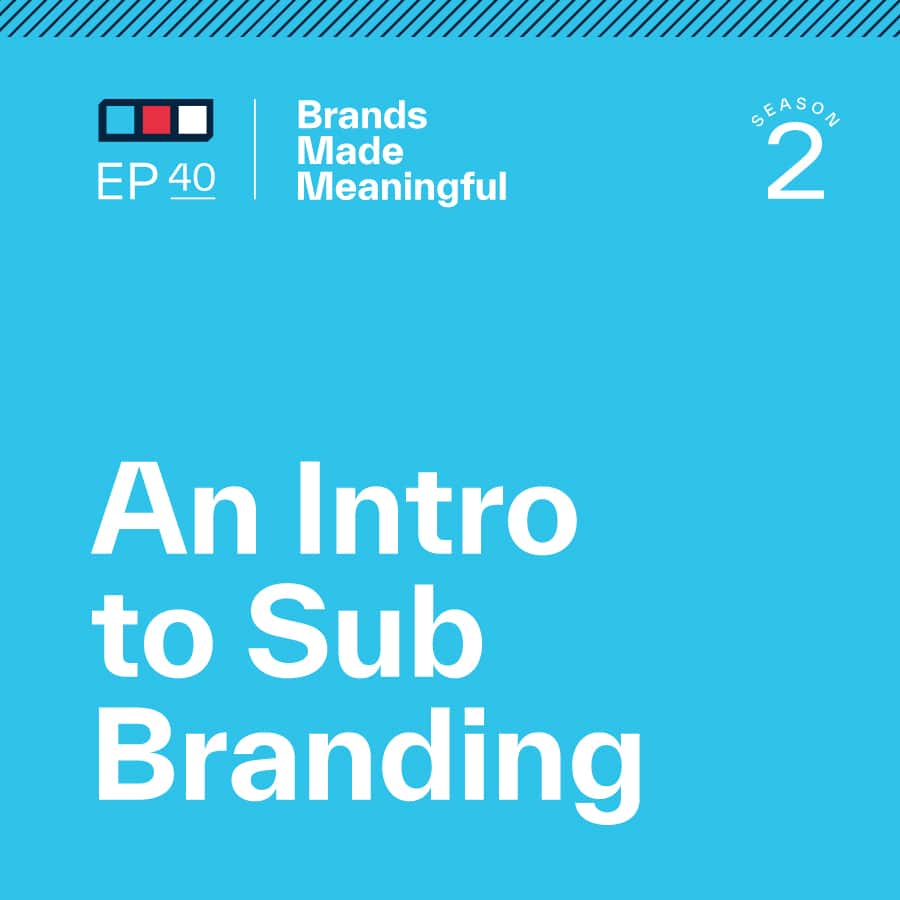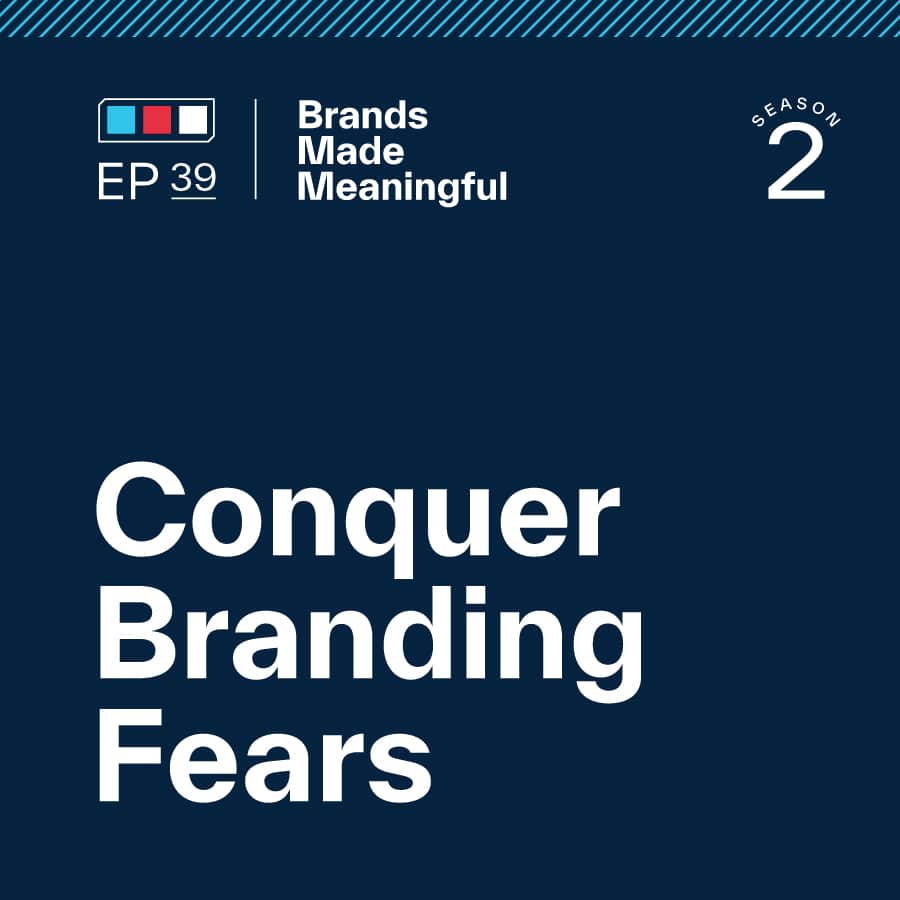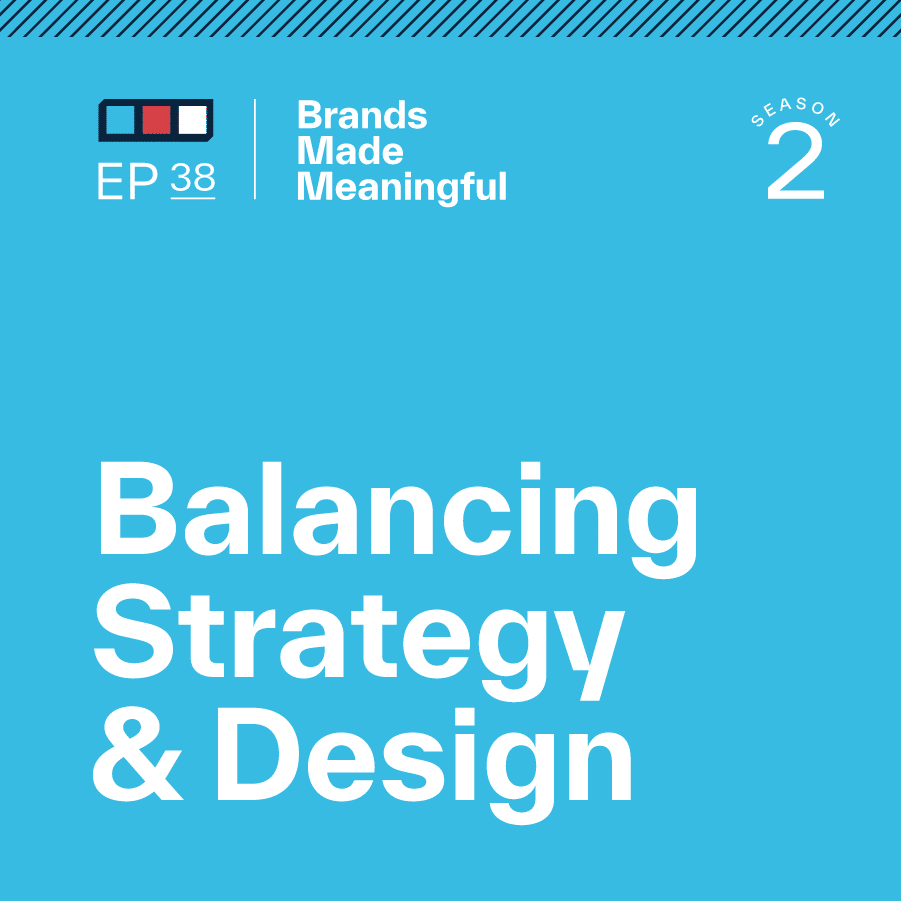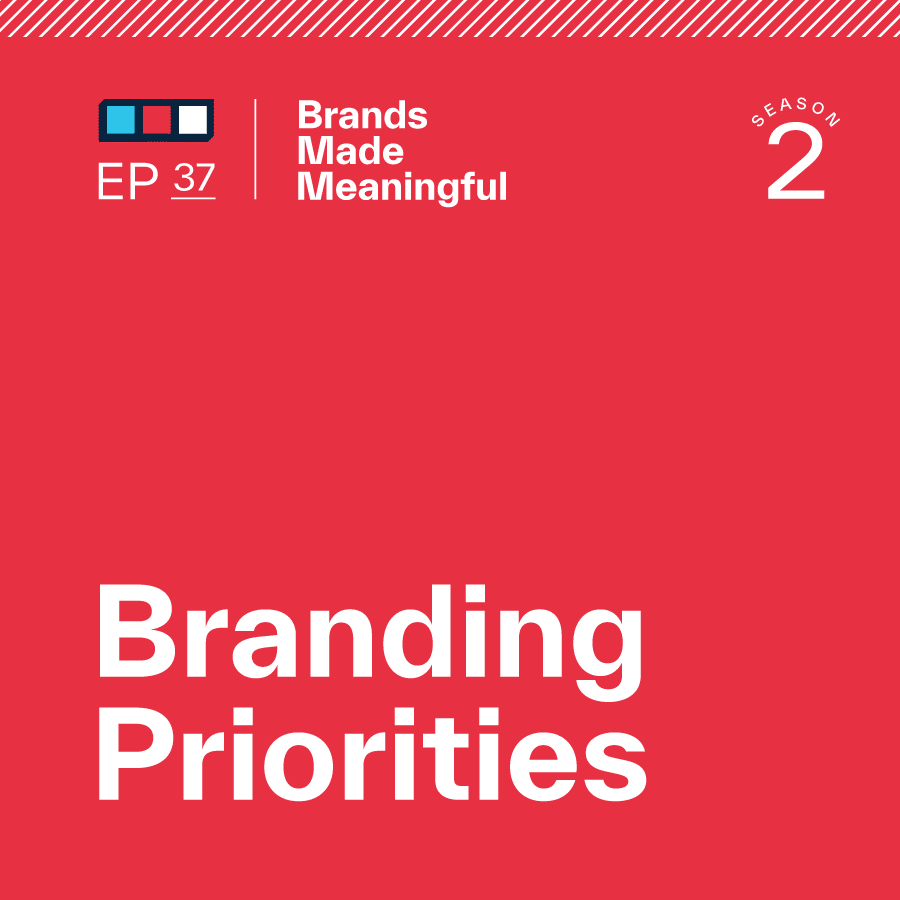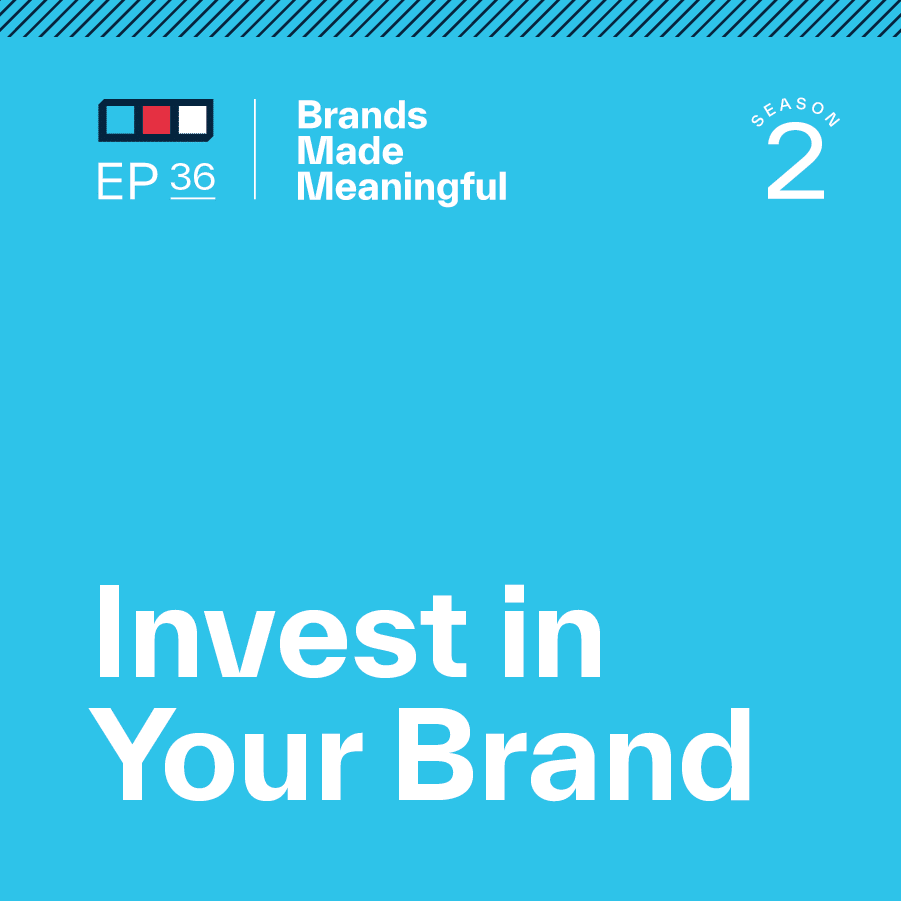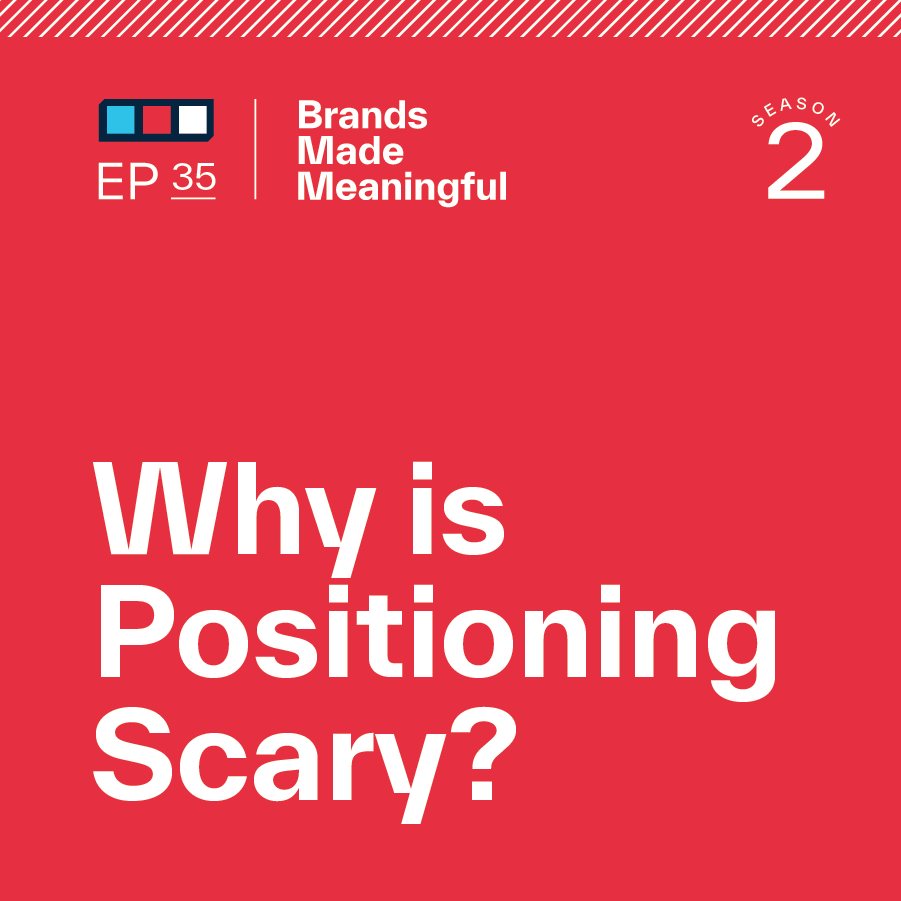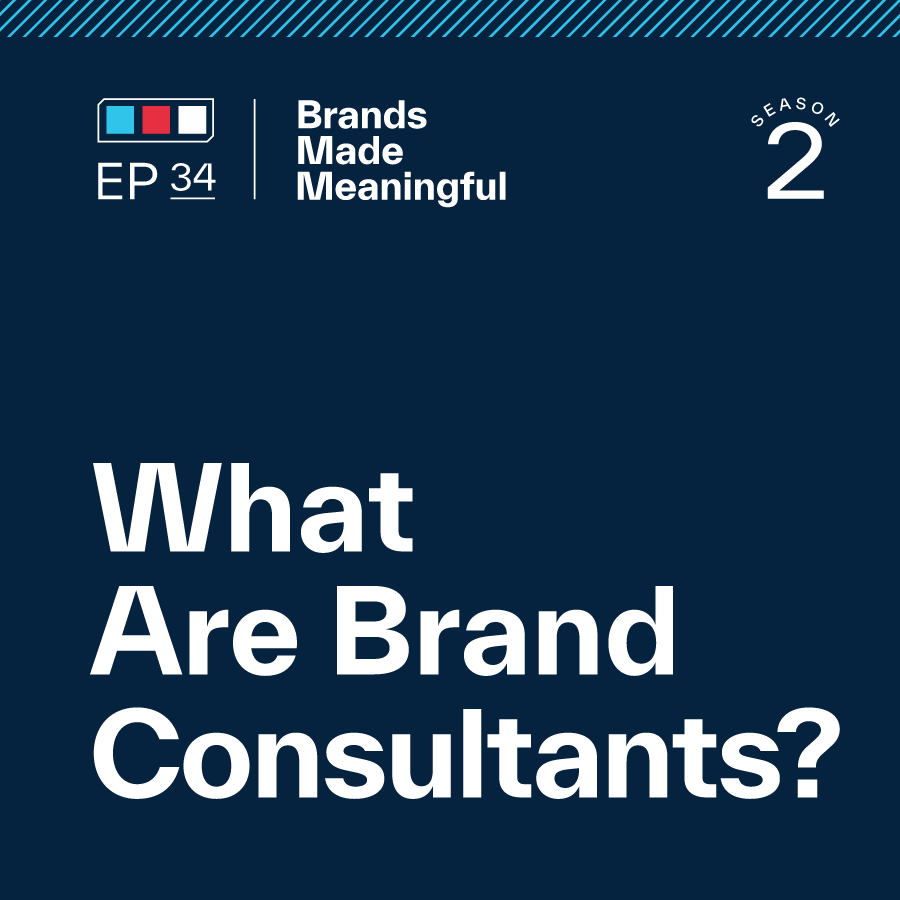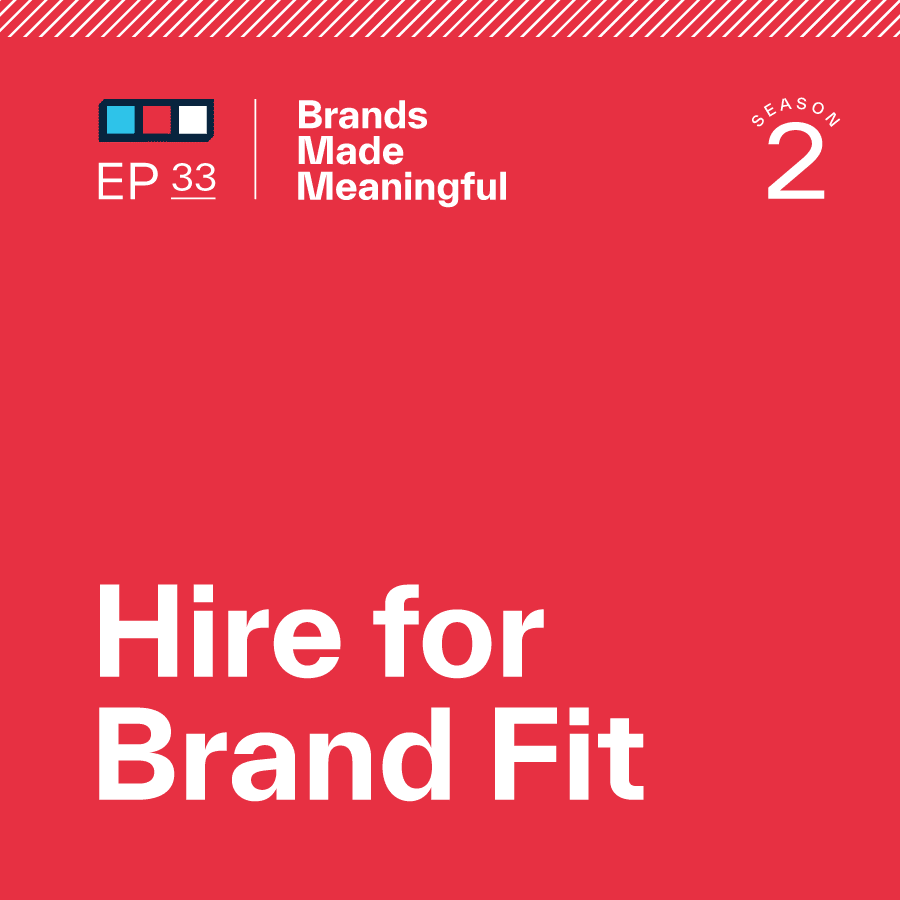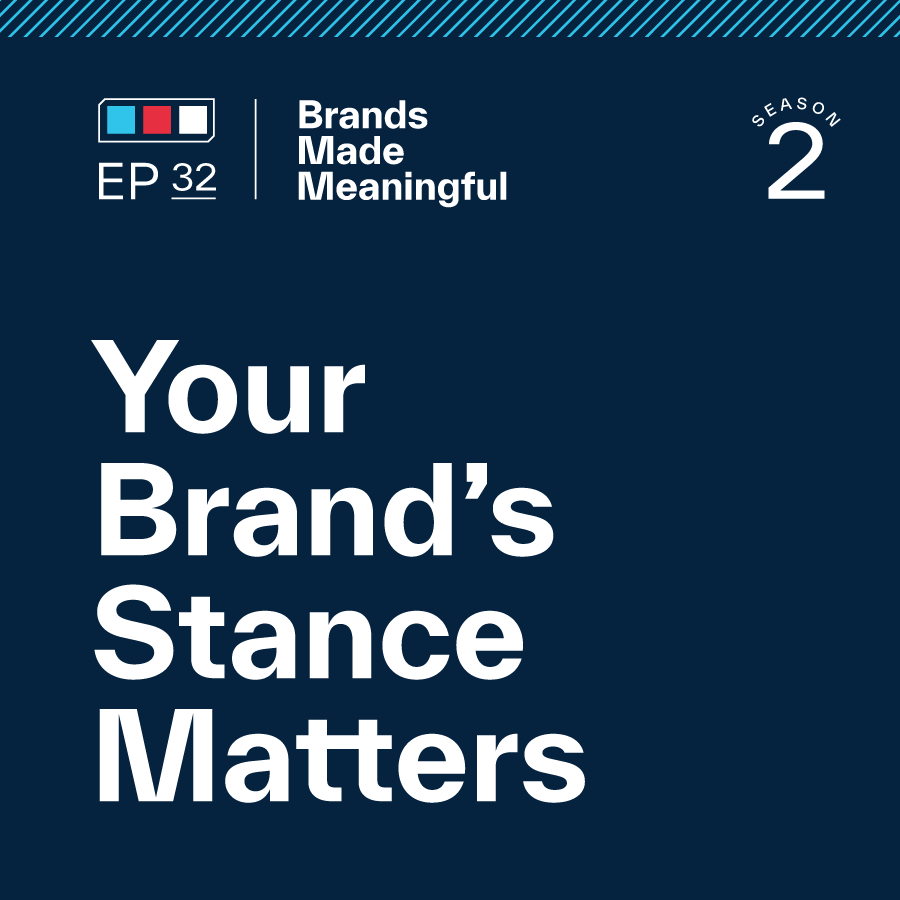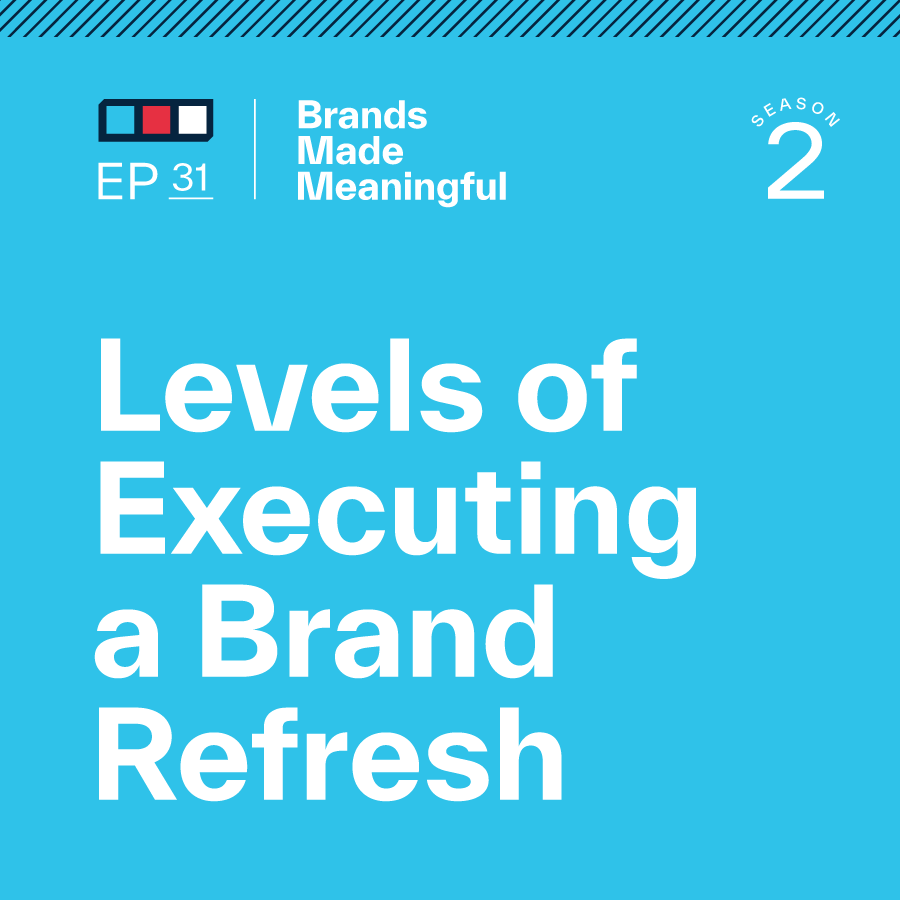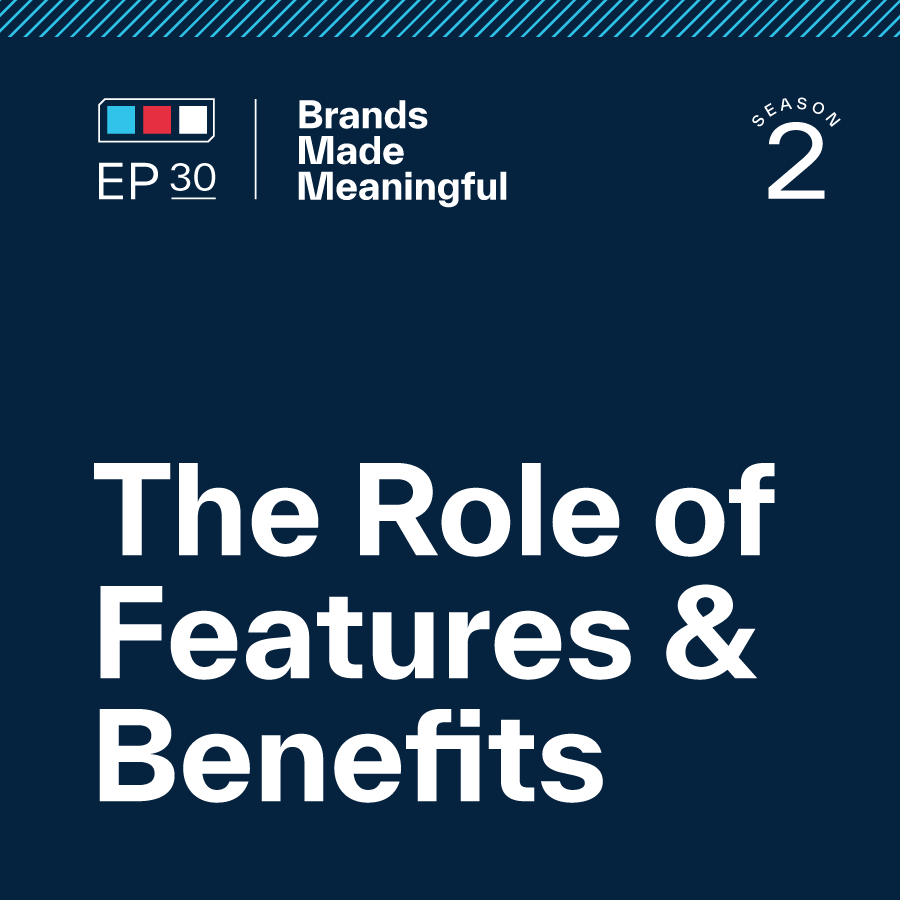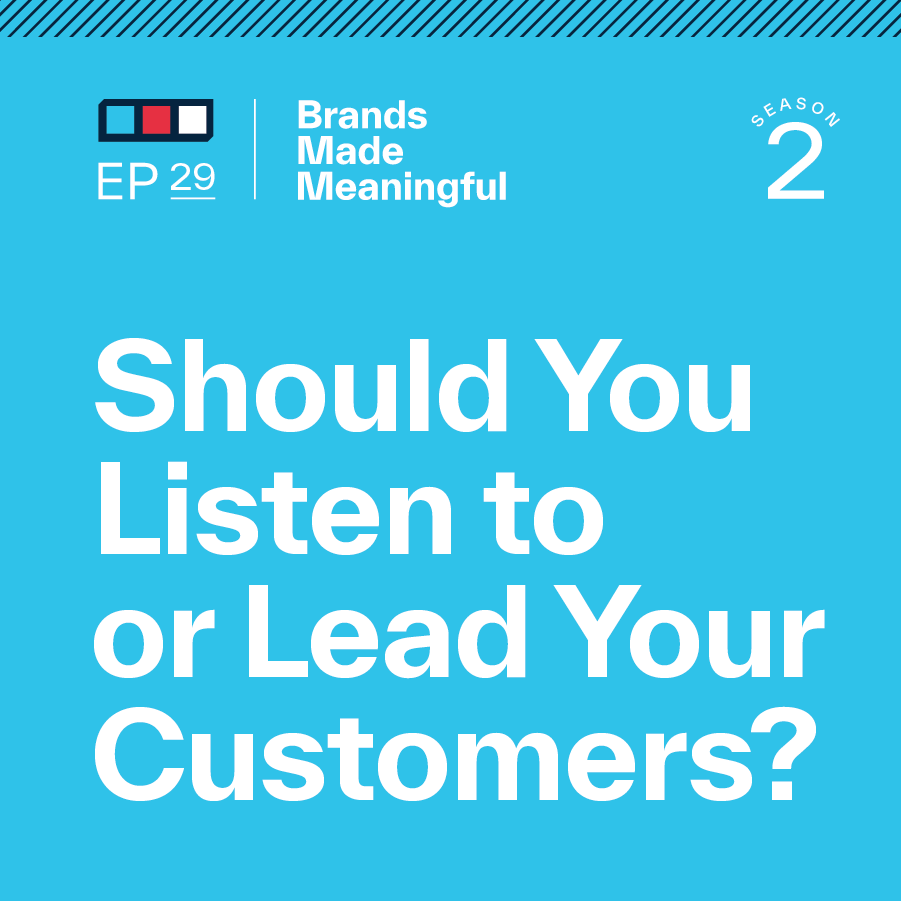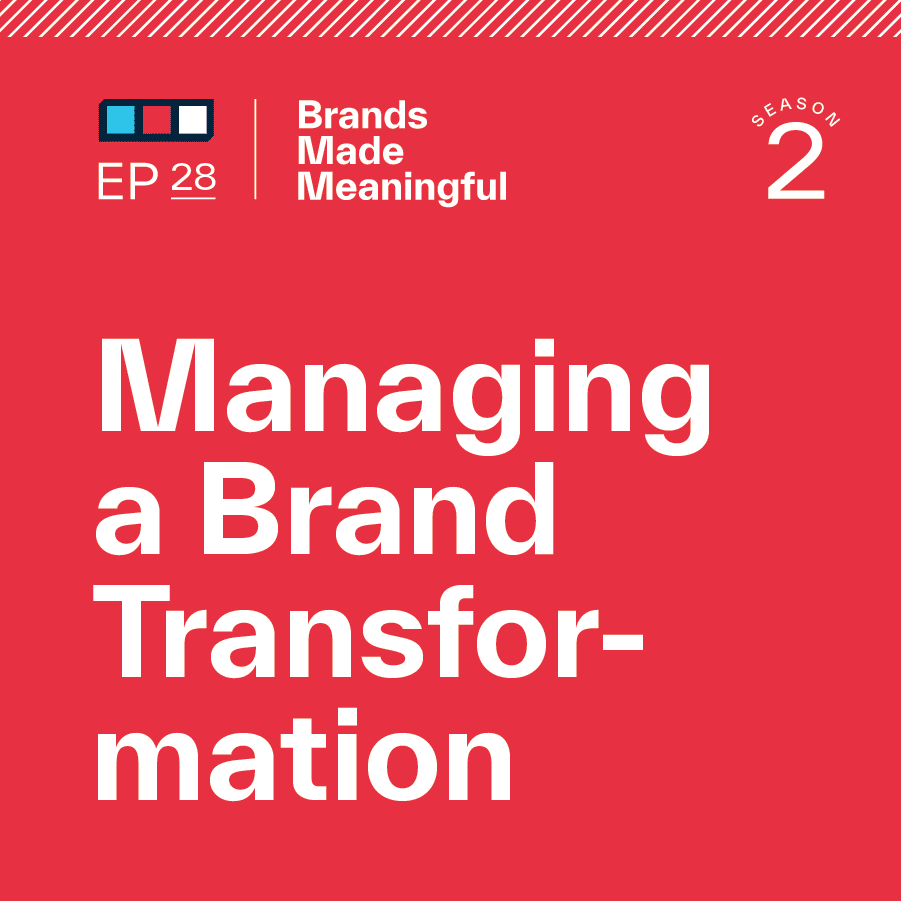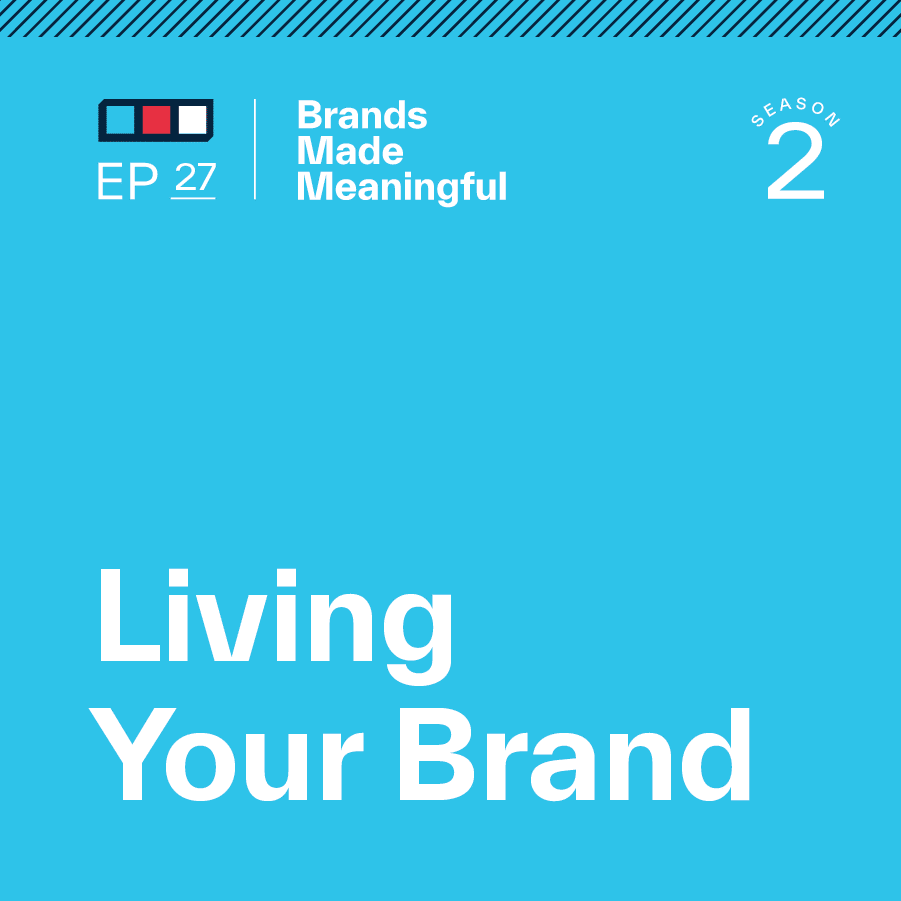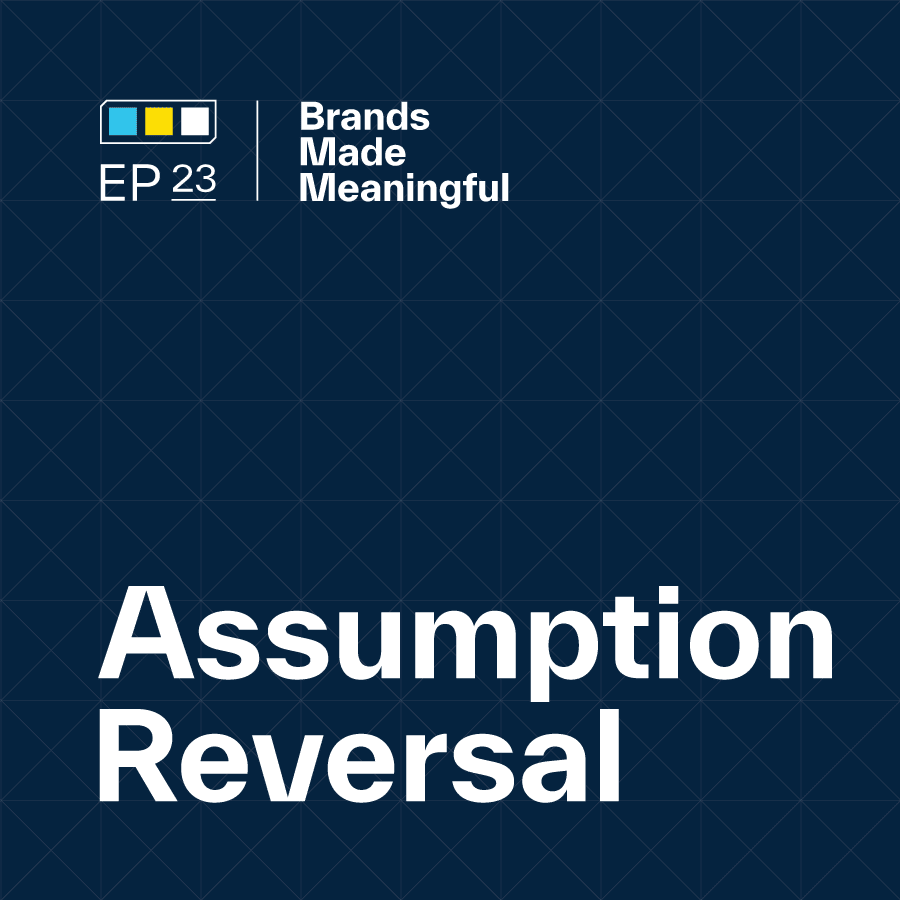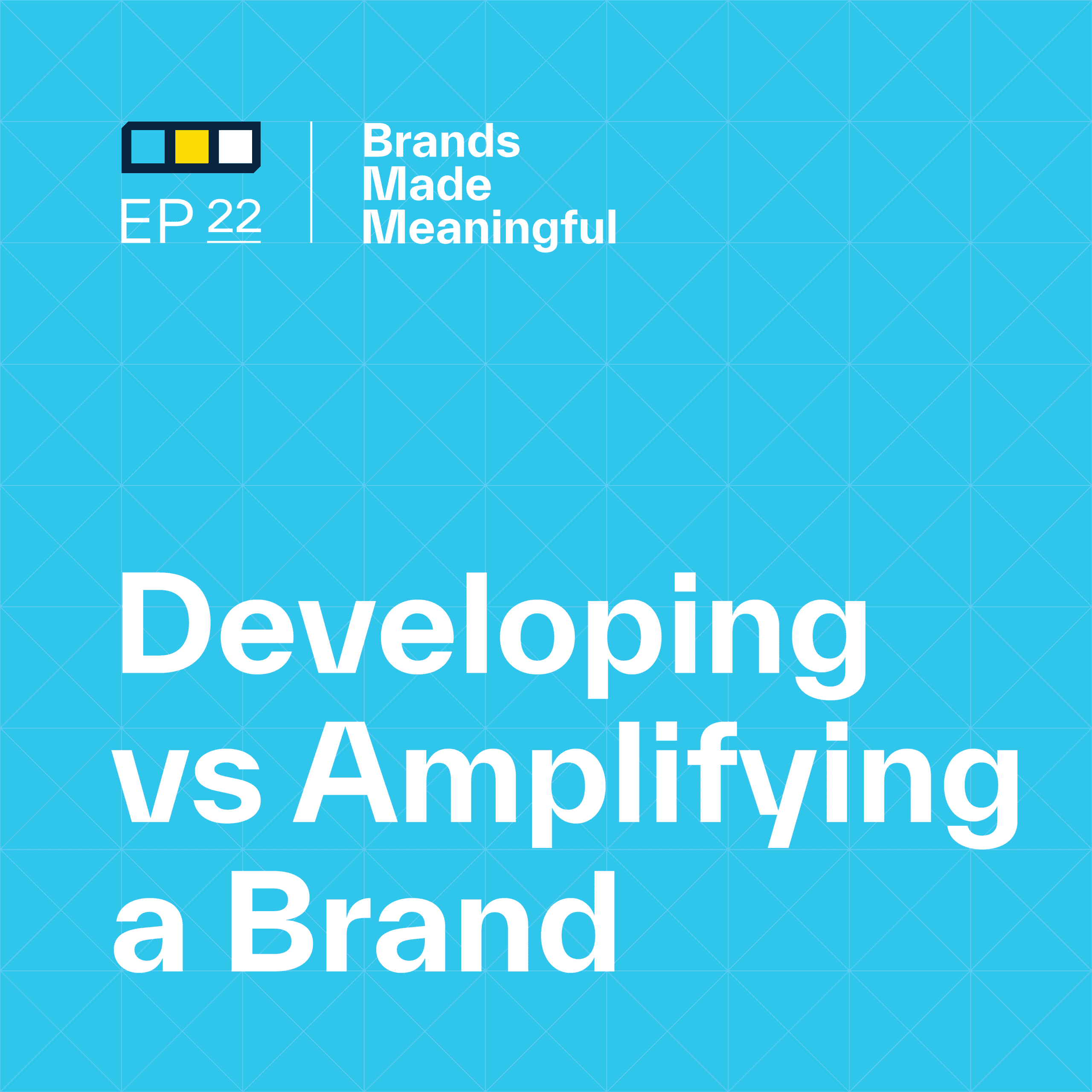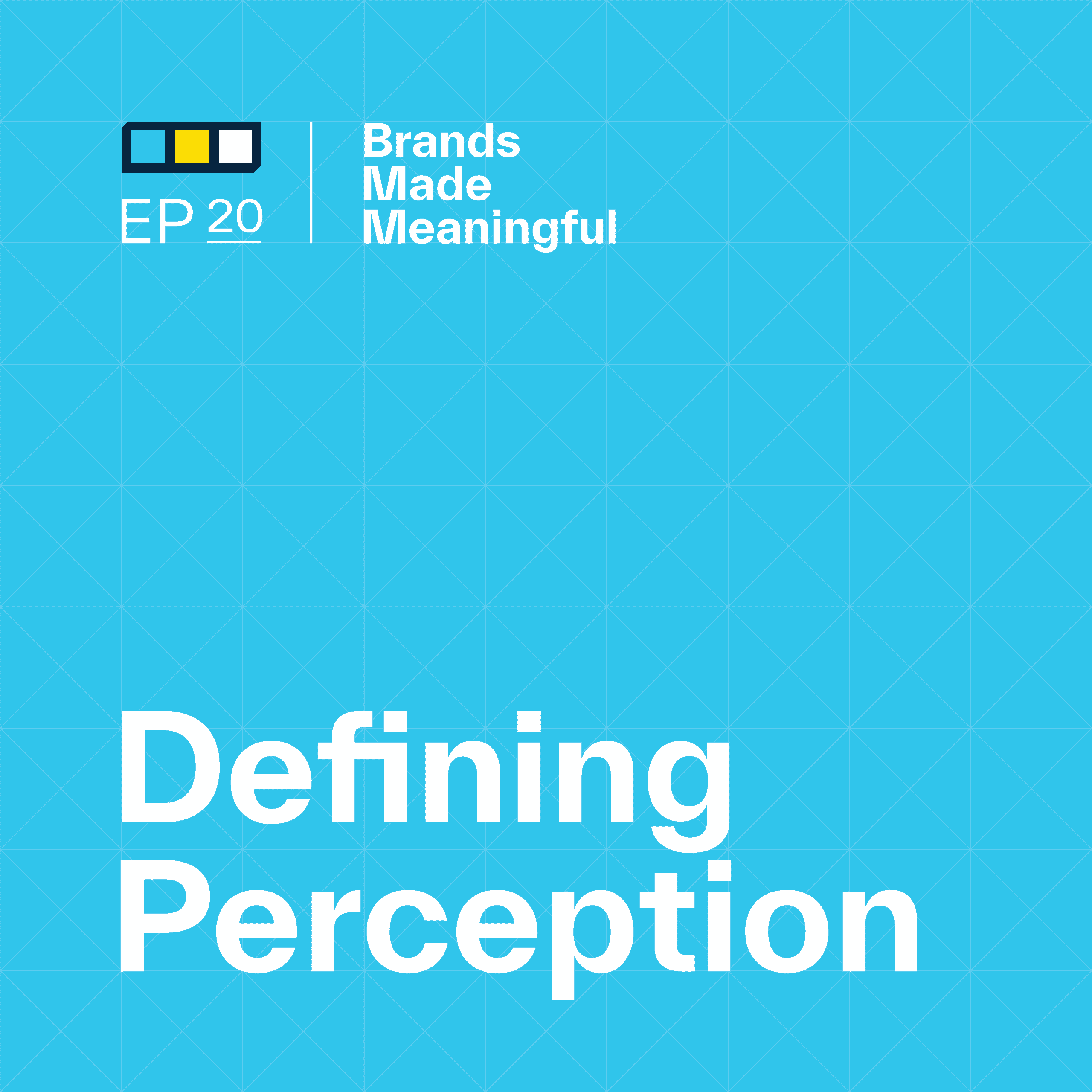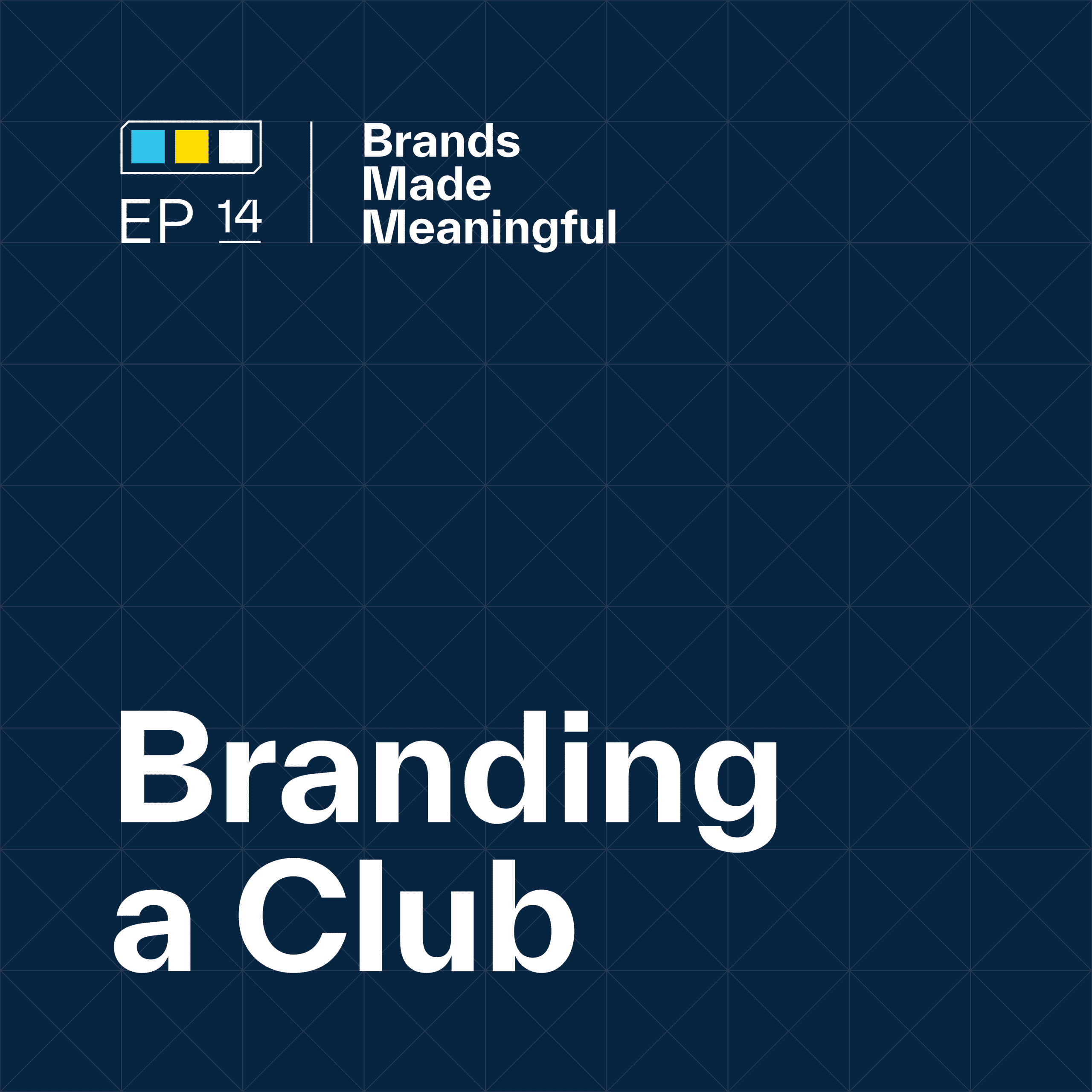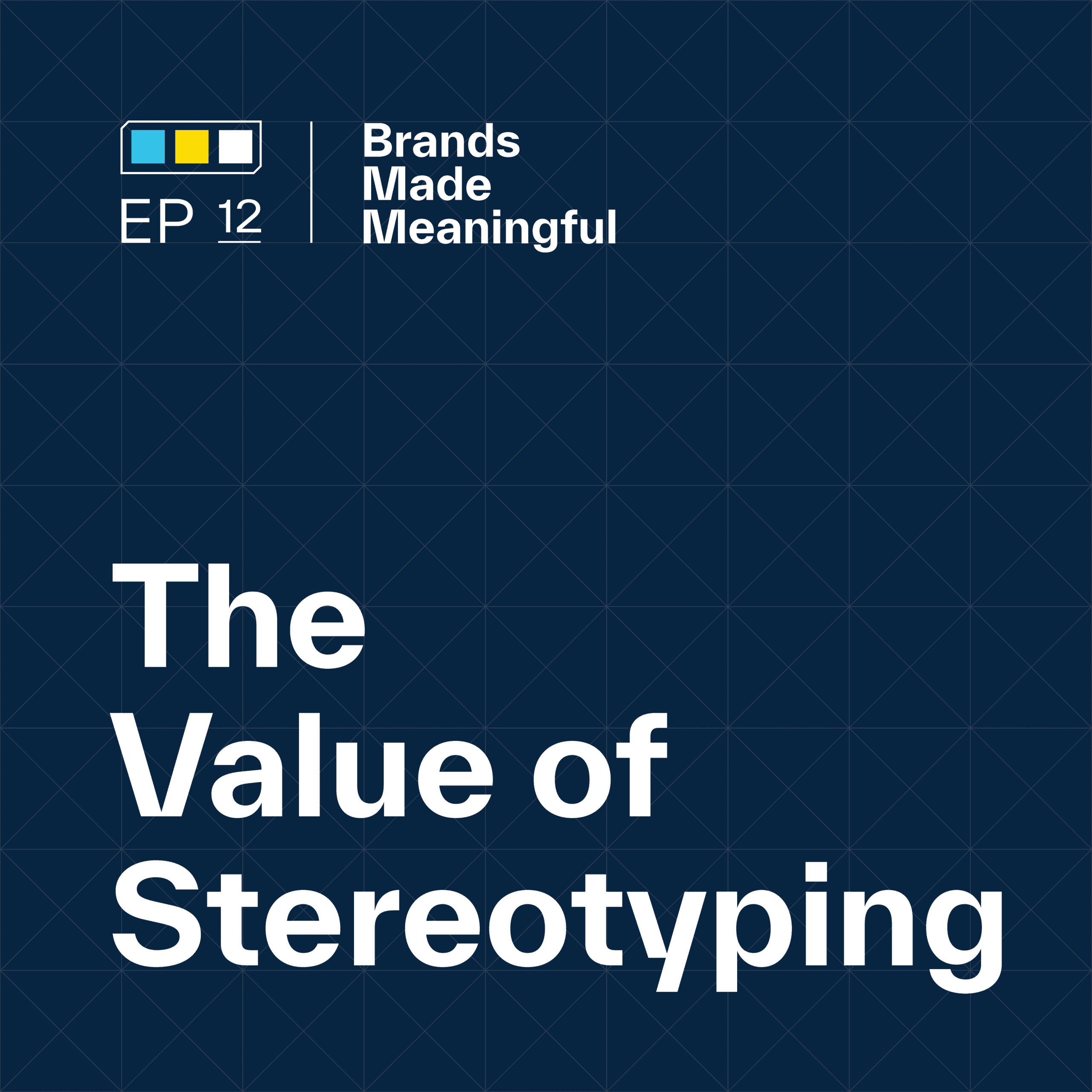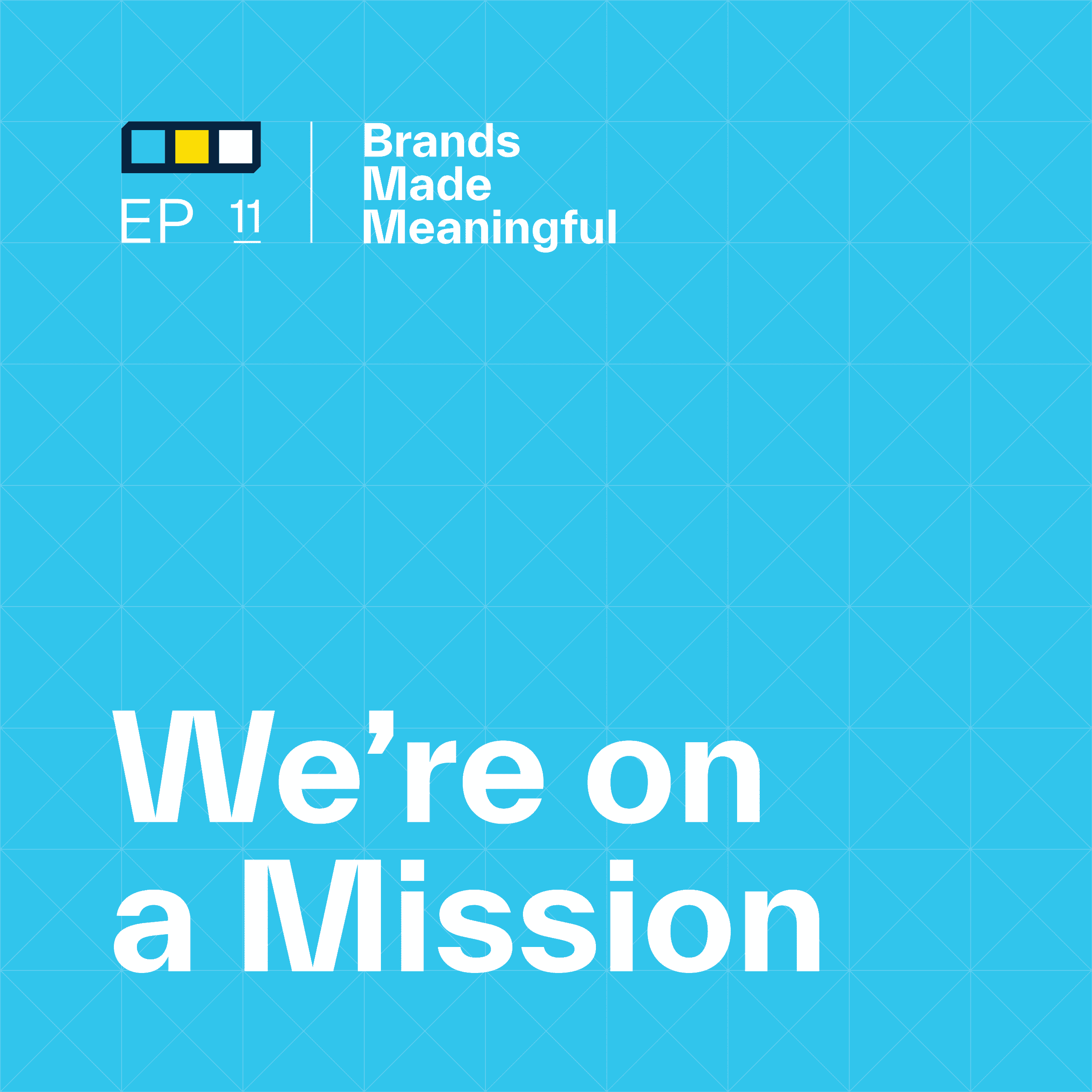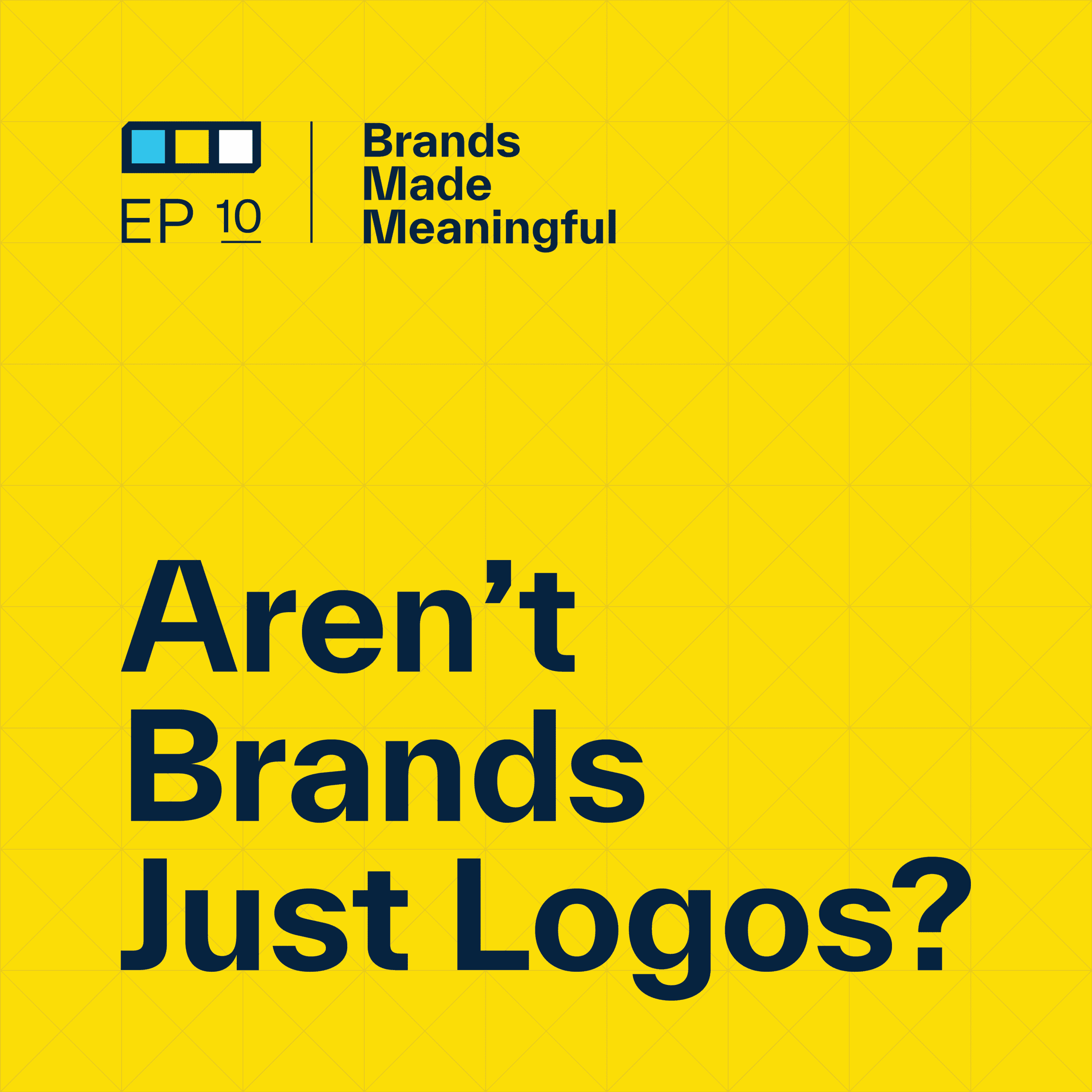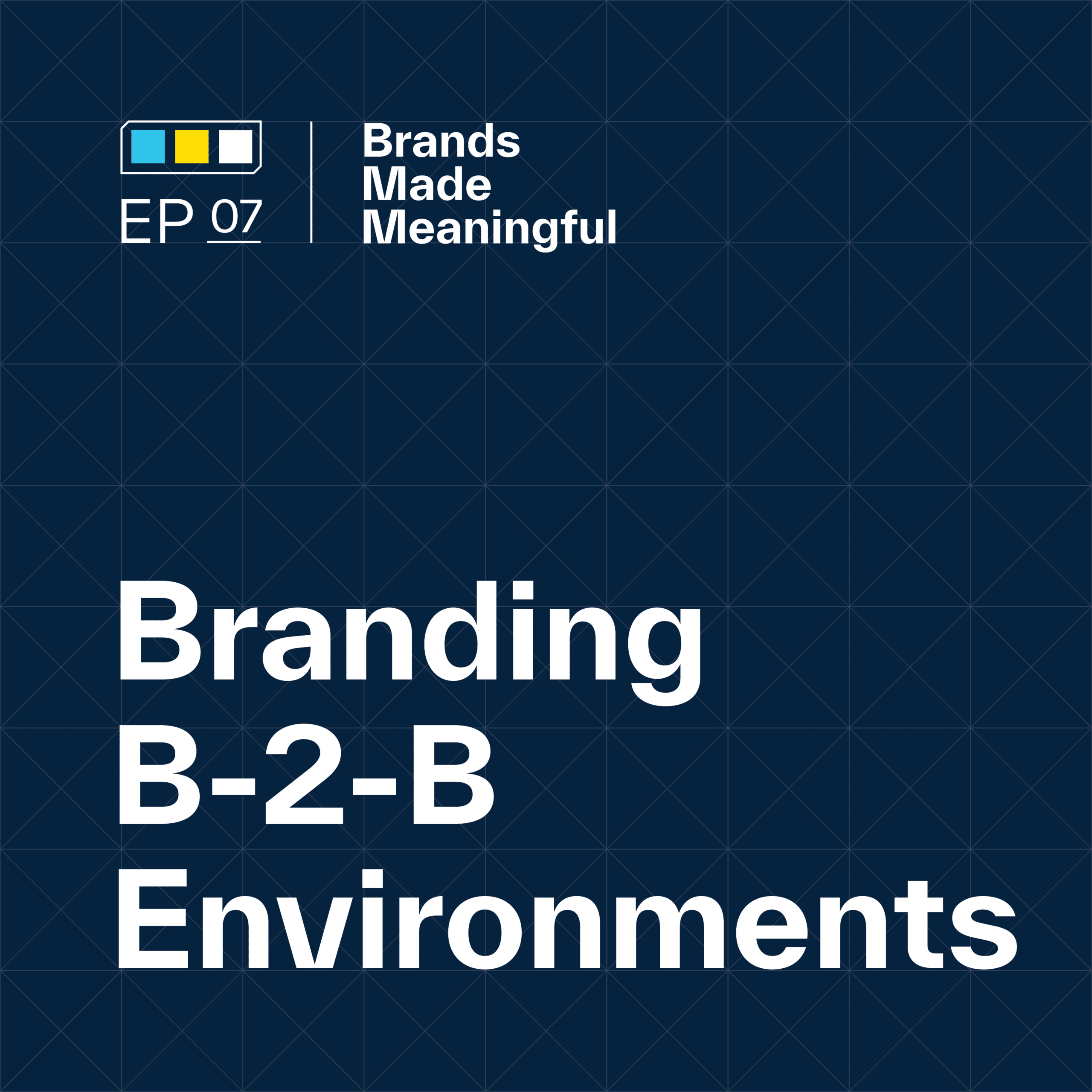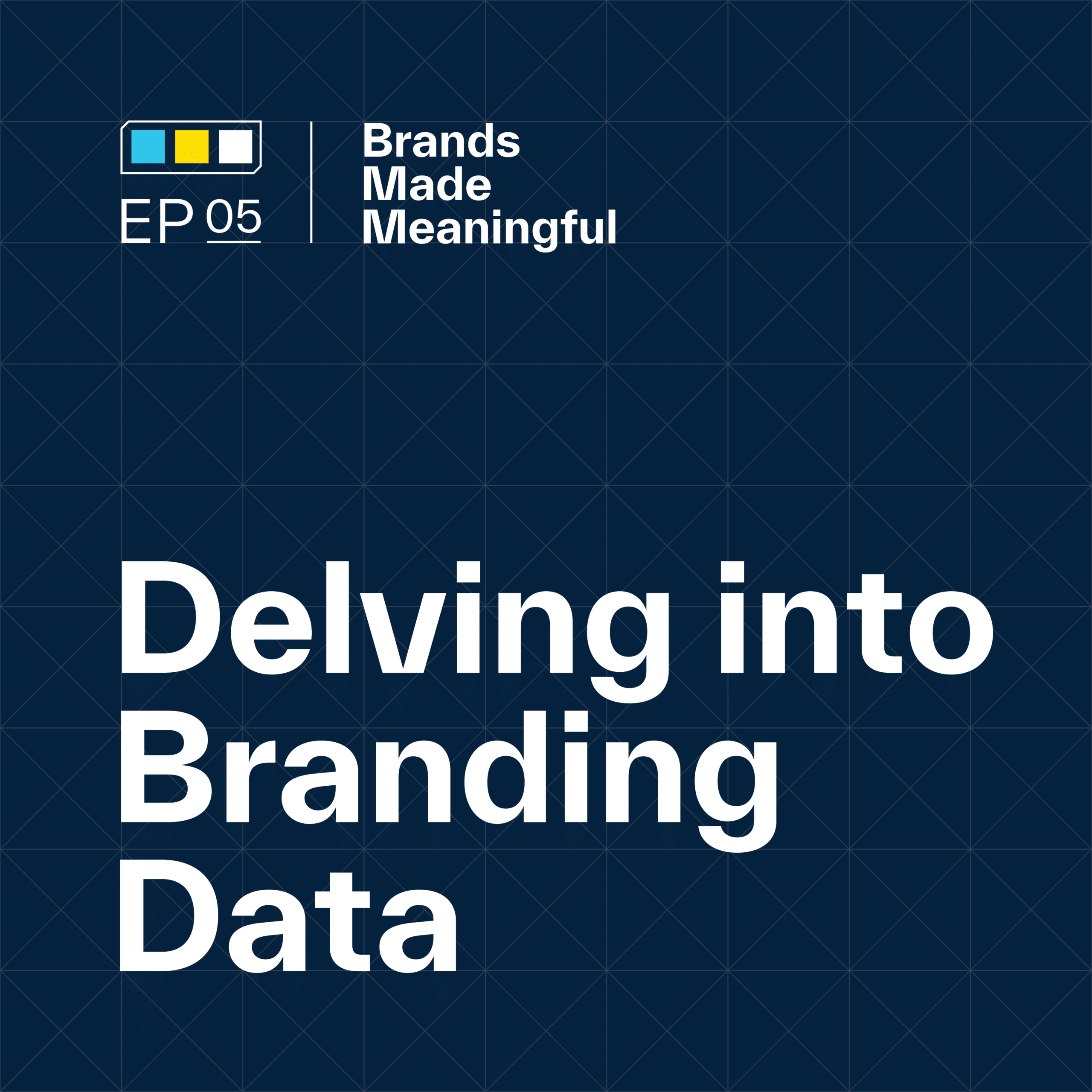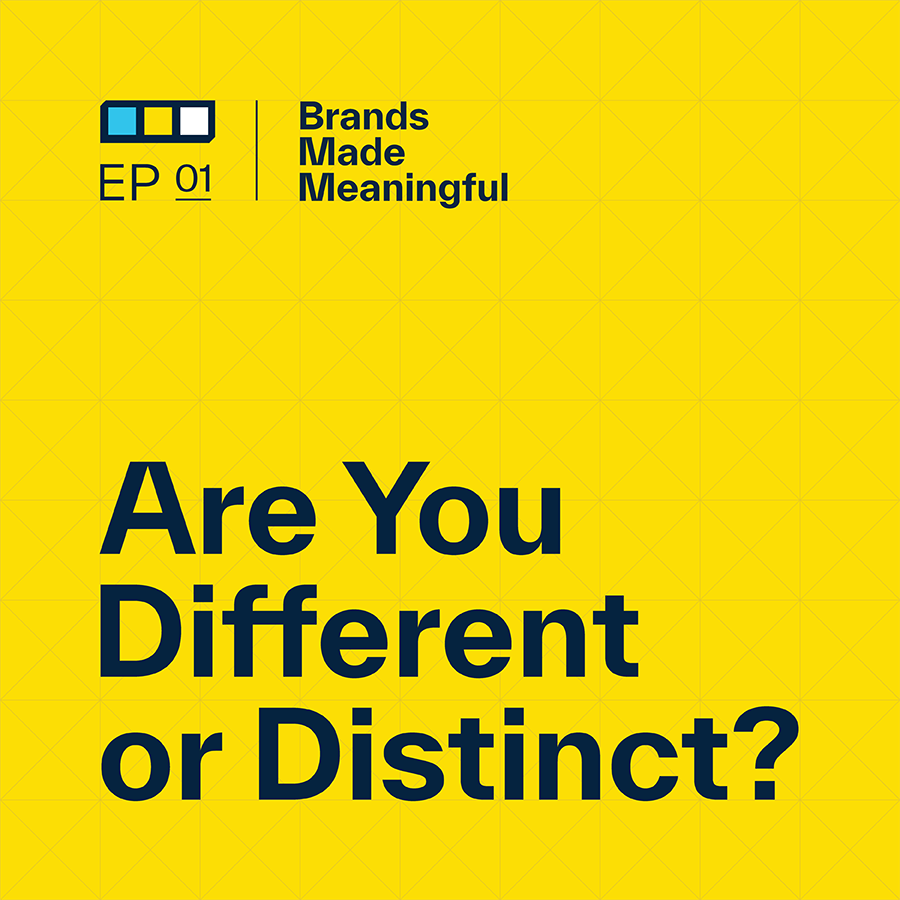EPISODE 03
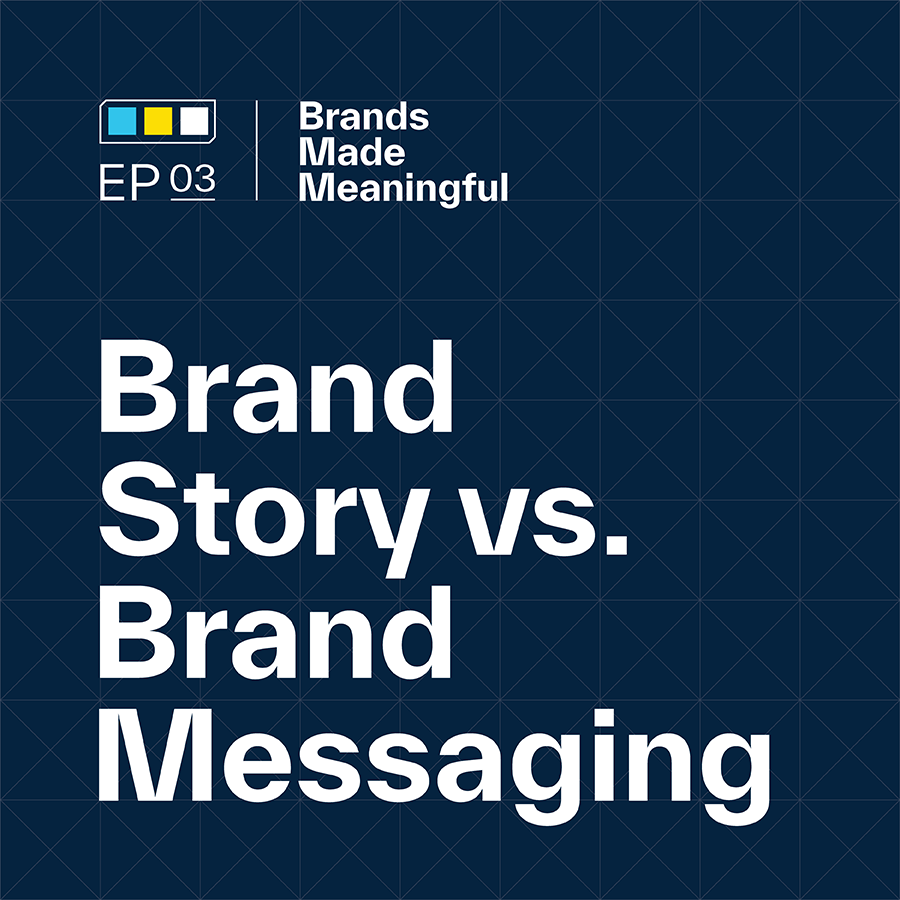
Brand Story vs. Brand Messaging
Episode 03
Your story matters.
EPISODE TRANSCRIPTION
Today, we’re talking about story versus messaging.
Tucker
What are they and what’s the difference? How do they relate to each other? Which one comes first? When you have poor messaging or a poor story for your organization, what are the things that we can talk about that maybe resonate and get you the understanding you need to say if you need to work on it or not.
Derek
In a marketing conversation, from a branding perspective, the word “story” comes up a lot. Storytelling, copy, messaging, elevator speech; the ways in which we talk about who we are and what we do. This is probably one of, if not the most common conversation that we run into when we talk to organizations.
Expand Full Transcript
Tucker
Yeah, I mean, think about all the things that an organization has to write. All those different things start becoming very tactical, very quickly. And this is where it becomes interesting for us to say there’s a big difference between your message, the pieces that you write on certain things, and your overarching story that’s supposed to lead across all of it. So I think understanding those two differences and which one inspires which can be really helpful for saying, “Oh, my messaging isn’t what I want it to be.” And it might not be because the messaging is bad, it might be because the story has faults in it.
Derek
Absolutely. So let’s define these in the way that we approach them, because most of the conversations start with the messaging component, let’s start with the story component. What is from our perspective, when we look at an organization and its brand, what is a story?
Tucker
Yeah, and your story is what your organization stands for, where it’s going and why it’s here. Those pieces can be very broad and can be very vast, but there is a hierarchy when you move across it. What are you really selling? What are you really trying to accomplish other than selling of widgets or generally just serving people?
Derek
Many people, when we asked them, “Hey, tell me your story, tell me your brand story.” They go right to how many years they’ve been in business, who founded the company, maybe even where the various locations and offices that they’ve worked out of; but that’s your history. Your your history is not your story.
Tucker
Very different, right? And when you say, “What’s your story?” to somebody in person, I’m not really asking, “Where are you from? And all those other things,” that’s interesting, but like, what’s your story? How did you get here? It isn’t necessarily OK, tell me about school or tell me about your last couple of jobs; that’s your history or your resume. And customers, they might think that’s really interesting and you can have brand advocates that love to know those things, but that’s not the first impression when they come to your website or talk to you in a sales situation.
Derek
The components of your history and how you got to where you are now are important in certain components of a conversation, depending on what it is. But in terms of what a prospective customer is looking for from you or a prospective employee who you’re recruiting to join your team; they’re more concerned with where you’re going,
Tucker
Than why you do it in the first place.
Derek
Right. The fact that you have been around and that there is some legacy, or basically proof, that what it is that you do is a viable product. You have a service in this market and this organization should have a future because it has enough of a history to prove that it’s legitimate. The story that they really want to know is where is it that you’re going? And from an employee standpoint, how can I come alongside that and be part of that? And from a customer standpoint, it’s often even as much about why you do what you do as it is about features and the benefits of the product.
Tucker
Yeah, so if this history of your company is just the features, the facts, the figures that made your company where you are today, the story of your company is using that history and pushing farther and saying, So what are the beliefs? What are the values? What are the desires that you have talked about and solved over the years? And what is that bigger answer that you’re trying to accomplish? We’re getting past these external problems that you’re solving and getting more into those internal or philosophical problems. Which sounds really squishy to most people, but that’s truly the heart of that story. So if that’s what a story is, and what we’re saying is it can be summarized by stating the business that you’re really in, do you have an example that we could use to say a story is “this,” it’s not just the messaging?
Derek
One of my favorites is a sporting goods company that we used to work with, who had a flagship product that was a really high-end, highly technical knee brace. Cutting edge, state of the art, incredible R&D. But their story wasn’t the story about the knee brace and how it was developed and the doctor that developed it in the first place. The story was also not about essentially the pain relief and the pain management that that knee brace helped the people who bought it. We sat down with the customer and through a series of conversations asking why and digging a little bit deeper. Along the way, we determined that this specific organization’s customers were people that self-identified as athletes. And this organization considered anybody who was active in any sort of way as athletic or as an athlete. So when we said, well, what is it with regards to this knee brace that these active people and athletes really want?
Tucker
Their deep desire; what are they looking for?
Derek
They’re not trying to avoid pain. What they really want is to achieve something. Whether that was one more lap around the block or a pain-free bike ride with their kids, or to win a national championship for their college or for their professional sports team. They weren’t working to avoid; they were working to achieve. And what we determined was that people want from this company, from this knee brace, from the organization as a whole, the business that they were really in was the business of confidence.
Tucker
Yeah, and when you think about that, well, what do they really want? They want to be able to do things. They want to not have pain. And I think where they started right before the project, all of their marketing and branding tactics all had just features and benefits, features and benefits-
Derek
Hinges and moisture-wicking fabric and fit and all really critical parts of the overall value proposition when placed into the right hierarchy in talking with these people. And our goal is to connect with people and help organizations connect with people on an internal level. And by internal women emotional. If you can connect with somebody emotionally and somebody associates you and your products with something that’s going to help them on an emotional level, they’re going to be more than just a one-time customer.
Tucker
Yeah, and that emotional level is really personal, right? For them to see themselves using a product and going, OK, this isn’t just going to help me relieve this, this is going to give me self-confidence. I’m all in. And that was huge for that company. They exploded with a double-digit sales increase, and they had a great response from customers.
Derek
My favorite response from them was once they leaned into telling the story of confidence, and about selling confidence through our products and weaving that into their marketing materials, messaging, and even into their product packaging. One year after relaunching their brand under that confidence banner, not only did sales go up by 20 percent, this was an organization whose primary way of selling their product, we’re in retail stores, and this was the period of time a couple of years ago where a lot of those retailers were going out of business and filing bankruptcy because everything was shifting to online and Amazon and direct to consumer. This company not only survived that transition. They had such a strong alignment with now how customers saw them and related to them that they continued impressive growth even as their sales shifted to a completely new channel for them. That’s great.
Tucker
It was incredible. So we’ve kind of defined story, and it’s super hard to define story, right? It’s this big arching thing, it’s not just a plot line; it’s something bigger than that. It’s those values, those emotions underneath that plot line. So then what is messaging? And we’ll go through this quickly because we have already given examples.
Derek
So story is rooted in strategy, and messages are tactics. Messages are the tactical components within your marketing that may include your tagline or your elevator speech, your about us paragraph, the headlines on your website, or the copy in your advertising; those are the messages that help you communicate your story.
Tucker
Yeah, and it’s using those tools that you just mentioned. It’s using the story with those tools in mind to then craft those pieces that interact with customers directly. Because your story is probably not going to interact directly with the customer, but your tagline might.
Derek
If the story is the internal guide, it will highly influence all the external communication that you do.
Tucker
Yeah, absolutely. There might be some times when you’re doing specific messaging towards a specific audience, but it should all be rooted in that story to always follow up with that. So then what would be the impact or why is this a problem if someone doesn’t have a really impactful story?
Derek
I’m thinking of a company that we talked with. We didn’t end up working with them, but we spoke with them. What they felt that they needed as a sales-minded organization was better messaging to help their sales force; messaging that would help them sell more. And this was an organization that’s in an industry that’s becoming more and more commoditized. So it’s becoming harder and harder to differentiate between what the various companies within this space do. And this person, the owner or CEO of the company, in looking for growth, (which is great, that’s the table stakes as we’re all looking to grow) but he was only looking to grow by writing more messaging, and he came to us because the messaging that they were writing wasn’t working. He hired a copywriter. He hired a chief marketing officer and they kept coming back with different campaigns and they weren’t working. So they were effectively throwing darts at a messaging dartboard and hoping that something stuck.
Tucker
And what they were really searching for was something that salespeople could use. This is a sales organization where they want to give the salespeople the tools that they need to effectively sell. And the problem was that you can’t just Band-Aid that. It’s not about writing flashy messaging. That messaging has to be rooted in something, right? So when we go to what is the impact? And we talked about that example with the sporting goods company as well. For them, it was a 20 percent increase in sales. The other side of that coin is you’re not wasting money throwing darts in other creative spaces. You’re not writing messaging over and over and over again because you’re messaging is right! Because it is you. That is why your organization’s here. It’s not like you’re guessing and it’s not like that’s going to go out of date. It’s almost the story is not timeless, but it’s much more long-term.
Derek
It’s strategic. The story gives you a strategy to guide your messaging. This means it’s going to hit that dartboard way more often and be way more likely to be effective and impactful because it’s actually rooted in something strategic and not just tactical.
Tucker
Yeah, as of right now I can think about a million examples, but let’s move into some of the other symptoms. So if one thing from that example you just shared, they have ineffective messaging; and you can’t count on it. It’s something that you always are embarrassed by or you always want to keep tweaking it or moving forward and back with it. What about other things they can look for?
Derek
Well, when people are having a new business conversation (or even at a networking event) and somebody asks you what you do and the response you give doesn’t resonate. The feedback that you’re getting is glazed over eyes or somebody turning away, because they don’t get what you do; that’s a huge red flag. Typically, we’re either way too confusing in describing what it is that we do from a messaging level, or we’re way too ambiguous.
Tucker
And then when we say resonating, give a good example of how someone could have resonated a little bit better versus someone who didn’t have a deeper story to tell.
Derek
We’re working with a customer who is launching a brand new technology within their industry. It’s phenomenal. It’s a game-changer, but because it’s new, they’re having to develop that story. Now they have the story that their parent organization is rooted in, and it’s a very strong one. But because they jump to messaging, they’re having a challenging time writing messaging that helps their customer within these really large organizations that they work with. To help that person communicate internally to their higher-ups or to procurement, or to their boss about why this product that this outside company is selling is going to be a game-changer and extremely helpful for them. So that messaging chain, we talk a lot of times when you think about your story and your messaging; of the Ripple. You have customers, but your customers might have consumers. Or your customer, (maybe an internal person, because you’re a business to business company) but then that person internally, they have to turn around and relay that message internally and that messaging chain, that message tends to get simplified, dumbed down and watered down and less effective the more that it goes, especially if it’s not rooted in story.
Tucker
Yeah, and I think that’s also a key component of understanding who the customer is and who the consumer is of that product. And figuring out if you’re messaging is for one audience, that audience might have to, in your example, turn around and restate that in a more approachable way. And that story can really help them do that. I think another example is a law firm that we’re working with and the story that they have is so impactful because normally when we think of law firms, we think of trying to protect assets, trying to shield things, it’s always on defense, always on defense; we’re trying to do that. And what about their story?
Derek
Yeah, it’s not about litigation. It’s not about advocacy. Or being a bulldog, which came up in the conversations we have. We talked with them about choice, about providing people the things that they need to control, to control their business for their partners in the law firm, to control their parts of the business, and for their clients to control their lives. And the root of the story, the business that they’re really in that we were able to uncover working with them, was all about opportunity.
Tucker
Yeah, and I love that. That’s great because it’s so much different than what you would normally think. And saying opportunity not only for those who work with us, but those who work for us.
Derek
How inspiring is that? How would you like to write messaging about litigation, protection, suing, suing somebody versus telling the story of opportunity?
Tucker
And how it relates to law, right? So then you get into the here’s their story, their stories about opportunity, and now we add the features, details, figures that then relate to how do we do that?
Derek
Yep, exactly. So ineffective messaging, messaging that’s not resonating, messaging that’s not supporting your marketing materials, marketing efforts that aren’t working is probably the most common red flag that is going to tell you you need a new story, a better story, or a story.
Tucker
So then what’s the second? We have three here, but what is the second one that we could point to?
Derek
Uninspired visuals; believe it or not, if the look, the imagery, and the way that your brand represents itself visually is not rooted in a story, then it can come across as out of date. It can come across as off track because it was designed to speak to either the wrong audience, or to no audience, instead of being designed specifically to help your organization tell that story and communicate that story visually.
Tucker
Yeah, I think that’s a good example of saying that most people when they think of stories, think of verbal stories; words. When the visuals tell almost the same or if not more “story” than anything. I mean, they really bring out a feeling in you, right? You have those emotional cues when you’re looking at something and you feel a certain way or you have a certain perception of someone, it’s a lot quicker than reading something off.
Derek
We had a customer who also was in the sporting goods space, who has again, a phenomenal product who was actually getting pressure from the retailers where they sold their products to tell a better story; visually and verbally. They’re like, we’re not selling enough of your products because of the way that you’ve presented your brand, (A), is out date and is speaking to an older audience instead of the young athletes that we’re trying to talk to, and (B), your packaging and your display and your advertising is so focused on the features and benefits of what this specific product line does that nobody knows what you stand for. Nobody knows why they need to pick your product versus the other brand that’s on the shelf right next to them.
Tucker
Yeah, I think a good example of that is then you just start going down the commodity route of saying, if we’re just competing on features and benefits, whether it’s visual or verbal, if we’re competing on that, then we’re just coming down to price. And that’s not where most business leaders want to be. What’s the third thing? This is my favorite one because it’s not obvious.
Derek
It’s one that comes up in conversations that we have with organizations who’ve determined and self-assed that they need a better story. It comes up all the time and it’s always one of the red flags, but it’s never the first thing that they think of because they’re thinking of marketing tactics. And it’s that if you’re having a hard time recruiting or keeping the people that you have on your team that you need on your team that you’ve determined are right-fit people on your team. If they’re leaving, especially for lateral moves, then you’re missing a story.
Tucker
Yeah, I think back down to rallying. If you can’t rally your team around something, then you might have a story that’s missing or a story that’s not quite there yet. This is almost every single new business call we have, we talk about their problems and then the next problems and the next problems and you get down to the, “Well, we’re also struggling trying to retain the really great employees because they seem to want to go other places, whether it’s for money or for a better culture or something like that. And it comes down to, “Oh, I didn’t know that that could affect this.”
Derek
We had a conversation recently with a company that we’ve done some work with in the past, who started the conversation by saying, “We need an updated website, we need a new website.” And what it was that they determined on their website that wasn’t working was the messaging. But through this conversation, what we learned is it wasn’t the messaging that they were telling their customers or prospects about their products and services who happened to be in an IT business. It was the lack of the story about this organization and what it stood for and why it existed and where this organization was going and the lack of that story. This colleague of ours determined, that lack of story was the likely root cause of an influx of employee turnover that they had been dealing with. People were leaving literally for the same amount of money or a similar amount of money because they didn’t know what it was and what the impact was that they had on this organization.
Tucker
And the question just comes back to what are you rallying people around? What is that banner that you’re holding up and saying either (1), here’s where we’re going; everyone, follow me. Or (2), here’s why we’re here; people come collect and rally around me. So those are the two big ways; either your purpose should be able to rally somebody or your vision should rally somebody. But those things are rooted in your story and finding that story.
Derek
Let’s just jump right into this. For us, when we have a conversation with somebody there is a core of about five foundational questions that we like to understand. That we like to have the organizations, our customers, answer with us for us to help us really understand then the story that we can help them craft. What are those questions?
Tucker So it’s, why do you exist? Where, as an organization, are you going? What do you do for customers and employees? Who do you need on your team, but who also do you serve? And then how do you make an impact? Whether that’s in the market, whether that’s in the minds of customers, whether that’s in the minds of employees, how are you making that impact? If we can answer those questions meaningfully and we almost ask those questions multiple times to get down to the root answer, right? Because the first answer is always almost never the right answer. Then those answers really help us move forward in the process of developing a good story.
Derek
Getting to the root of your story isn’t easy work. This is like a roll up your sleeves, be vulnerable, get the table stakes stuff out of the way; making money, making profit, growth goals. That’s all legitimate and necessary because we have to make a profit so that we can stay in business, but let’s get those out of the way. We consider those point-of-entry and table stakes so that then we can really start to get to the emotional drivers.
Tucker
Yep, and for most of our engagements where we do crafting of stories and building out these really meaningful answers, it’s a very frustrating process. Most of the time. Right away, we have an eight-hour workshop that we do with our customers, and those first two hours are almost like, Why are we doing this? What do you mean? What do you mean? And just keeps coming back and you just keep asking the questions and keep talking about it and it’s a long day because it’s eight hours of focus and really thinking deeper about some of these problems. But at the end of the day, almost every time everyone in the room says, “We got something good here.” This is more than selling law services, this is more than selling knee braces. We understand that now we’re here to do something way bigger that is really inspirational, not only for what the internal people are going to have, but those customers are going to really connect with something like this. That workshop day is probably the most impactful thing that we do throughout our multi-month process of rebranding or branding something.
Derek
I also think that a lot of times that core essence, the business that they are really in, that we uncover, I would say, (as you said in the first couple hours or parts of that workshop session) a lot of times we will get a little pushback from a client that says, “Well, that’s not what we’re in the business in, we’re in the business of this. We’re literally in the business of selling awards and certificates and trophies.” And our comment was, “Yep, that’s absolutely what you do. But what is it about that that there’s an emotional connection with what you do beyond customer service and good pricing and timely delivery and answering the phone?” Which, by the way, those are all important.
Tucker
Absolutely, and we come to the table with the assumption that you’re already doing those things really well. The reason why you’re at this table is not because you need help with customer service. You understand that that’s already important and you don’t need help with product development because that’s already been developed and you know, it’s a good product. So what we really try to do is, what you say is table stakes. Table stakes or an entry-level assumption is that those things are in a great place. Now, we need a story to deliver those great services to the people.
Derek
Getting this story in place, especially for a growth minded organization helps leaders nurture company culture. By knowing what that “why” is by knowing what that North Star is. It absolutely helps in articulating where you as an organization are going and where you want to go. Which guides decision-making and landing on that story then helps you create marketing materials that will be more way more compelling than not having that story.
Tucker
Yes, for sure. And I think it’s almost like getting down to a nice base where then you can pull those elements and the story and that guides so many different things it becomes easier. I mean, it becomes easier to redo your website when you have a clear story and you know what an audience needs to be told and when. And it makes it easier to create marketing materials, and it makes it easier to write out headlines
Derek
And it helps you differentiate.
Tucker
It helps you differentiate!
Derek
Even if what you do is similar to somebody else in your market space, why you do it is different. What you stand for is unique. The people in your organization are unique. And so let’s tell that story to help give people a reason to choose you over somebody else that’s in that space who does something that at an outside glance might feel so important.
Tucker
Exactly.
Derek
Why does somebody choose Patagonia over North face?
Tucker
Yeah, even though they might have similar products and they have all these things; they have a different belief, maybe similar beliefs, but their stories are different. And that’s what makes the key difference in the minds of the consumers. And the hard part about a story is it’s all about this internal thought and perception and angle that you’re speaking to someone. It’s hard to measure those things, but it’s been proven time and time again, even as you said earlier that that one client had 20 percent increase in sales year over year. It’s not the only thing that was done, but it was a big part of, “Look, now we have a story. Now let’s go get after it.” So it’s about creating a story, giving it to your salespeople, giving it to your marketing team, supplying them with what they really need as inspiration and as guidance to create really, really great work for the organization long term.
Derek
Be careful not to be solving for the short term. Throwing more money at an employee turnover problem might fix it, throwing more money at an agency to just write a whole bunch of more messaging without having been rooted in anything but to just keep trying things over and over, that absolutely can work on occasion, but it’s not sustainable.
Tucker
Yeah, and I think that’s where when we talk about finding the root of all of this stuff, it’s when you get down to that story, that is the foundation which everything else should be built off of. So if you don’t have that, then spending money on all those other things isn’t going to help you in the long term. And I know that that should be the goal for everyone.
Derek
Yep, it’s almost a go slow to go fast, get the story and the strategy in place, then, go ahead and rock it and crush it with all the marketing.
Tucker
We say it all the time to people getting into this process, where you have to take one step back to sprint forward and it makes it easier in the long run.
Derek
Love it. Until next time. Thank you.
More Episodes Like This
Taking Care of the People Who Take Care of PeopleEpisode 90
Derek and Tucker are joined by Craig Pratt, co-founder and board chair of the nonprofit organization Holes Fore Hope.
Reviving New Member InterestEpisode 89
Derek and Tucker explore options for generating interest among prospective members and inspiring them to join your club.
Brand Through the Eyes of a Club Manager & Consultant with Chris CoulterEpisode 88
Chris Coulter, Vice President of Club Consulting with the McMahon Group, joins Derek and Tucker to discuss the intersection of branding and consulting in private clubs.
Evolving Member ExpectationsEpisode 87
Derek and Tucker dive into the differences between generational club members, their wants and needs, and how to balance out expectations across the board.
Winning the Talent Game with Tom WallaceEpisode 86
Tom Wallace of Kopplin, Kuebler, & Wallace joins Derek and Tucker to discuss the importance of a club’s brand in hiring and retaining right-fit employees.
Reclaiming Reputation Through Brand RevitalizationEpisode 85
Derek and Tucker discuss the potential that a branding initiative can have to restore a club’s reputation.
Branding The Club with Don KovacovichEpisode 84
Don Kovacovich, GM of The Club at Golden Valley, joins Derek & Tucker to discuss the impact that rebranding has had on his club and the opportunity it presents for other clubs
Changing a Club’s Membership ModelEpisode 83
Derek and Tucker discuss key considerations and challenges when changing your club’s membership model.
Connecting a Club with its Story with Jackie CarpenterEpisode 82
Derek and Tucker are joined today by Jackie Carpenter, author of People First.
Branding a Club AnniversaryEpisode 81
Derek and Tucker discuss the unique opportunity presented by milestone and anniversary dates for private clubs.
Private Club Storytelling with Ricky L. Potts, Jr., CCMEpisode 80
Derek and Tucker have the pleasure to speak with Ricky L. Potts Jr. about how powerful storytelling can be for your club members.
Opportunity in Club Facility RenovationEpisode 79
Derek and Tucker discuss pivotal key moments in your legacy and how to transform your story through renovation.
The Evolution of Club Members with Jon LastEpisode 78
Derek and Tucker are joined by Jon Last from Sports & Leisure Research Group to discuss the evolution of club members.
Member Branding vs. Product BrandingEpisode 77
Derek and Tucker discuss the challenges their client's have moved through when approaching differing styles of branding.
The Role of a Private Club's LogoEpisode 76
Derek and Tucker take a look back on private club logos they've designed over the years and explain the strategic reasons behind their choices.
Club Brand GovernanceEpisode 75
Derek and Tucker divulge the steps to evolving your brand while retaining your core values.
Seasonal Member MerchandiseEpisode 74
Derek and Tucker take a look at crafting specific merch to celebrate landmarks and special times of the year.
Who is Sussner?Episode 73
Derek and Tucker take a break from talking shop to talk about who they are and what they stand for.
Club Identities Beyond AmenitiesEpisode 72
Derek and Tucker discuss what it takes to stand out in unique ways for your club.
Little Things Mean EverythingEpisode 71
Derek and Tucker take a look at the often missed and easy to overlook.
Build Flexible Brand SystemsEpisode 70
Derek and Tucker break down the building blocks for long lasting branding.
The Club at Golden ValleyEpisode 69
Derek and Tucker take a close look at one of their recent rebrands.
When to Launch a Club RebrandEpisode 68
Derek and Tucker break down how to find the perfect timing when launching a club rebrand.
Steps to Launching a Club RebrandEpisode 67
Derek and Tucker break down the steps to take and the reasons why you should consider a club rebranding.
Brand Marketing vs. Brand DesignEpisode 66
Derek and Tucker define the line between marketing and design and how they intersect to inform one another.
Building Brand GuidelinesEpisode 65
Derek and Tucker show us how to build infrastructure guidelines to unify your brand experience across the board.
Club Identity SystemsEpisode 64
Derek and Tucker cover what Identity Systems entail and how to discern between internal and external methodologies.
Navigating Branding With a BoardEpisode 63
Derek and Tucker bring clarity to uniting your company under one cohesive vision.
Putting a Committee TogetherEpisode 62
Derek and Tucker assemble your need-to-know facts when putting together your committee.
The Guiding Principles of Private ClubsEpisode 61
Derek and Tucker go over the top ways private clubs can find the balance between pleasing old members while attracting new ones, all while making moves towards the future.
How Color Affects PerceptionEpisode 60
Derek and Tucker cover how to best convey your business with color.
Brand EcosystemsEpisode 59
Derek and Tucker break down how to craft effortless experiences when considering your brand as a whole.
6 Types of Brand TransformationEpisode 58
Derek and Tucker dive into 6 distinct types of transformations for a wide range of brands.
Tournament Branding For ClubsEpisode 57
Derek and Tucker discuss designing and delighting your club members with tailored events.
Brand Promoters & DetractorsEpisode 56
Derek and Tucker discuss how high level promoters increase your NPS and how to turn the tides on your detractors.
The Loudest Voices in the RoomEpisode 55
Derek and Tucker talk about gathering feedback while prioritizing every voice.
Determining A Primary AudienceEpisode 54
Derek and Tucker discuss if and when you should be honing in on your audience vs. casting as wide a net as possible.
Branding For ExclusivityEpisode 53
Derek and Tucker discuss the intricate process of naming your brand.
Measuring Brand SuccessEpisode 52
Derek and Tucker discuss how we measure our success in branding and a few key KPIs that help us understand our impact.
Branding For ExclusivityEpisode 51
Derek and Tucker breakdown how brands can create the perception that they are exclusive and only for a certain type of consumer.
What Makes A Brand SurprisingEpisode 50
Derek and Tucker break down the Sussner formula that we believe leads to a surprising brand.
Breathe Life Into Brand TraditionEpisode 49
Derek and Tucker discuss the intricacies and common pitfalls of branding for Private Golf Clubs.
They Key of Visual DifferentiationEpisode 48
Derek and Tucker break down the importance of differentiating your brand on a visual level.
Branding For Private GolfEpisode 47
Derek and Tucker discuss the intricacies and common pitfalls of branding for Private Golf Clubs.
Dealing With An Identity CrisisEpisode 46
Derek and Tucker breakdown how to identify and remedy a brand's identity crisis throughout thoughtful and intentional brand management.
Branding vs MarketingEpisode 45
Derek and Tucker discuss the differences between Branding and Marketing and how to make the two compliment each other.
Build Your Brand's FoundationEpisode 44
A brand's foundation is a critical element in being successful in the long-term.
Building a Constructive Branding ProcessEpisode 43
Derek and Tucker break down the steps required to build the most constructive and meaningful branding process.
What Makes a Brand Relevant?Episode 42
Relevance is a key piece of a brand's identity for creating clarity and connection.
Your Right to WinEpisode 41
Derek and Tucker discuss the “Right to Win” and the odds of your brand's success within your target market.
An Intro to Sub BrandingEpisode 40
Derek and Tucker discuss the nuances of developing sub-branding and strategies.
Conquer Branding FearsEpisode 39
Derek and Tucker dive into how to overcome the fear of change and the nature of constant refinement of your brand.
Balancing Strategy & DesignEpisode 38
Great strategy is a necessary foundation for great design—and great design brings great strategy to life.
Branding PrioritiesEpisode 37
Branding priorities are the actions and initiatives that shape or enhance a brand's identity, perception, and market position.
Invest in Your BrandEpisode 36
Investing in your brand benefits your company as a competitor in the marketplace, builds trust with customers, increases perception of quality, and drives employee engagement.
Why is Positioning Scary?Episode 35
Narrowing the brand's position is really a strategic decision to focus the brand's offerings, messaging and target audience on a specific niche or segment within the market.
What Are Brand Consultants?Episode 34
Derek and Tucker discuss the importance of hiring expertise with a wider breadth of knowledge than just visuals.
Hire for Brand FitEpisode 33
Hiring people that fit your brand is key in order to maintain brand authenticity, positive culture, and consistent messaging.
Your Brand’s Stance MattersEpisode 32
Your stance can help define your brand from a core level and make branding, hiring, and marketing not only easier, but more meaningful.
Levels of Executing a Brand RefreshEpisode 31
If you have a brand strategy in place, how do you execute it?
The Role of Features & BenefitsEpisode 30
Derek and Tucker discuss the importance of features and benefits within the context of branding, selling, and marketing your products and services.
Should You Listen To or Lead Your Customers?Episode 29
Within the challenge of any rebrand is the challenge of managing customers' perception of change.
Managing a Brand TransformationEpisode 28
Episode 28 discusses the highlights and challenges of rolling out a new brand, both internally and externally.
Living Your BrandEpisode 27
Your brand is not this shiny trophy on the shelf. It is something that you are molding every single day.
What Makes a Brand Authentic?Episode 26
Season 2 starts off with a discussion about building authentic brand experiences, both internally and externally.
Reviewing your Competition's CreativeEpisode 25
Derek and Tucker discuss the process of reviewing your competitors' creative strategy to better position your brand within the market.
Interviewing your Audience for InsightsEpisode 24
This episode details the process and benefits of interviewing your audience as part of the branding process.
Assumption ReversalEpisode 23
Derek and Tucker discuss how we change our thoughts and get into a different mindset to refine and revise our branding.
Developing vs. Amplifying a BrandEpisode 22
Another way to say it is, development is building and crafting your brand story, and amplification is then telling it.
Refreshing a Sporting Goods BrandEpisode 21
This episode shares the steps behind Sussner’s work in refining the Shock Doctor brand.
Defining PerceptionEpisode 20
Derek and Tucker discuss the positive and negative impacts of brand perception.
What is a Brand?Episode 19
Derek and Tucker discuss what defines a brand and what makes them successful.
Branding Golf Courses vs Golf ClubsEpisode 18
Derek and Tucker further hone in on golf course design.
Refreshing a Golf CourseEpisode 17
Derek and Tucker discuss the bar for golf course design – and how to push past it.
Let’s Talk Taglines Episode 16
Derek and Tucker talk taglines in today's episode.
Refreshing an Athletic DepartmentEpisode 15
Derek and Tucker sit down today to discuss what logos mean within branding.
Branding a Club Episode 14
Derek and Tucker discuss how to brainstorm branding a club.
An Intro to Internal Branding Episode 13
Derek and Tucker discuss the power behind internal branding.
The Value of Stereotyping Episode 12
Derek and Tucker sit down today to discuss the meaning of stereotyping within the branding world.
We’re on a Mission Episode 11
This episode digs into the rallying cry for the greatness your team is going to accomplish.
Aren’t Brands Just Logos? Episode 10
Derek and Tucker sit down today to discuss what logos mean within branding.
The Business You Are Really In Episode 09
Derek and Tucker sit down today to discuss how to discover what business you are really in to better understand your mission statement.
Clarity of Vision Episode 08
Derek and Tucker discuss the importance of looking ahead towards the big picture to better hone the purpose behind what we do in the now.
Branding B-2-B Environments Episode 07
Derek and Tucker discuss the Branding of Spaces.
It’s All in the Name Episode 06
Derek and Tucker discuss what a name can say - and not - about your company.
Delving Into Branding Data Episode 05
Derek and Tucker jump into the discovery phase of branding before it hits the drawing board.
Content Made Meaningful Episode 04
Today Derek and Tucker discuss the concepts within content and its common misconceptions such as the phrase "Content is King."
Brand Story vs. Brand Messaging Episode 03
Your story matters.
Visuals That Take The Cake Episode 02
Derek and Tucker sit down to discuss visual impact and what that could mean for your brand.
Are You Different or Distinct? Episode 01
It's not about being the only option, it's about being the right option. Join Derek and Tucker as they discuss Differentiation & Distinction.



